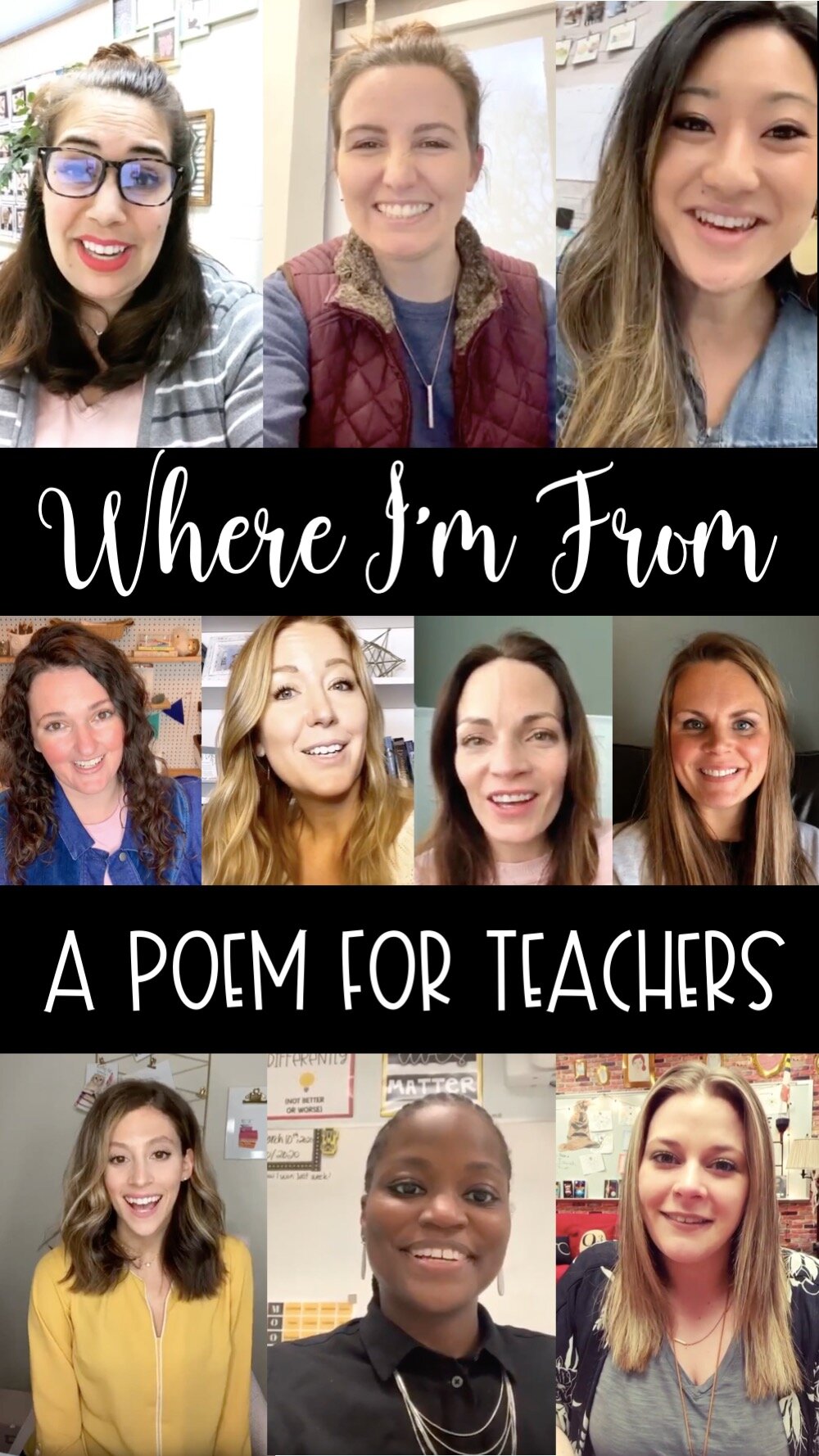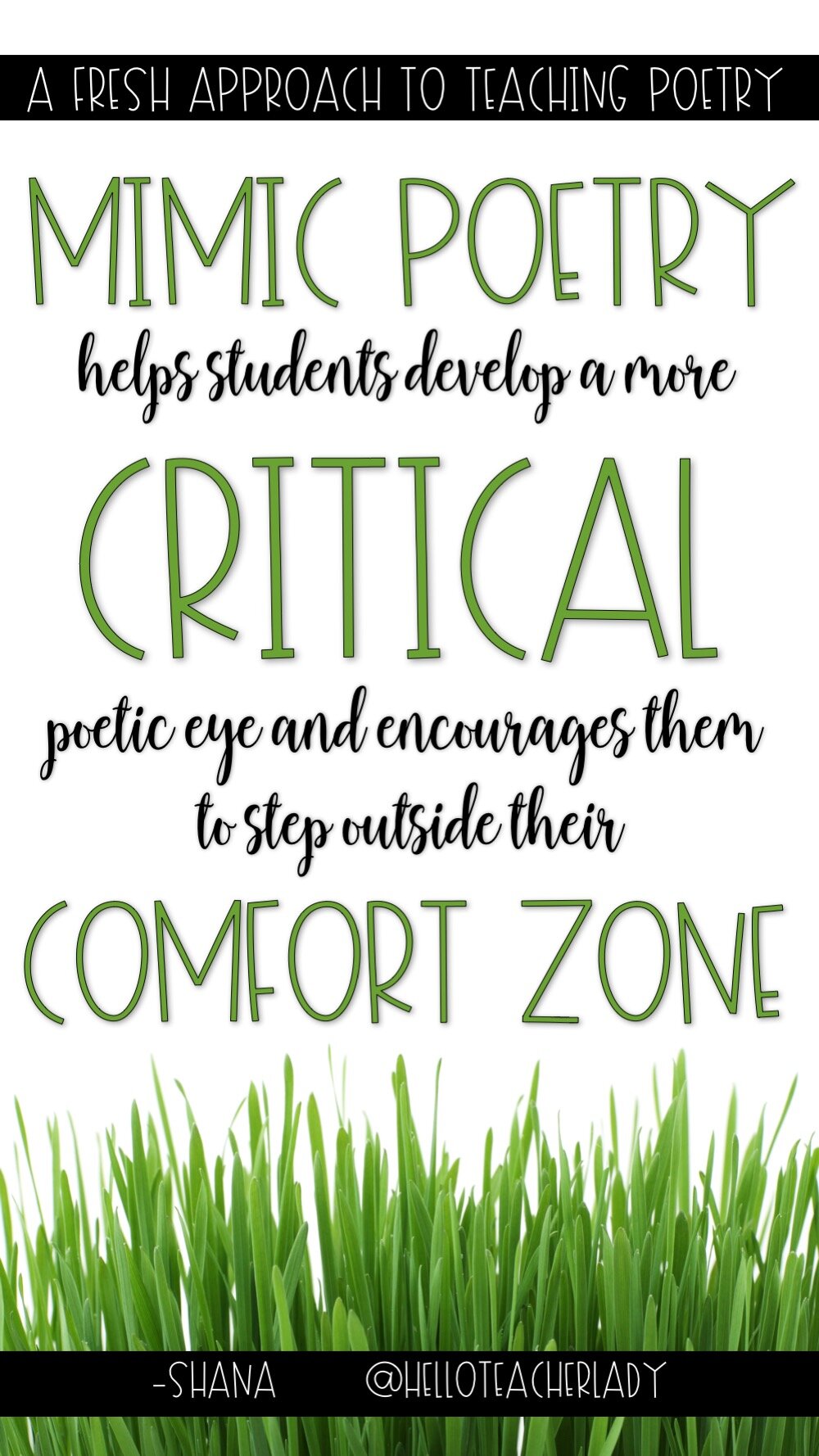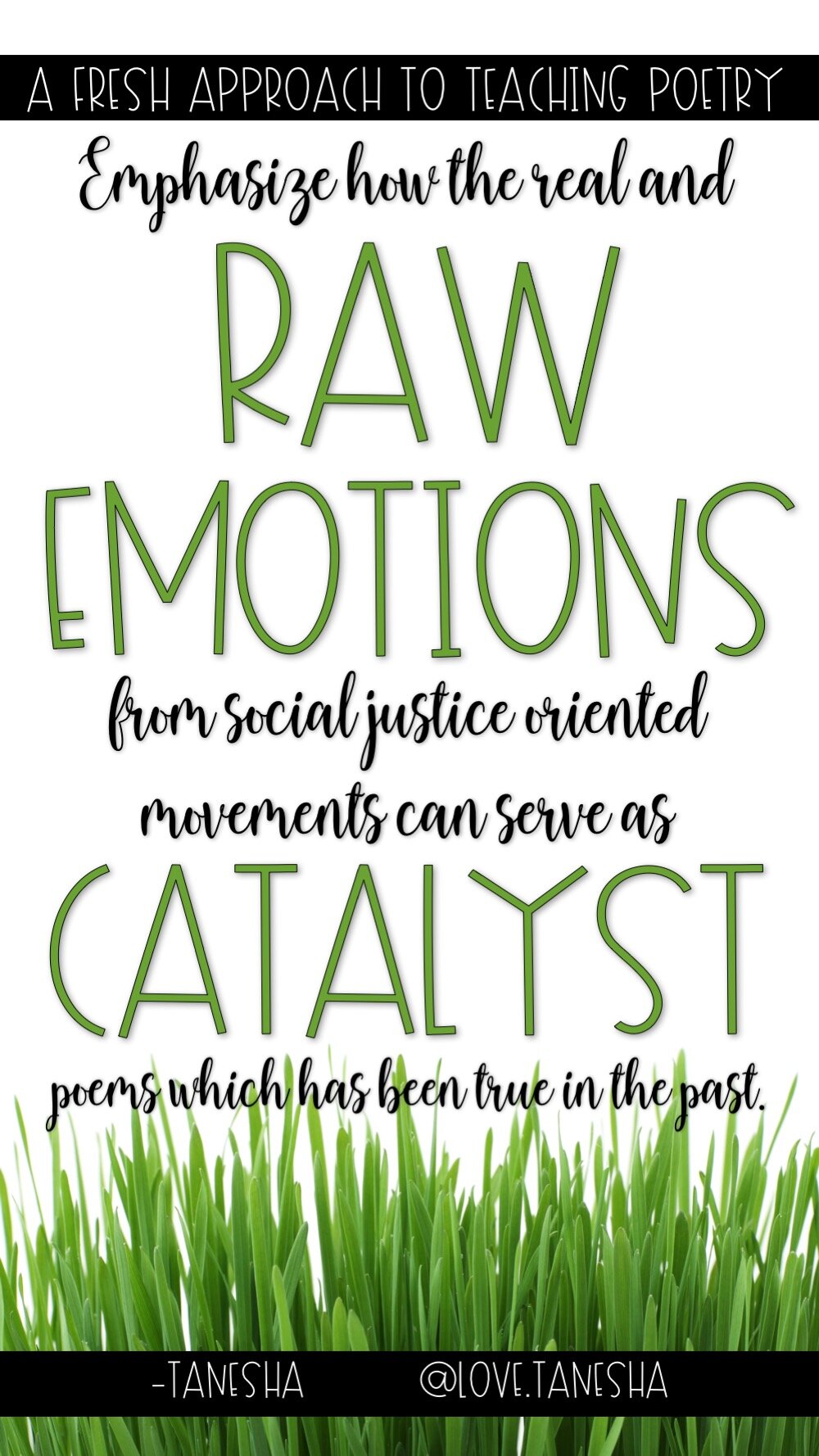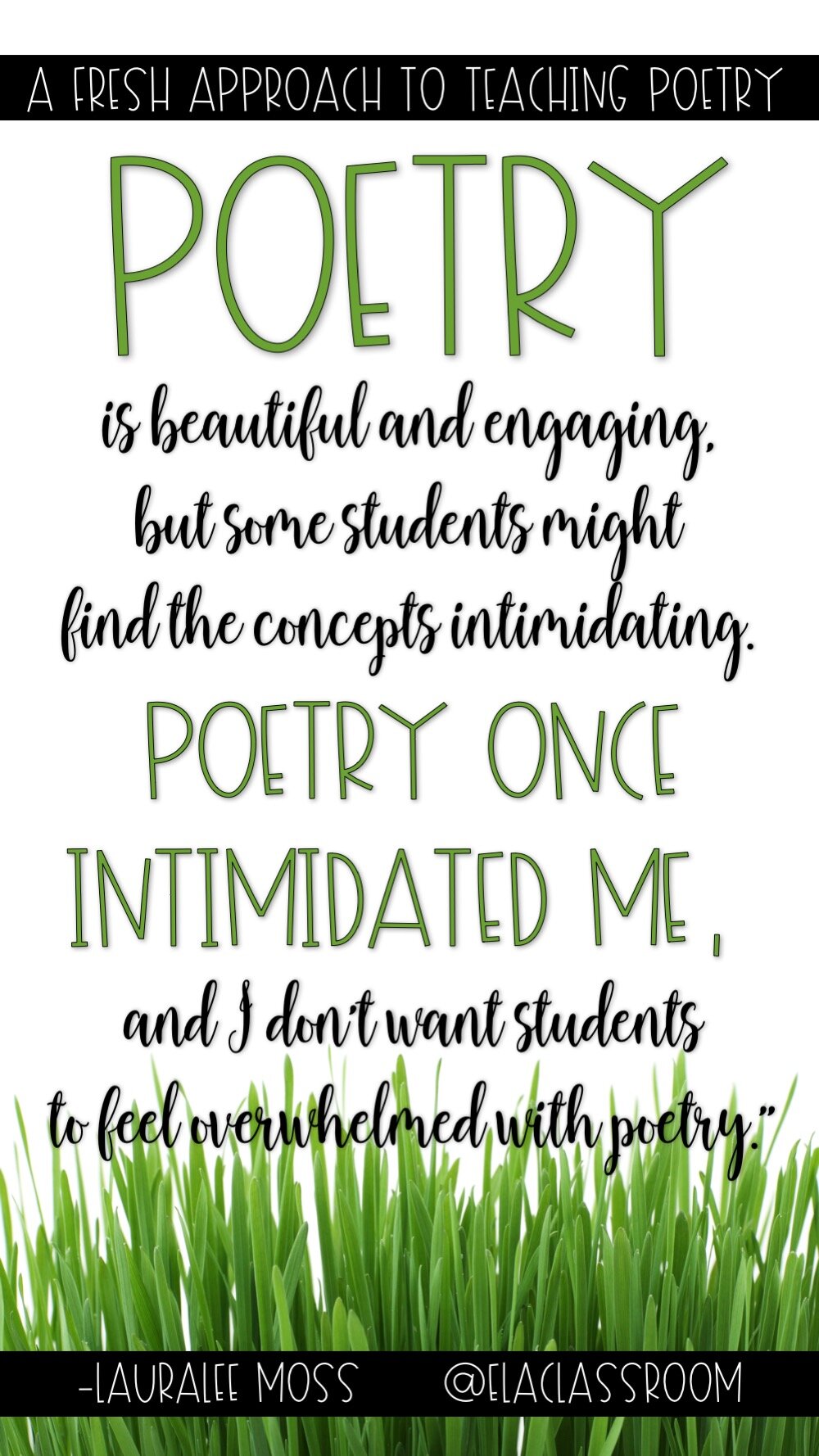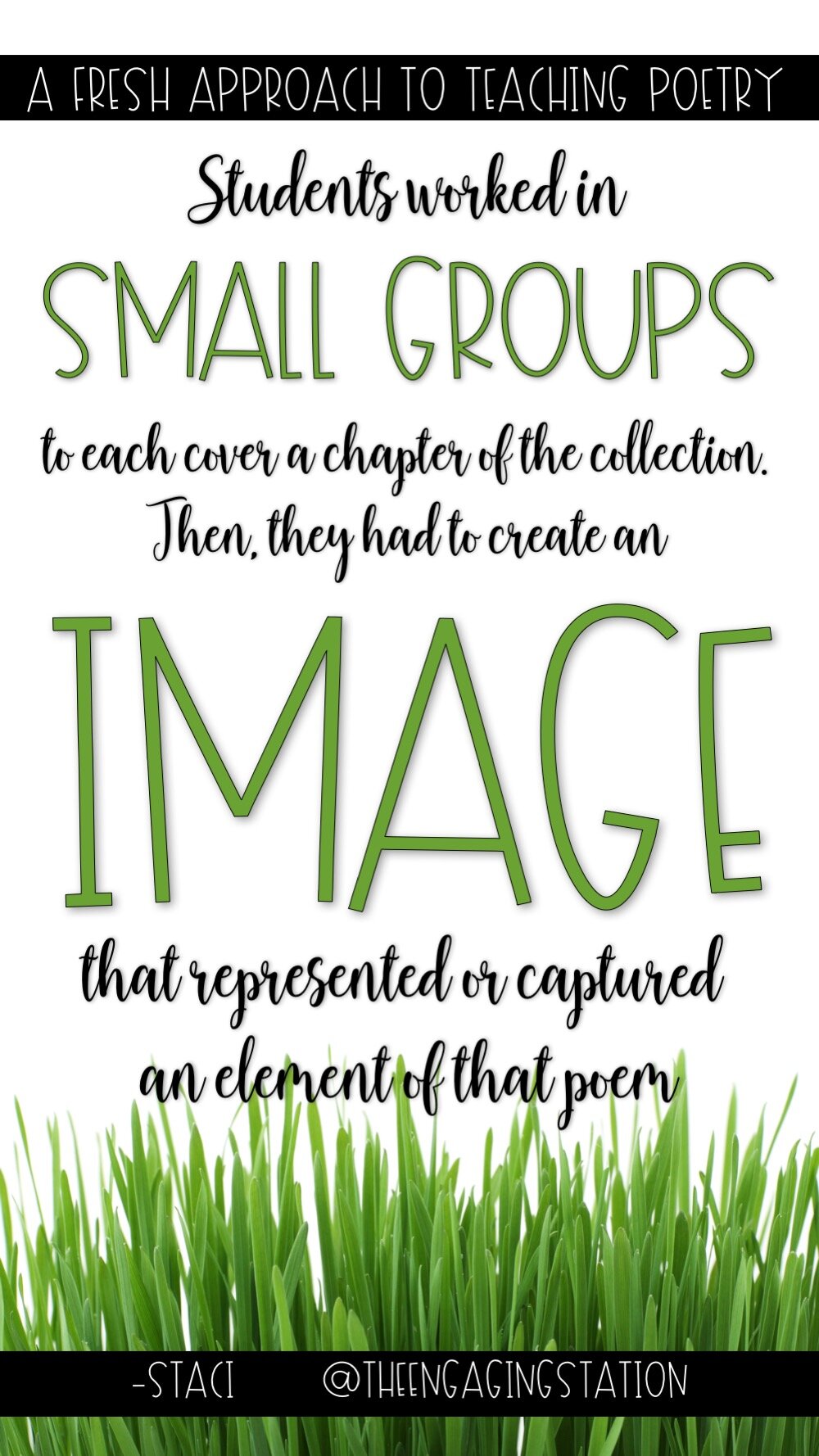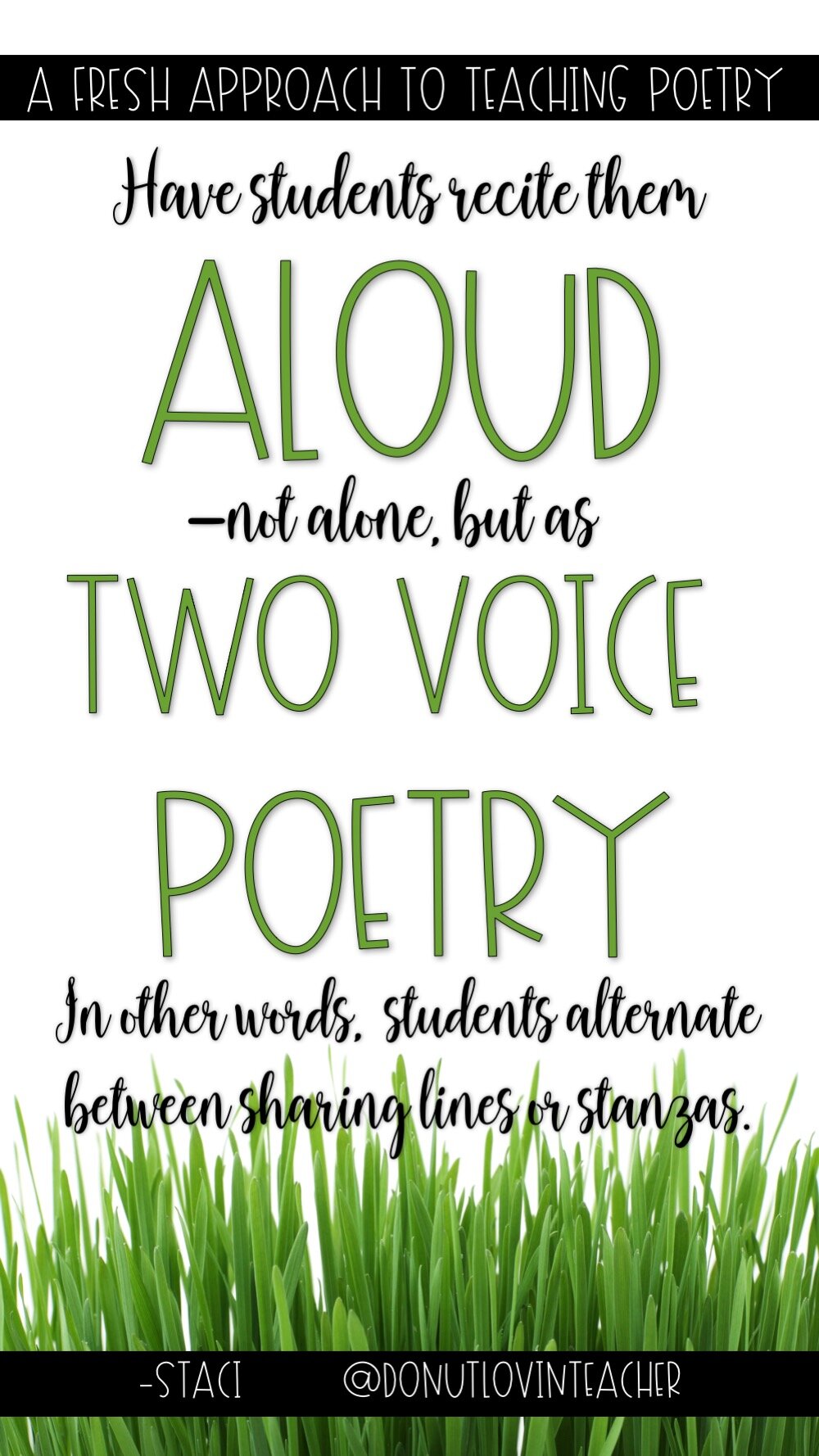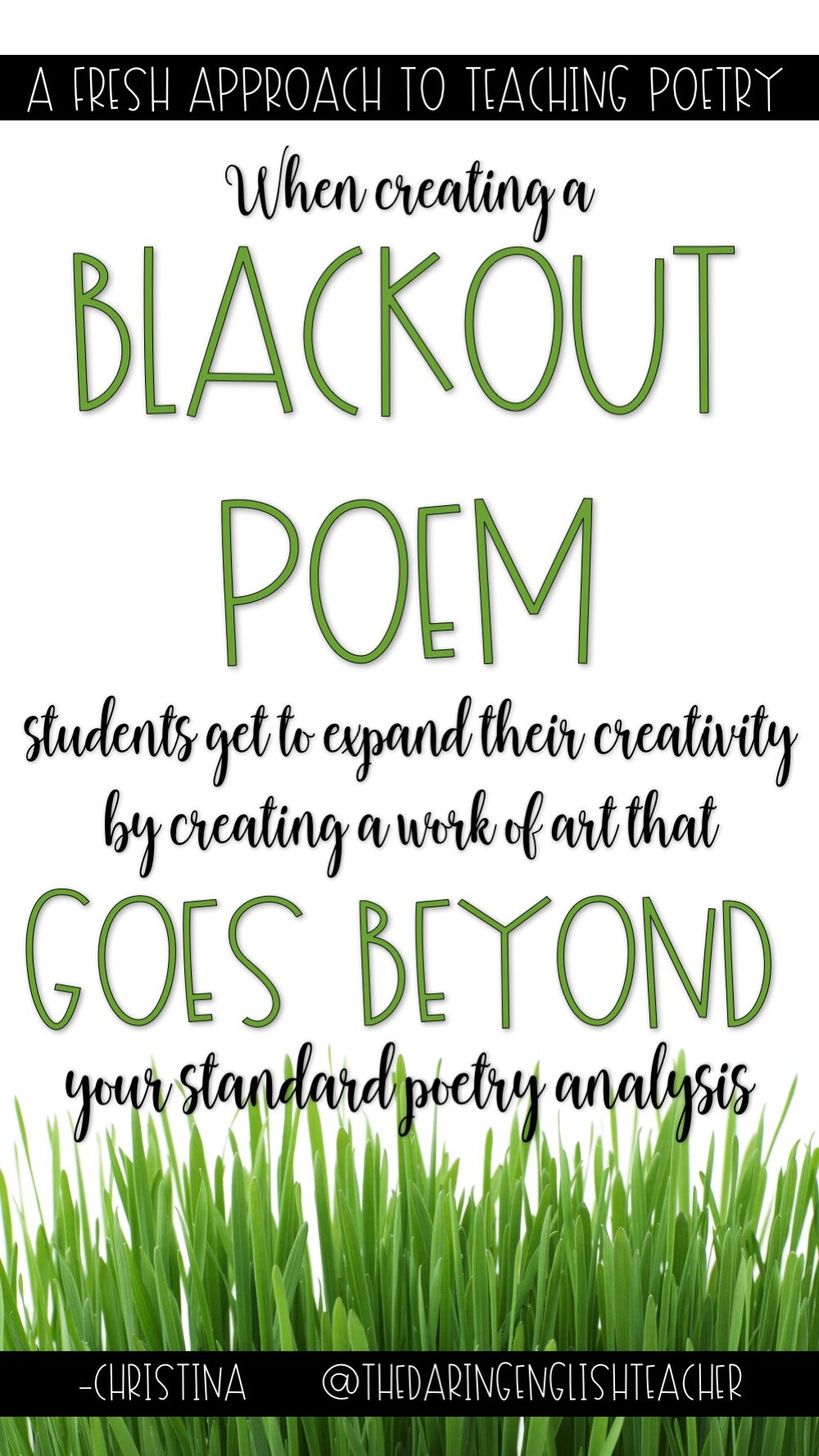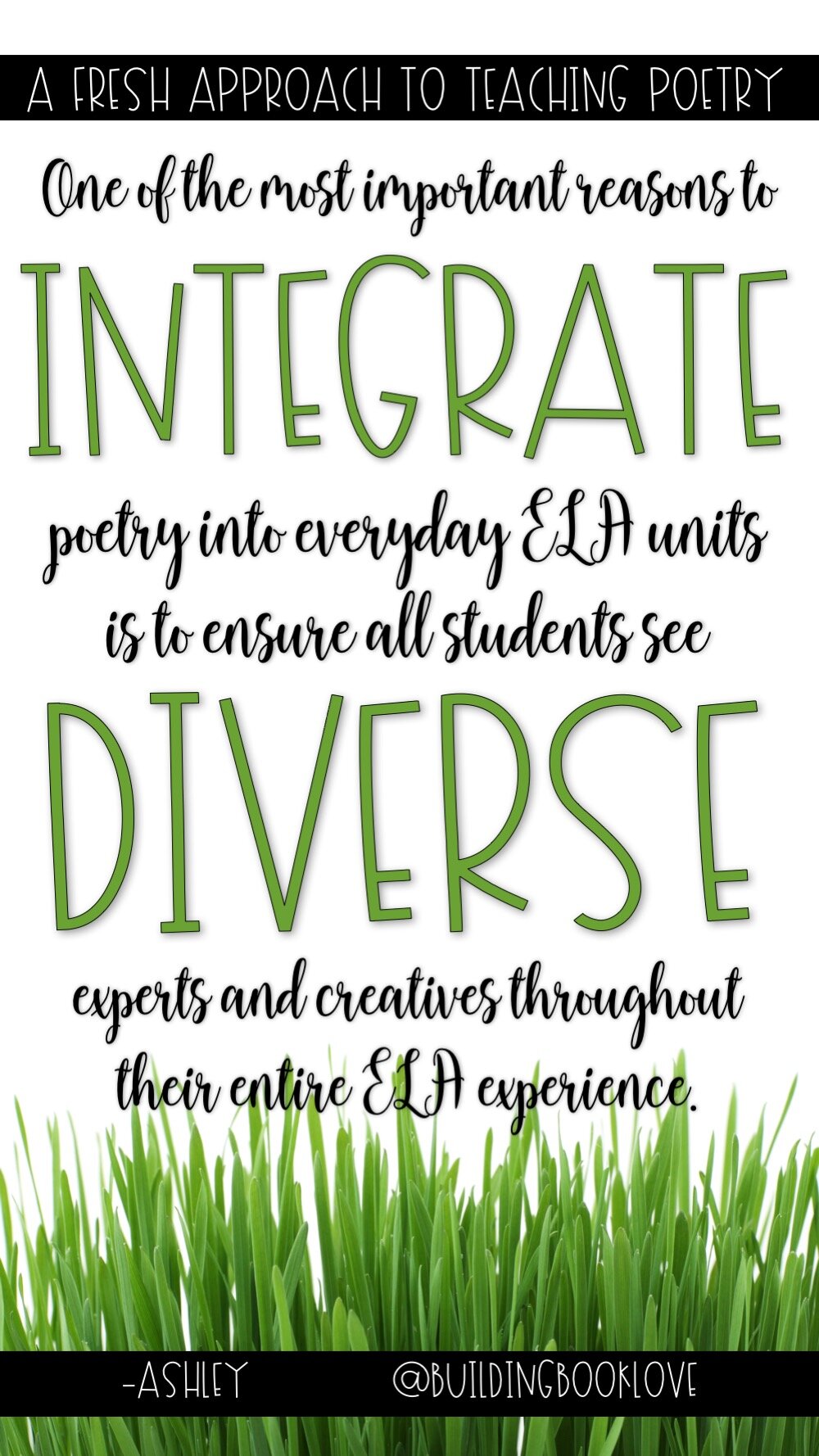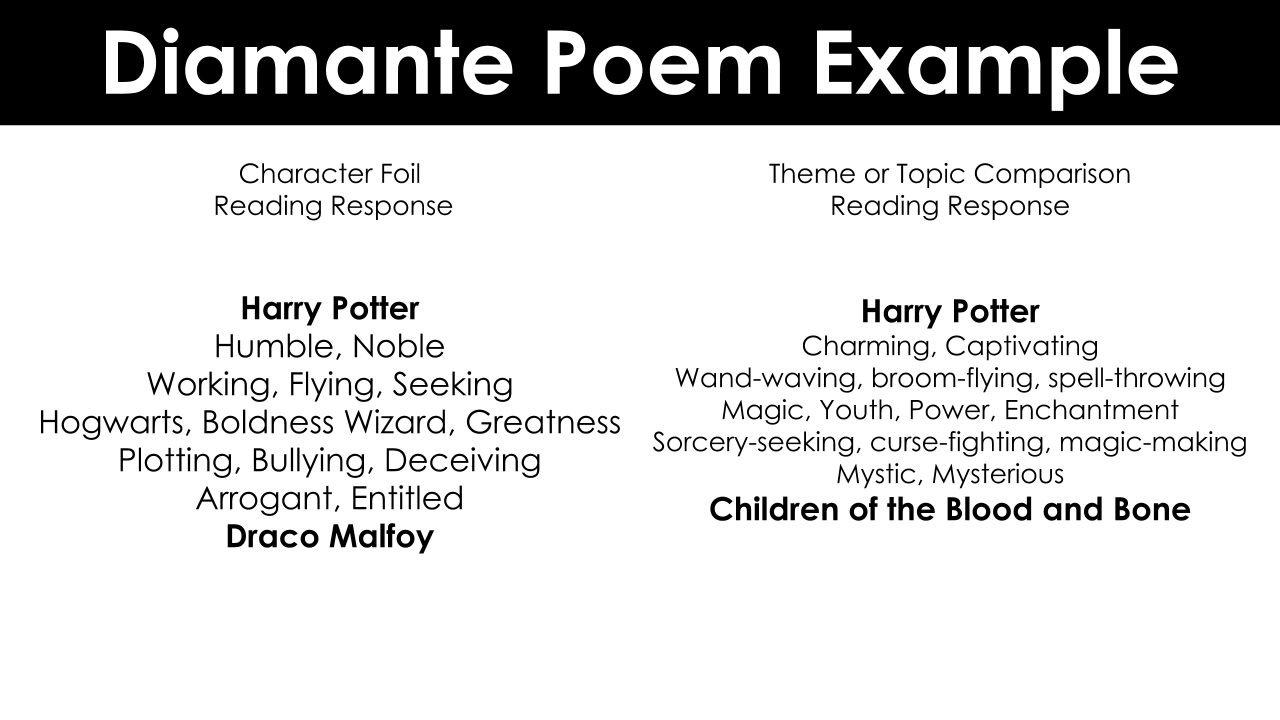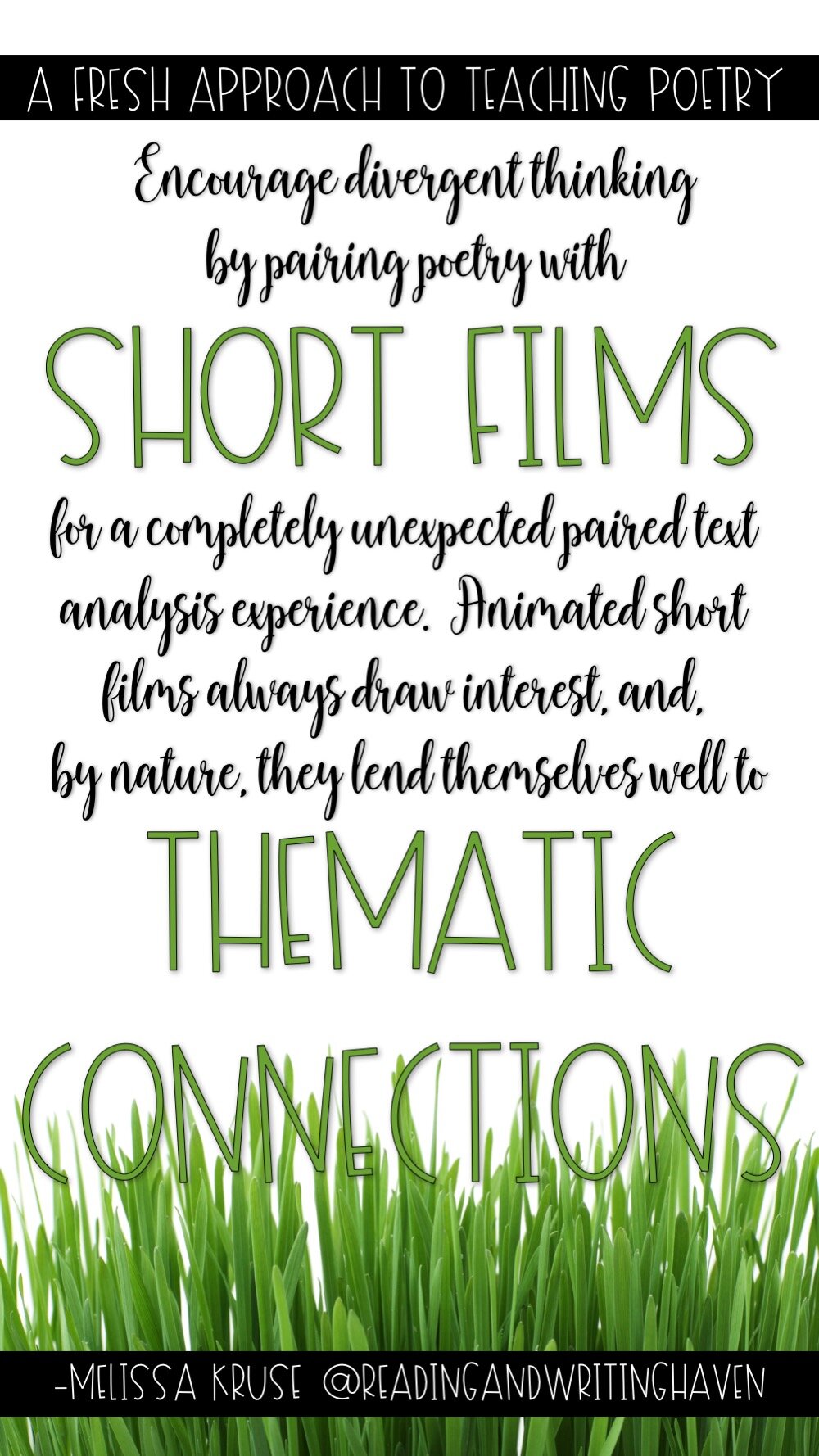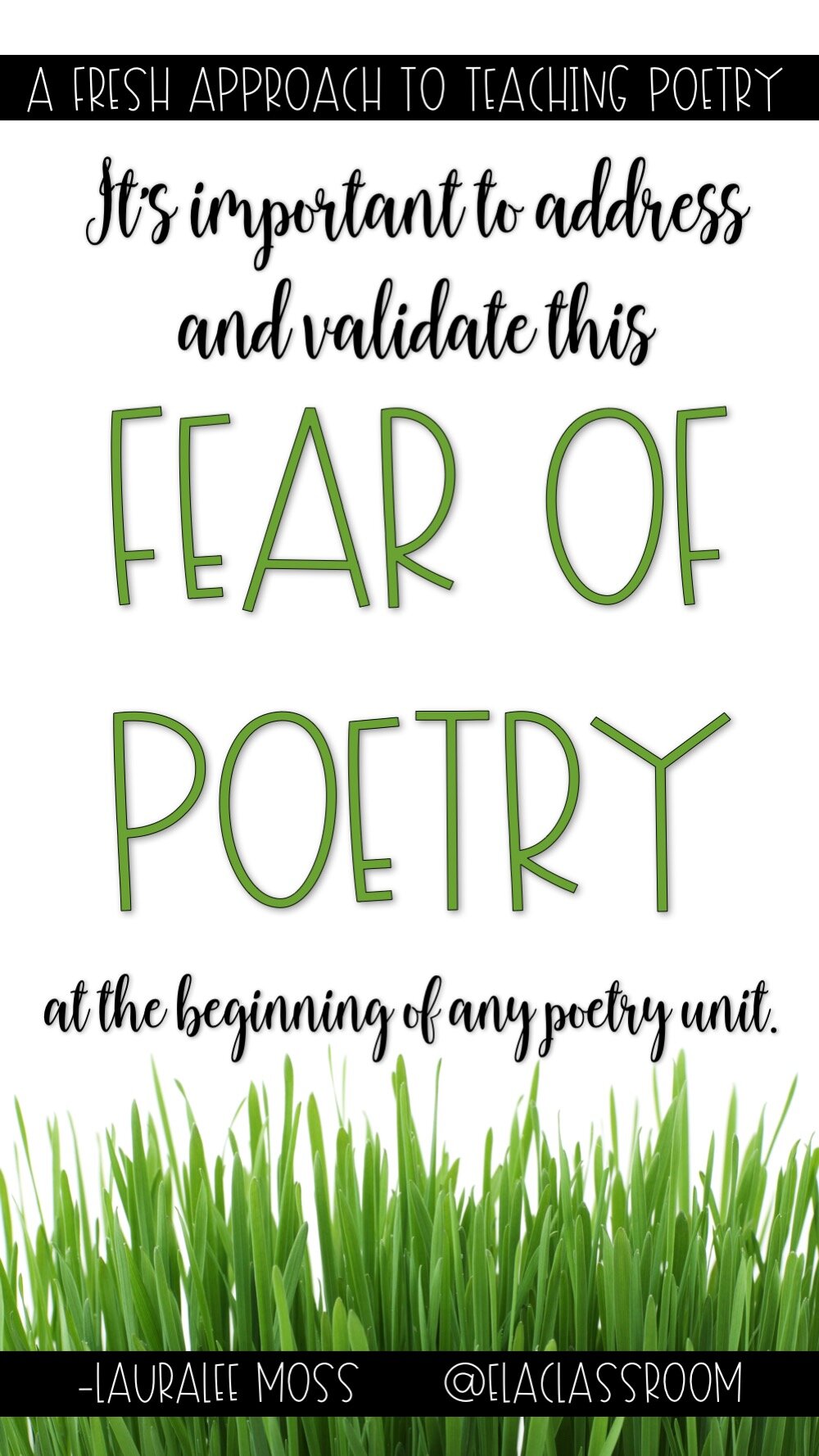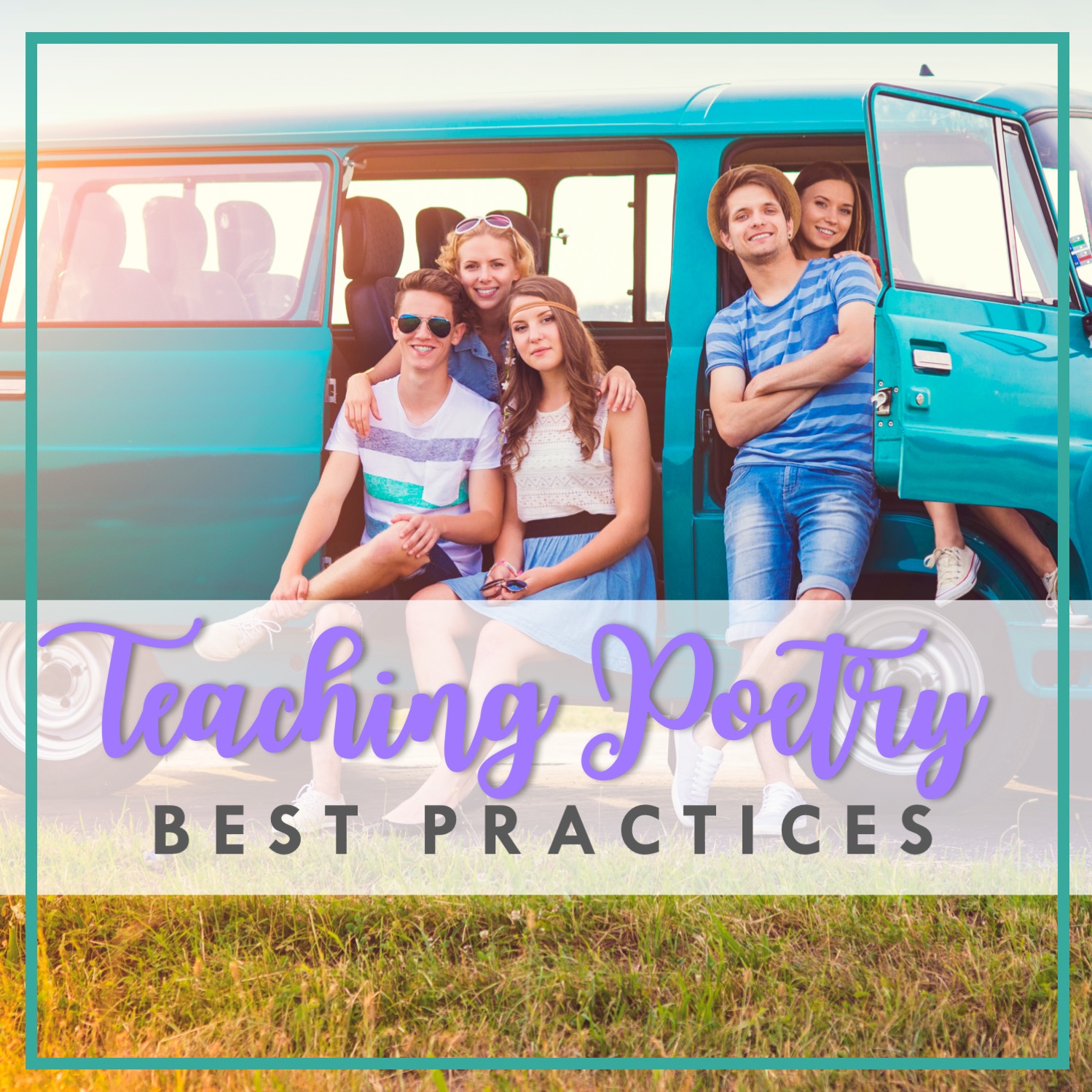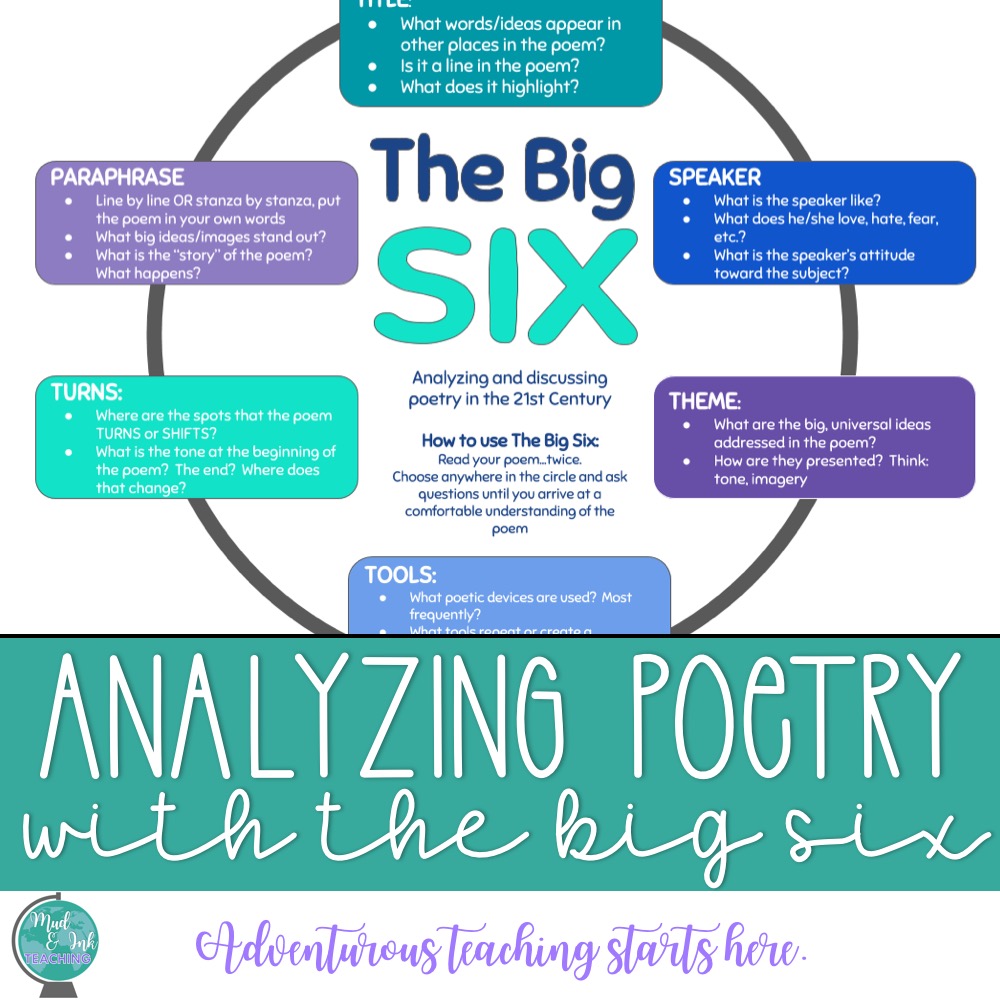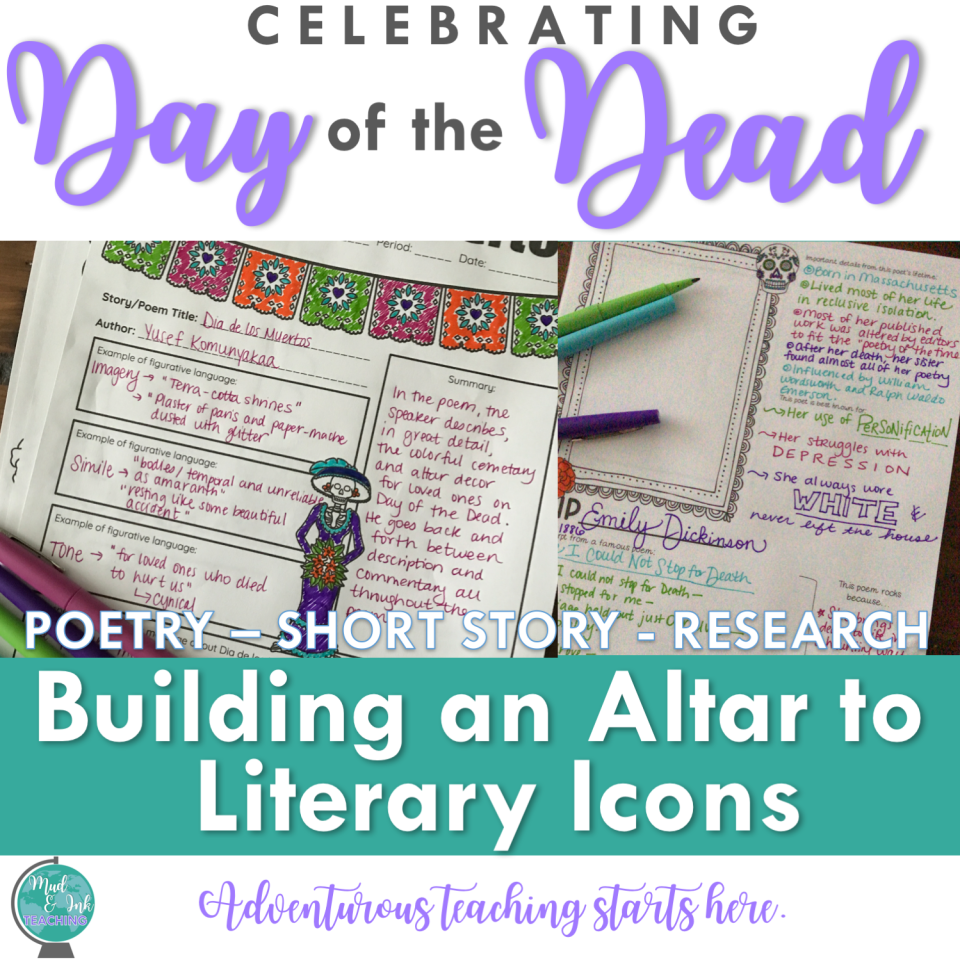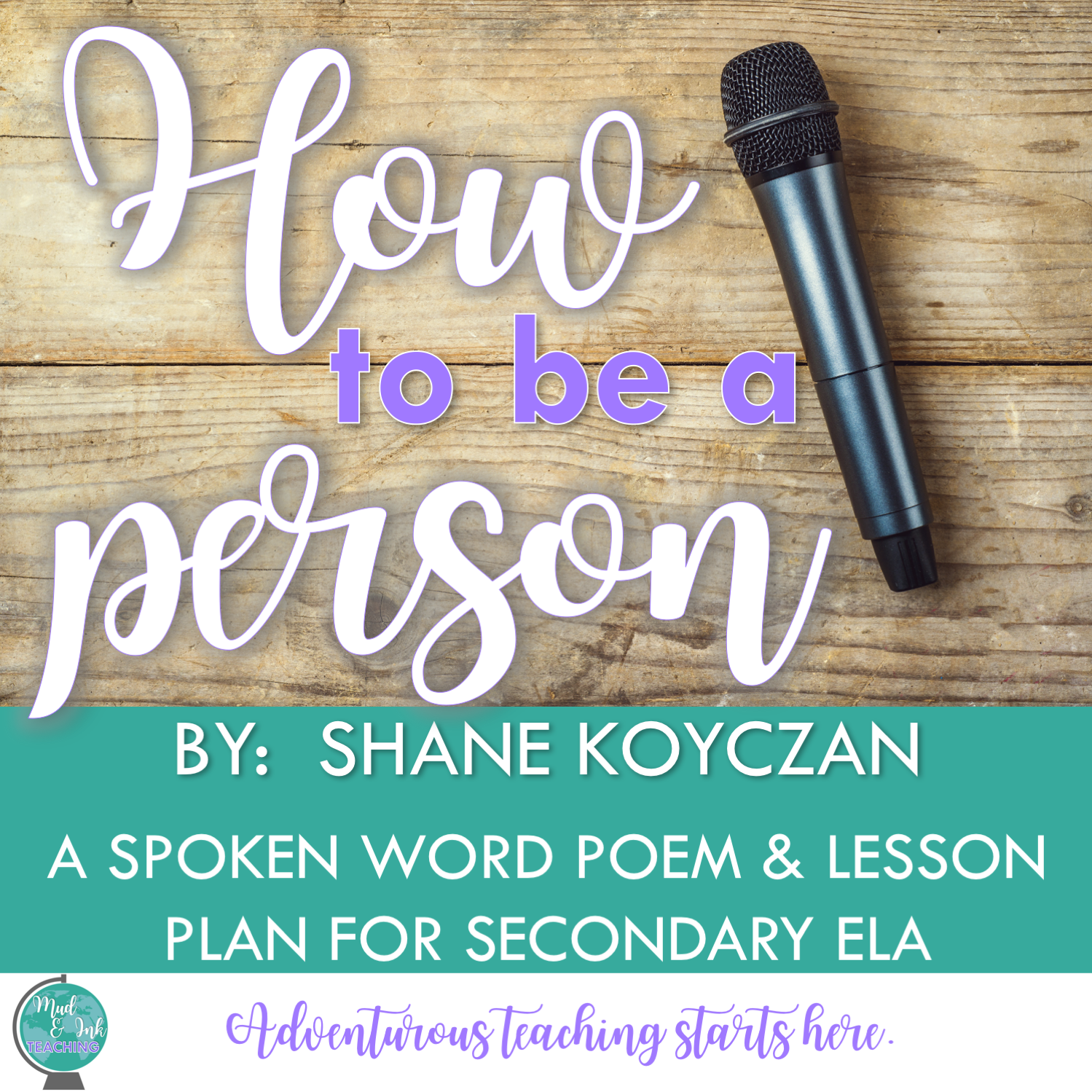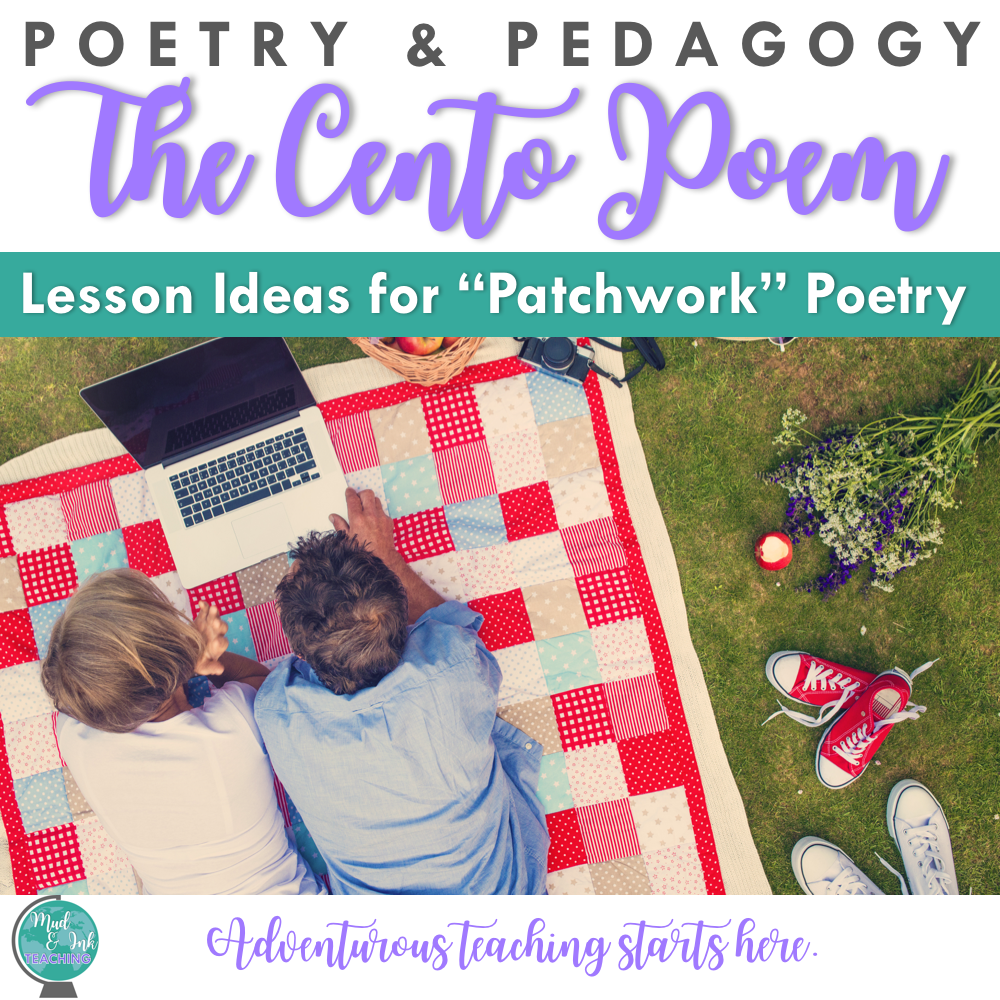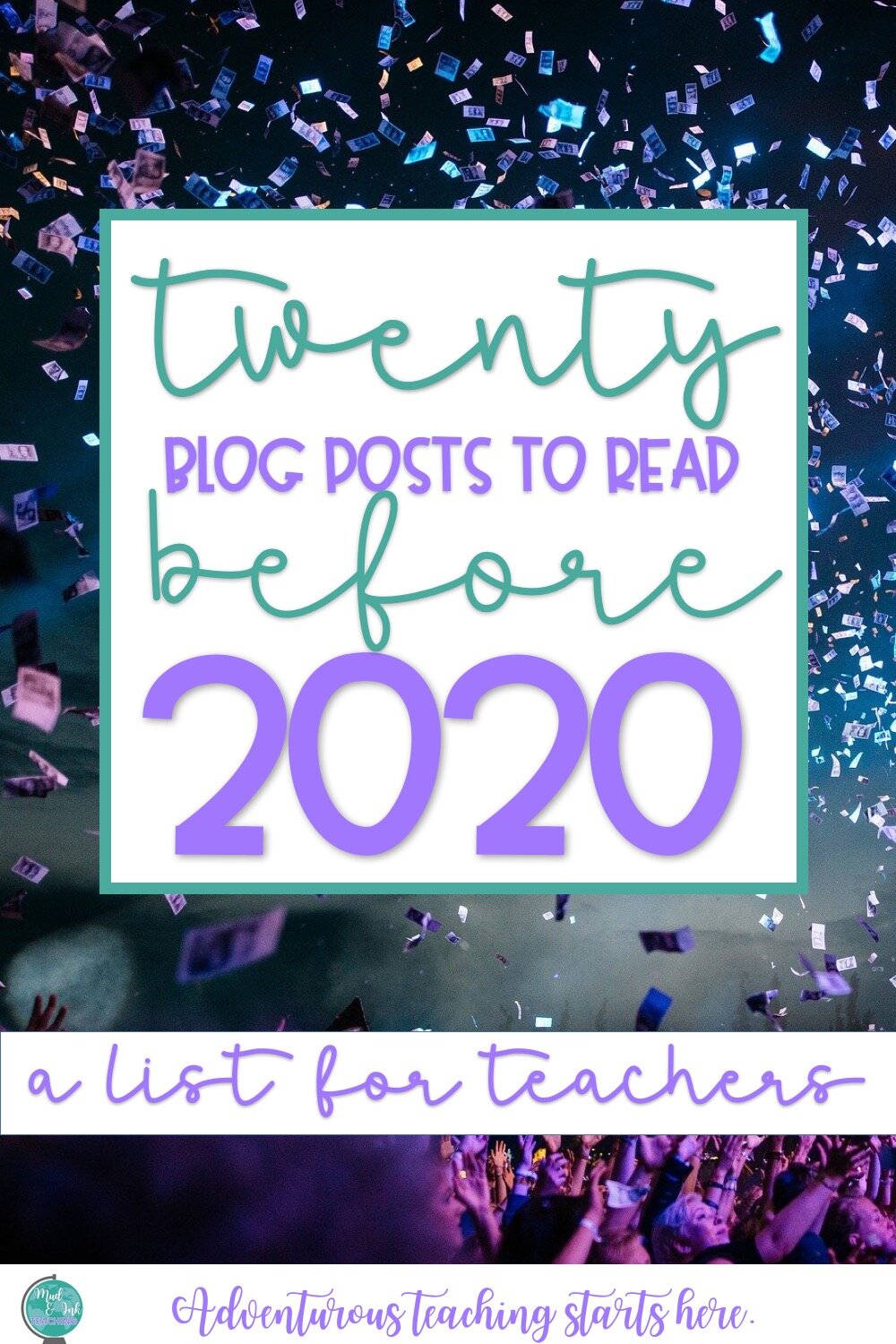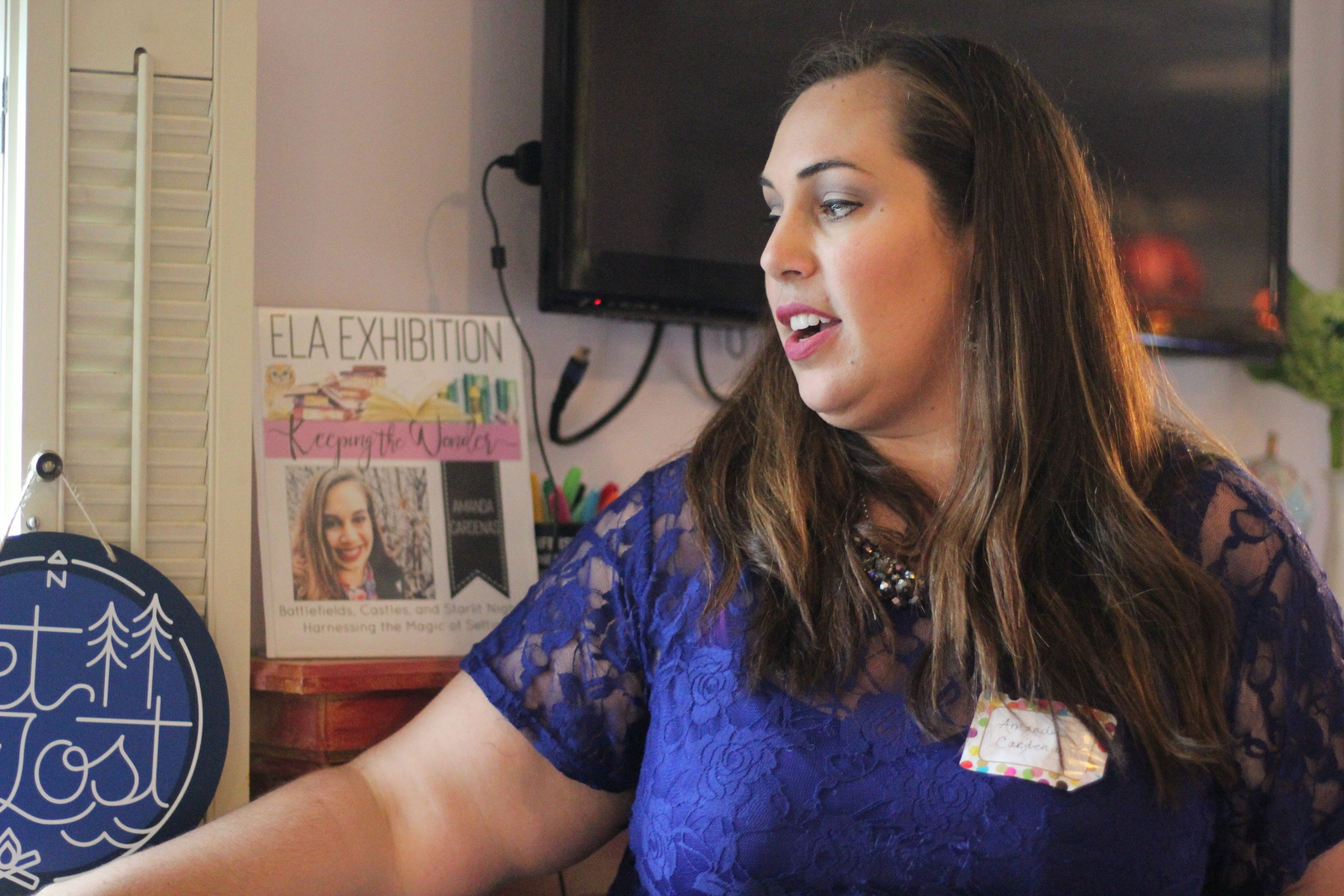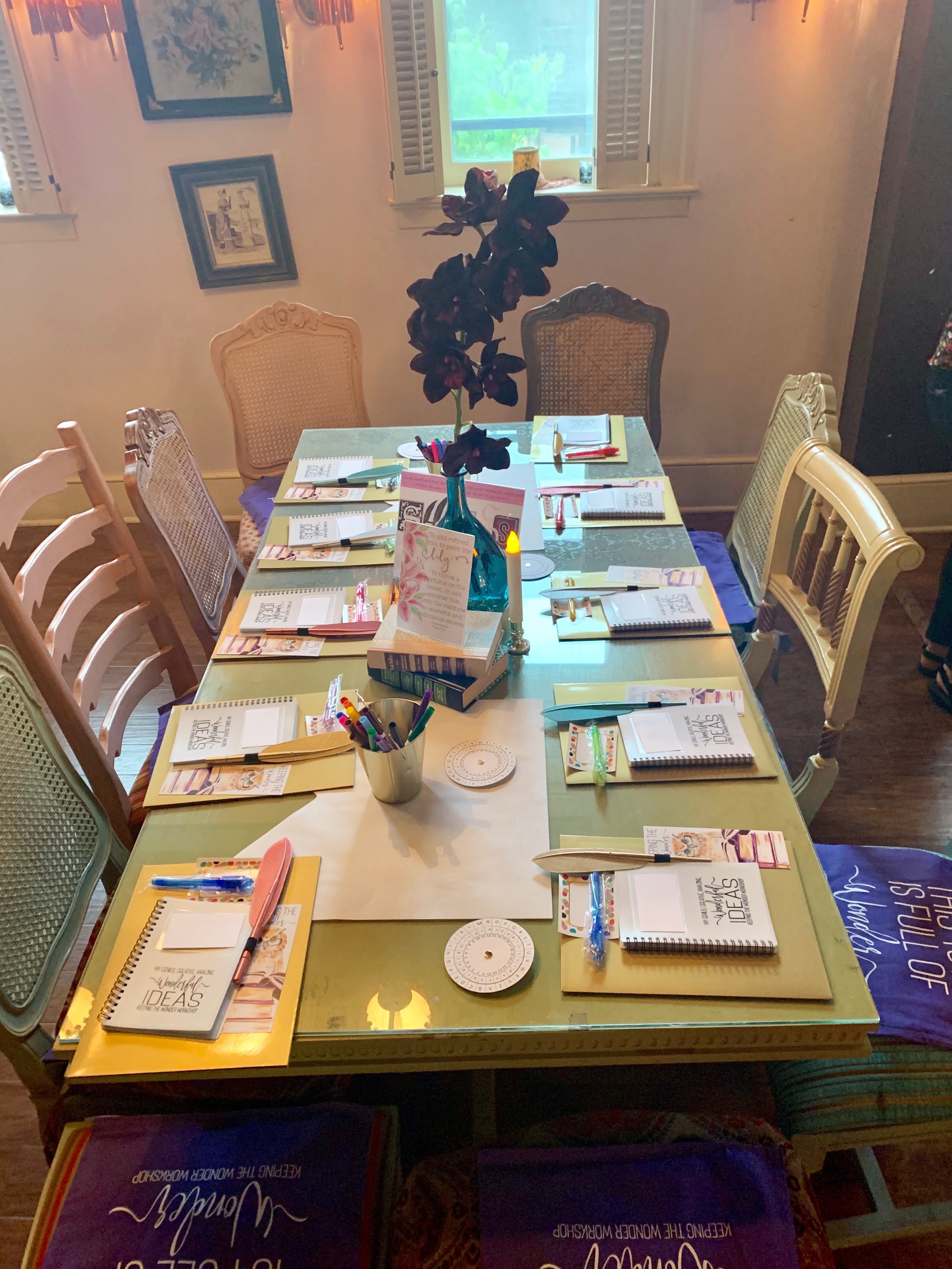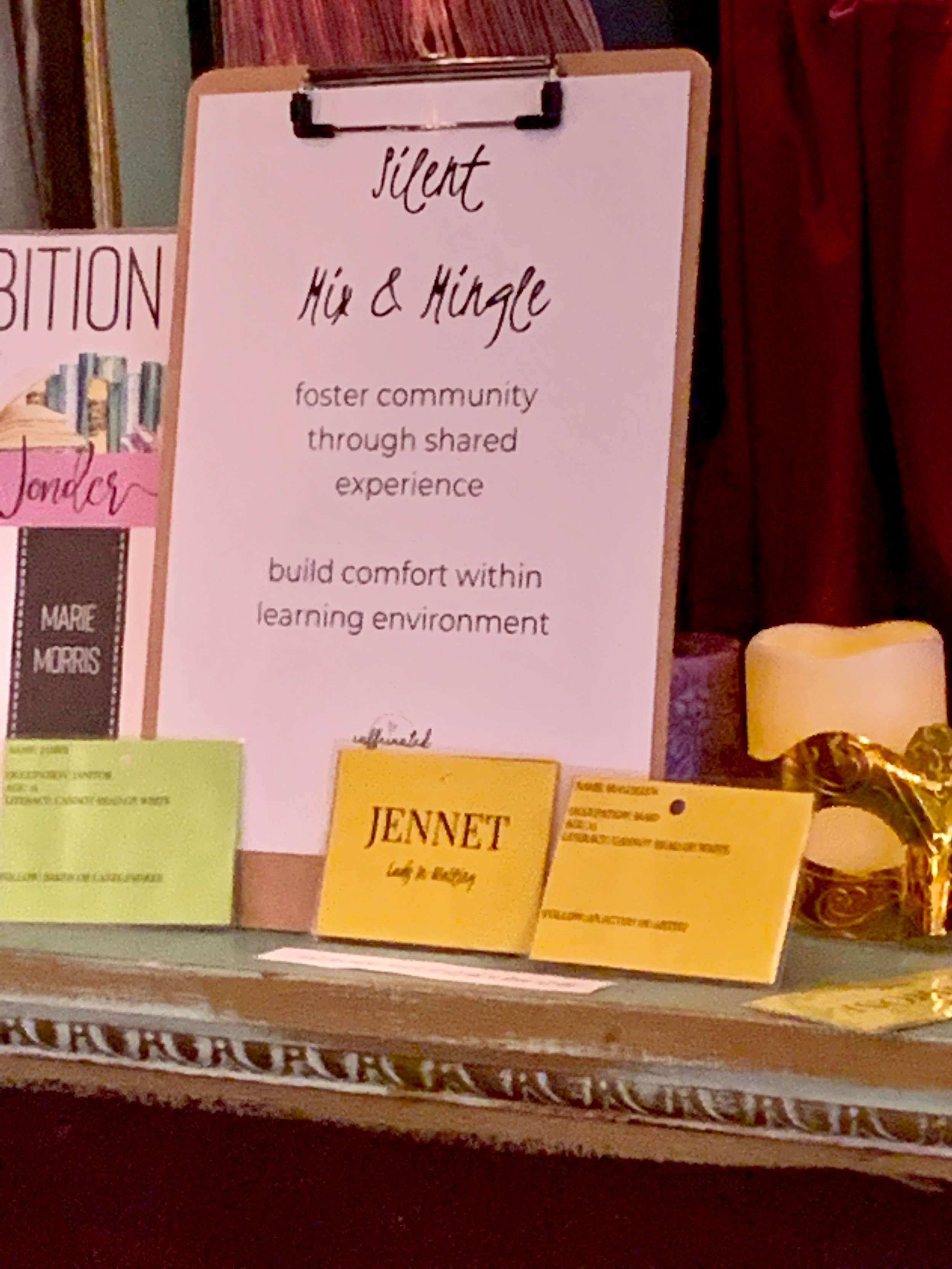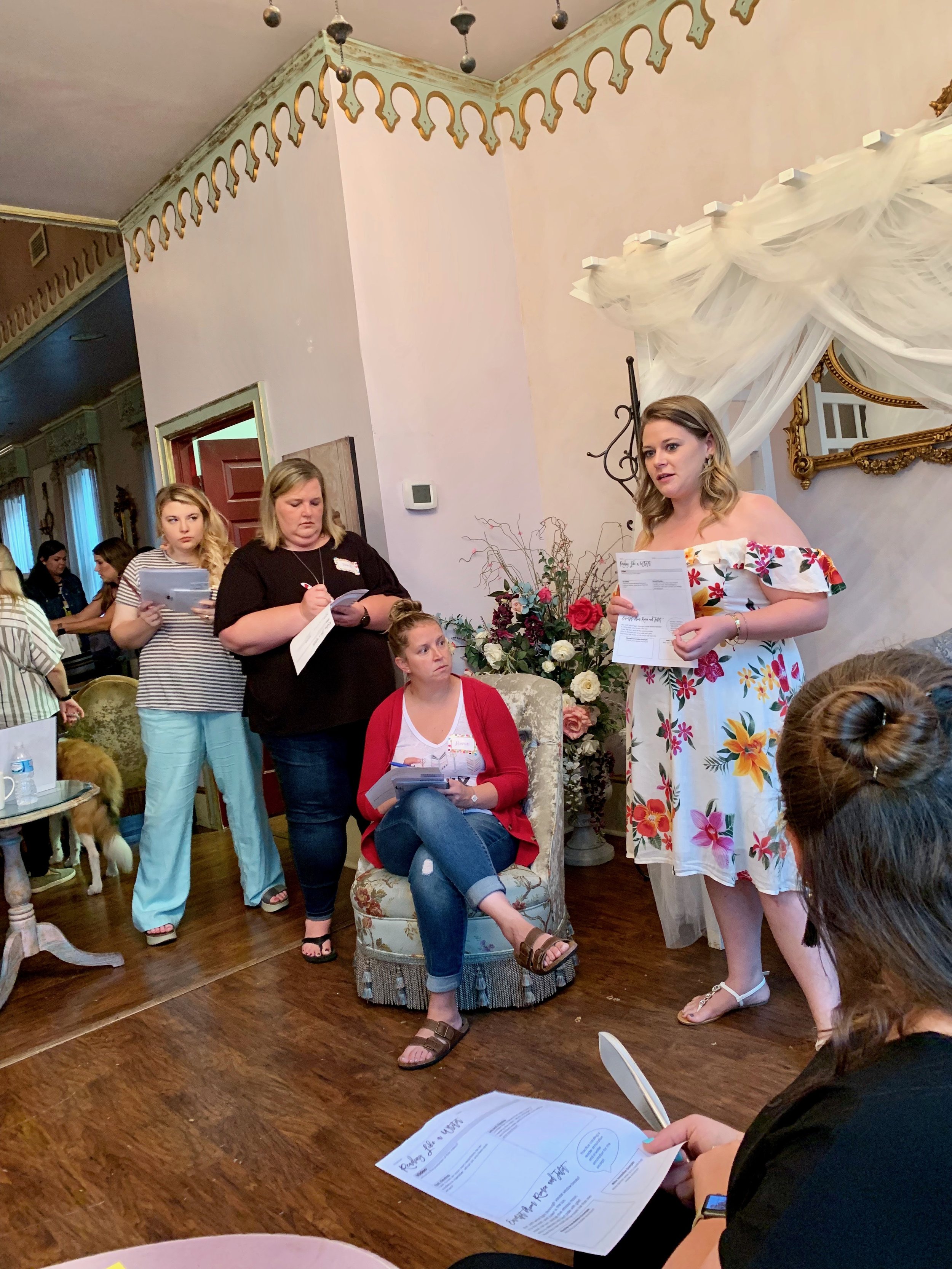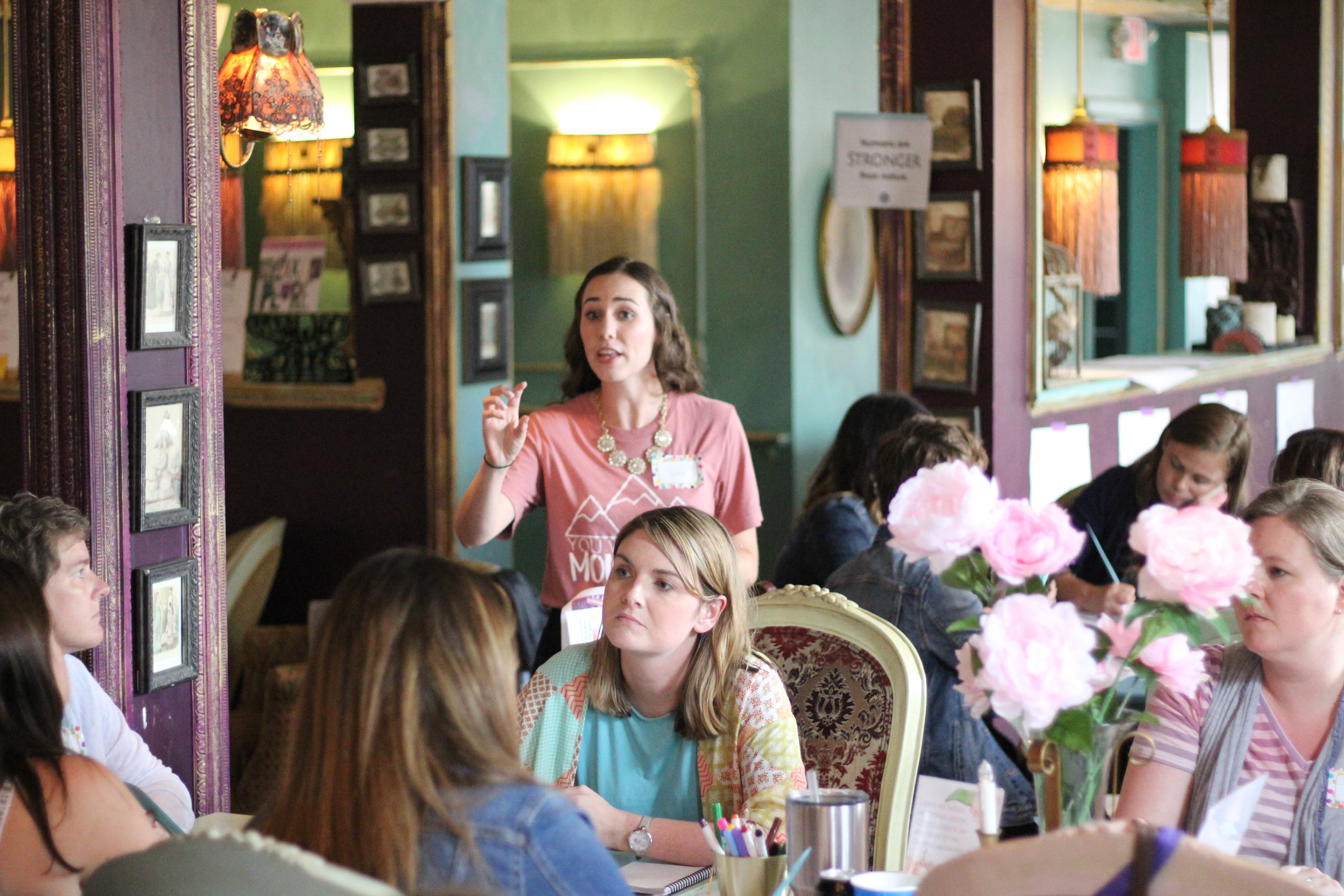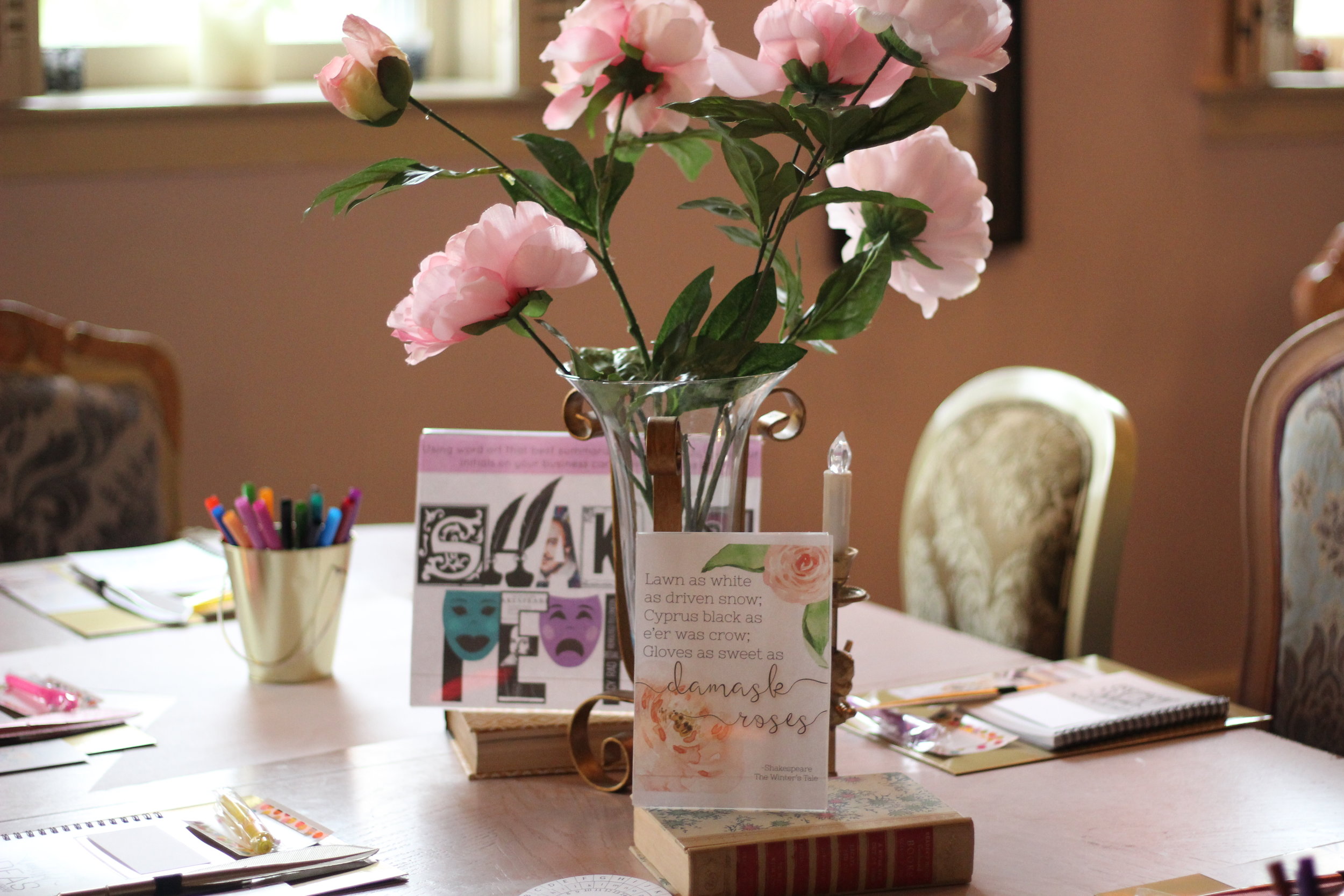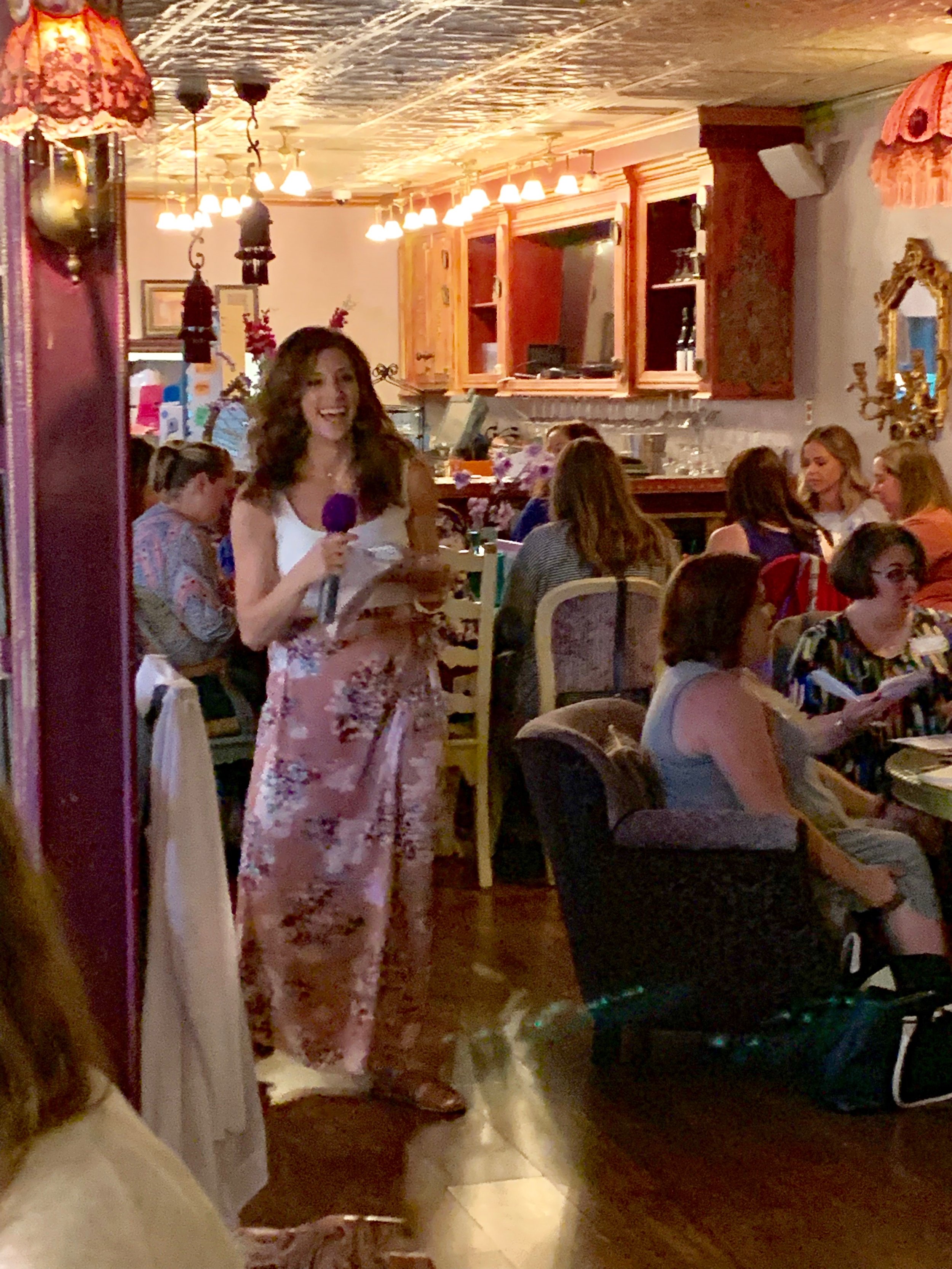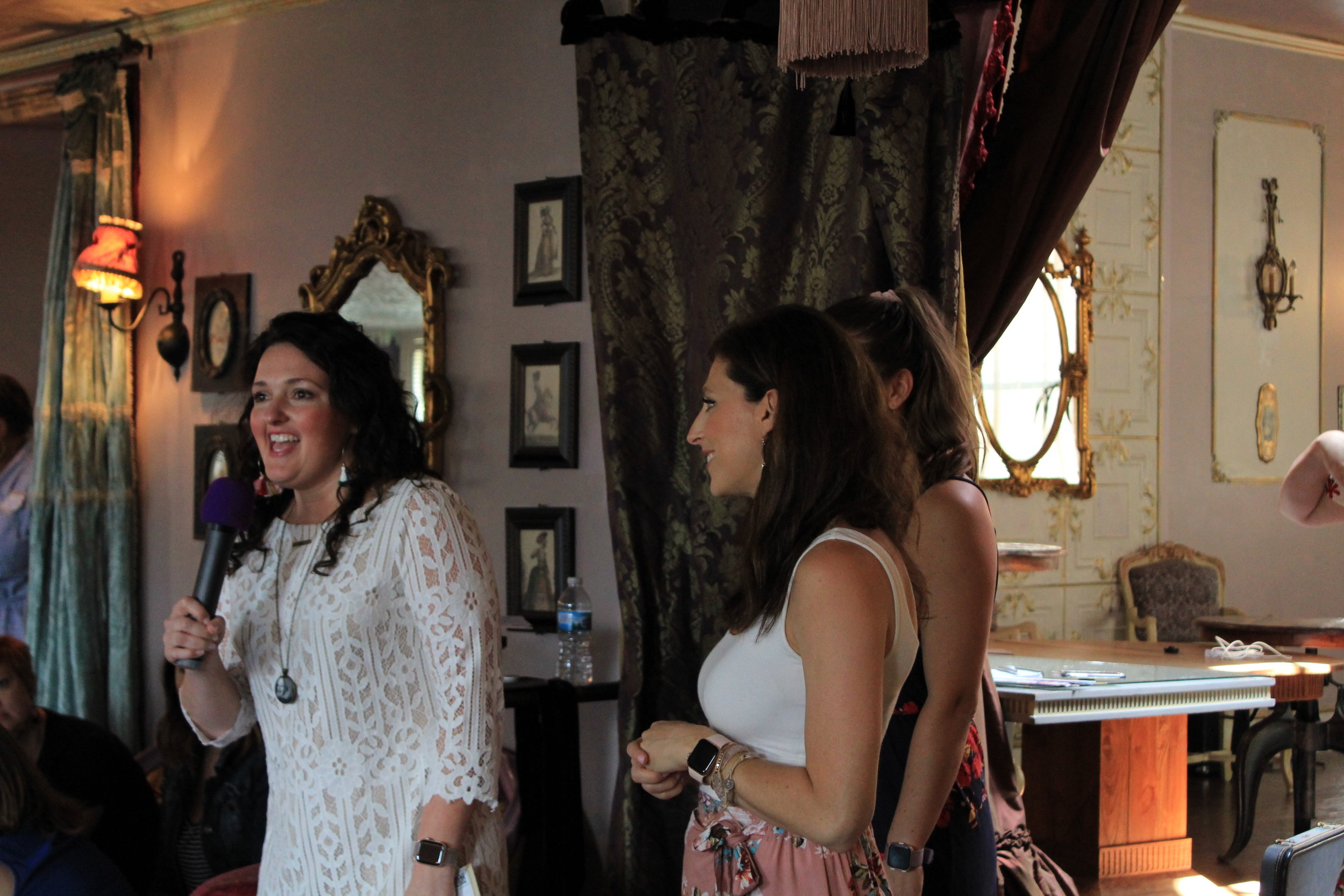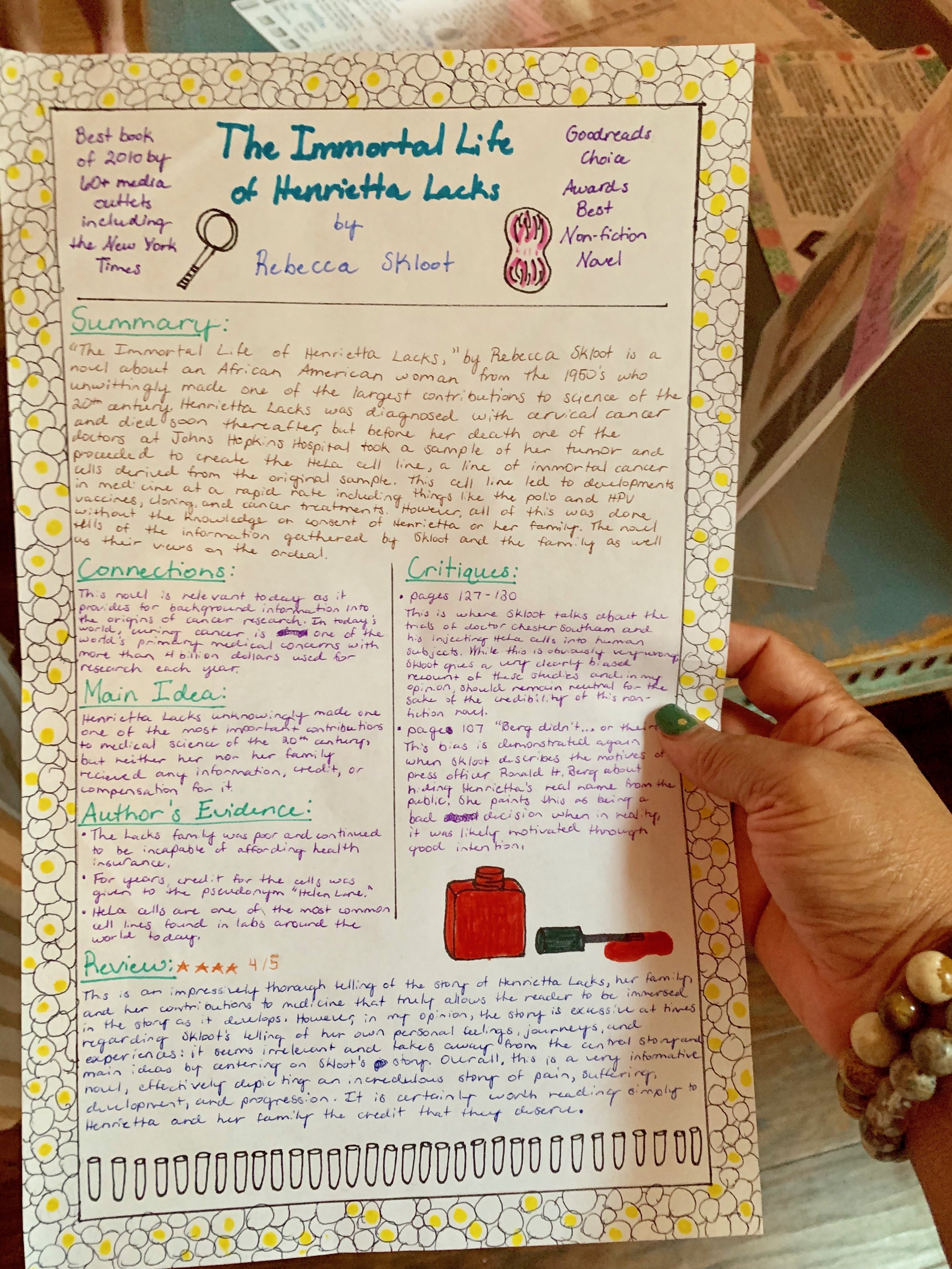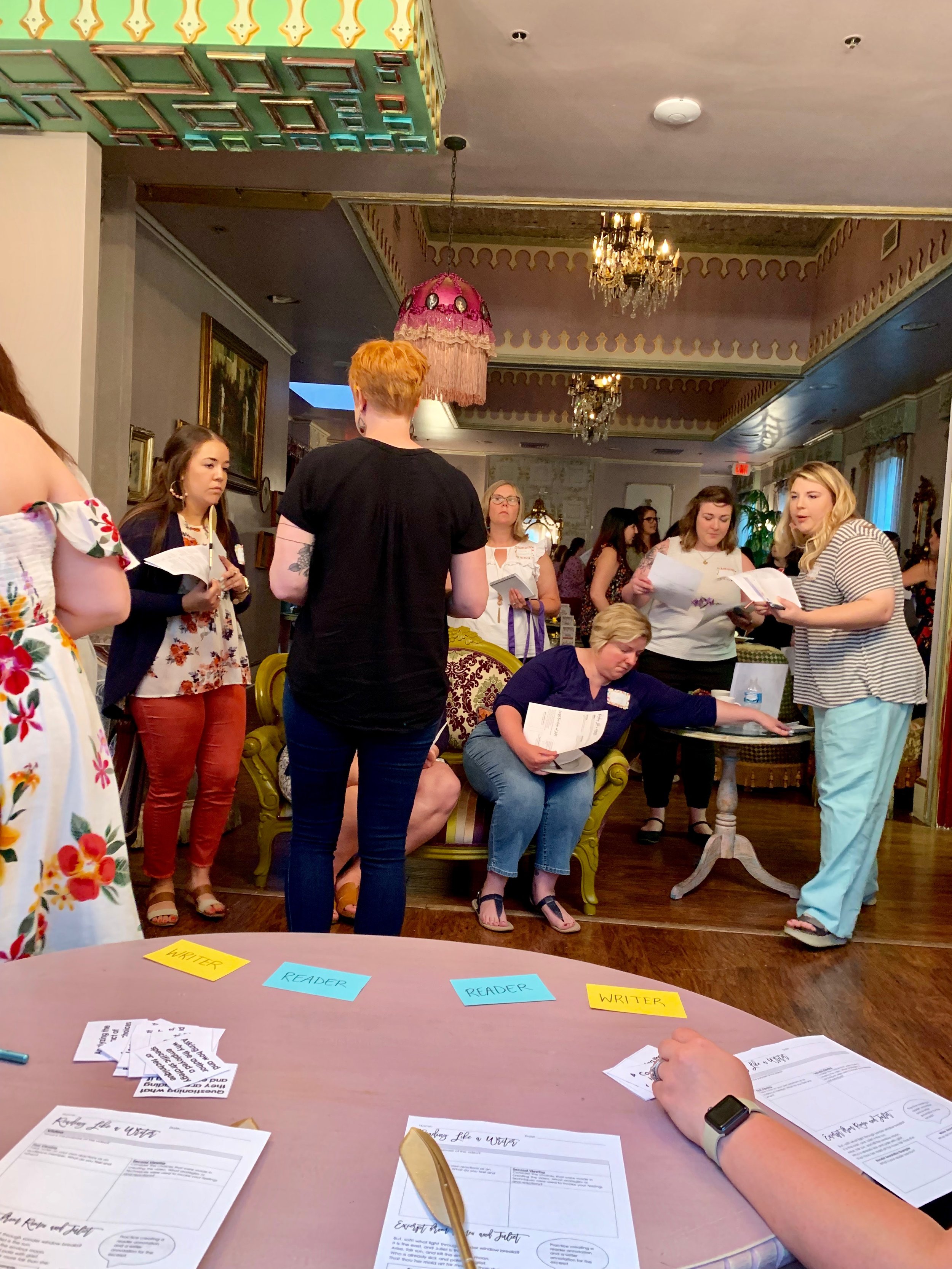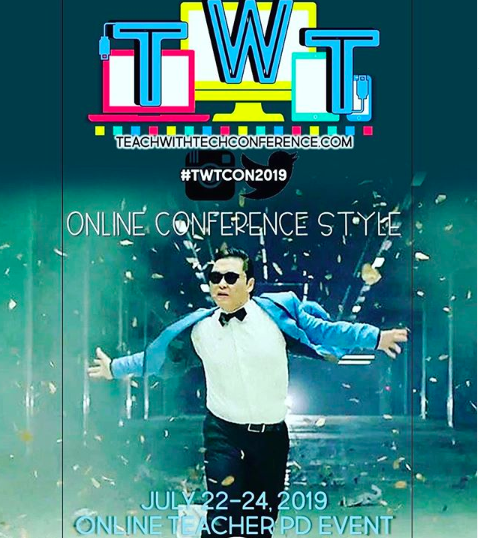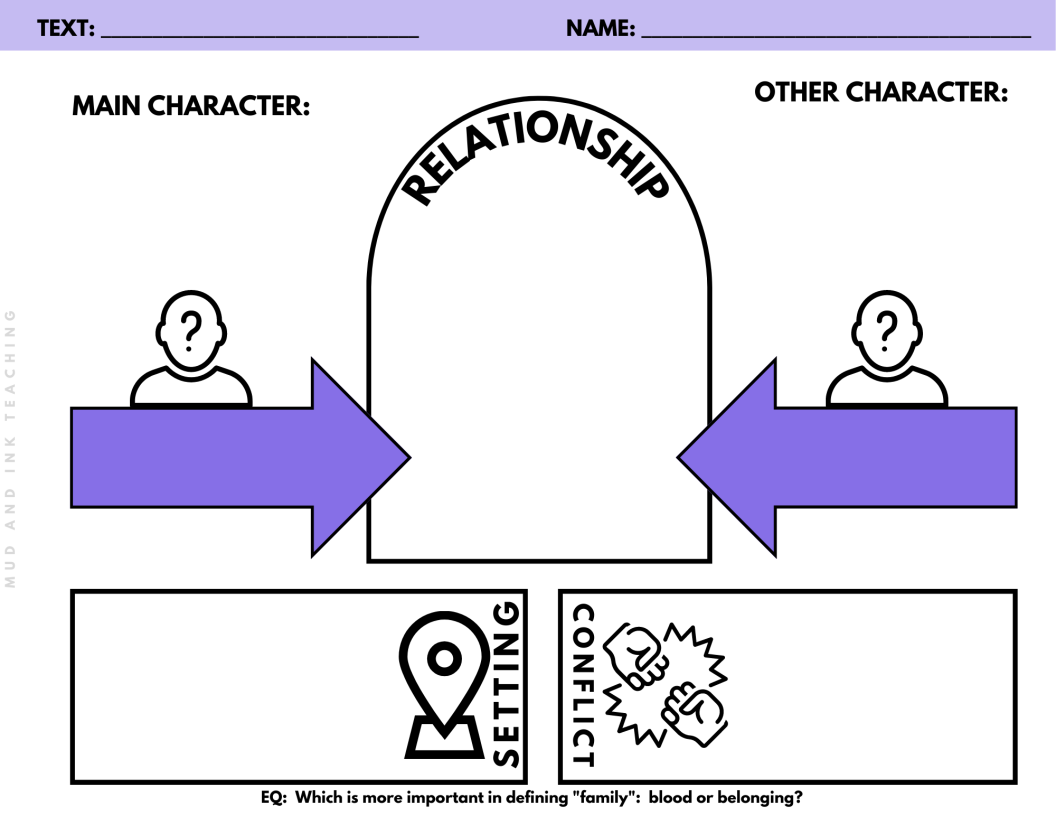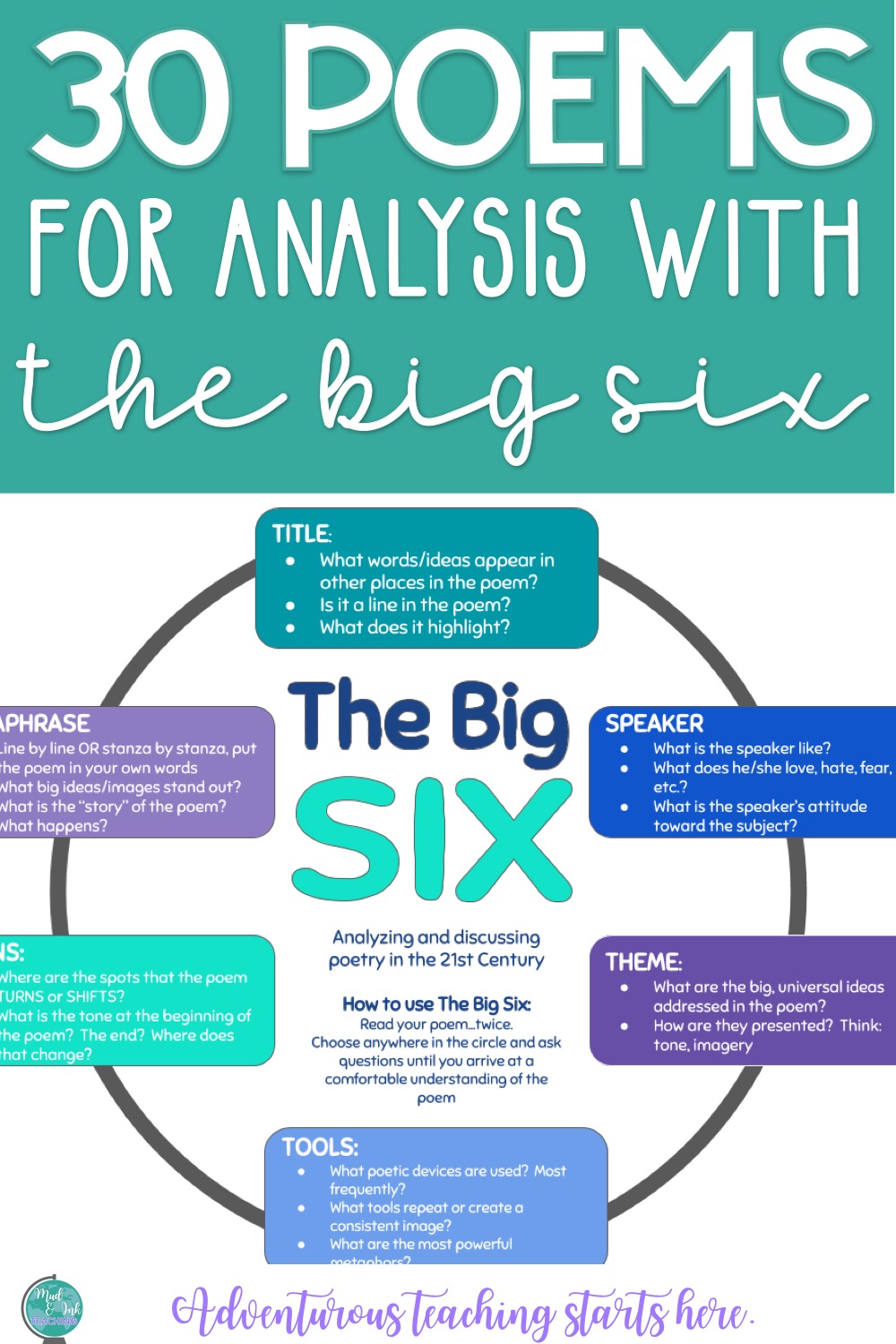
ADVENTUROUS TEACHING STARTS HERE.
Equity & The ELA Classroom: Considering the Classics
Swapping out a few titles is not the only work of building an equitable ELA curriculum. Here are some reflection questions and suggestions to take to your department to have the real conversation today.
There’s been a lot of buzz over the past year or so around the word equity and many educators calling for replacement texts for the traditional cannon in the English classroom. You can’t bring up a book like To Kill a Mockingbird or The Great Gatsby in a teacher Facebook group right now without getting called out to one side or the other of the fight to keep and the fight to replace long-taught novels. To me, these verbal battles are a good sign, a sign of growth among educators reconsidering and truly reflecting on what they’ve done in the past and whether or not those same practices hold up as we learn new information about the world, about what our students need, and as best practices evolve in our profession.
But this is also a dangerous time. It’s a time when we might be letting the pendulum swing too far in any direction and what we really need to be doing is having comprehensive conversations that are bigger than a single text alone. Here are a few questions that you might bring to a department meeting in the near future for discussion. This blog post is designed to be an outline for a discussion amongst colleagues and a reflective experience that determines next steps for your department in their professional development journey. I’ve provided some of my own insight under each question, but these are my opinions based on my own experiences and work as an individual.
For a worksheet version of this blog post, simply download that below. Let’s get started!
Should texts alone be the only reflection of our equitable practices?
I sure hope not, but this is a lot of what I’m seeing in the social media world of education. The battle seems to be primarily over books, and to me, this is a battle that boils down to the idea of representation. Representation means that a curriculum represents a well-rounded set of voices, styles, backgrounds, lifestyles, and life experiences. Here’s the problem: if we replace To Kill a Mockingbird with The Hate U Give, teachers who feel unprepared to discuss racism or privilege still don’t know how to address racism or privilege. Changing the book didn’t make the real issue here any easier or help the teacher feel any more prepared to challenge students in their self-reflection journey. Even if changing a novel helps create more representation in a curriculum, we can’t forget that training and learning about teaching like an anti-racist goes beyond swapping out books, no matter how well-intentioned that move might be.
Teaching and creating an equitable education for all students is engrained in all of what we do, not just what we read. It’s in our grading practices. It’s in our classroom management policies and behavioral expectations. It’s in our follow-through on those policies and expectations. It’s in our late work policy. It’s in the social emotional learning that we provide (or don’t provide) for our students. Equity is not achieved by a heroic YA novel coming in to the curriculum to save the day. Take this example from Val Brown at the Center for Antiracist Education:
During a read-aloud, shortly before winter break, her white teacher was trying to get students to imagine themselves in front of a warm fire. “Imagine you are sitting in front of your fireplace. You are wearing your coziest clothes, and you have a warm cup of hot chocolate,” she said.
At that moment, a white student sitting next to my daughter patted my daughter’s head and said, “I have my hot chocolate right here.”
The teacher said nothing, and my child sat there silently mortified. She told me the story when she got home from school with tears in her eyes.
Yes, intentional work needs to be done to revise our reading lists and truly deciding why any novel should stay or go in a curriculum, but the work doesn’t end there. The teacher mentioned above might have a beautiful lineup of anti-racist picture books, but that doesn’t matter if we aren’t doing the internal work, too. Brown continues in her article by saying, “When educators are silent about racism, marginalized students assume the educator is comfortable with the status quo.” Let’s make sure we’re not oversimplifying the work that needs to be done.
What voices are missing from our vertical alignment across the department?
Again, equity is something to be considered on a large scale and not only on a novel by novel basis. Consider the experience from a student’s perspective. Think: If I went from E1, to E2, to AP Lang, to Senior Comp & Lit, what would my experience be? What stories would I hear? What voices would dominate that four year stretch? Trace a few different tracks that students might inhabit and make a list of what’s missing. In making that list, be sure to specify which texts have more real-estate than others (whole class vs lit circle/choice) and what kinds of supplementary texts are expected and important (articles, poetry, etc.).
How might equity be more possible if we shift units away from being text-centered and instead essential question/inquiry-centered?
To Kill a Mockingbird is problematic if it stands alone in a curriculum as the one book designated to “discuss racism”, but in a unit that asks When injustice occurs, is empathy enough? we have a different situation on our hands. Placing that novel in the context of that question turns the conversation entirely. Now, instead of the unit being a chapter by chapter plot driven experience, students are asking questions about what to do when they witness injustice. It puts Atticus on the spot, pressing students to think did he do enough? Is walking in someone else’s shoes actually good parenting advice? Why does Harper Lee focus so much on the Finch family and so little on the family that’s actually experiencing the trauma of an illegitimate rape accusation? In what ways is silence its own form of injustice? Why was it easier for the jury to believe in the demonization of Tom Robinson and not Bob Ewell? An EQ pushes the unit into multiple lines of inquiry deepening the investigation into the novel itself, it’s merits, its message, and its commentary on the society for which it was written and the application to us as a modern audience.
When we’re poised for units that ask questions that are critical of the words students are studying, we create a more equitable, student-centered, and rigorous learning experience.
Also, to be clear, we could easily replace Mockingbird with a long list of other titles from authors of color using this EQ and the unit would be stellar.
For more help writing and utilizing essential questions, check out the following resources;
What are the literary merits of the text in question? What are the experiences that only this text makes possible?
Here’s the deal: the cannon is inarguably filled with tons of dead white dudes. It’s an absolute fact. The argument that “the classics are classics for a reason” is not a good enough reason to keep something around. Consider the actual literary merits of the text in question and the experiences that the study of this novel that are unique to only this text. If this cannon text provides skill, inquiry, and thematic teaching points that are critical to the overall experience that you want your students to have, maybe it doesn’t need to be cut. Maybe it needs a facelift or reframing or reality check. Maybe it needs some fresh supplementary texts or poems to provide the balance of perspectives that the novel alone can’t provide.
But maybe it needs to go. And we need to be open minded to that possibility.
Can another novel of equal literary merit be use to teach the same skills, themes, and concepts and also provide a much needed or missing voice from the curriculum? If so, that’s probably a sign that a revision should be considered.
Why do we feel overly protective or defensive of particular texts? Where does that come from? Do those reactions stimulate innovation and growth OR repetitive, unrefined practices? Something else?
This question is hard to face for so many of us. When we love novels and love teaching them, the idea of giving them up for something new can be scary and unnerving. Linger on this question for a while and see where your department goes, but know that honest reflection on this question will have to happen over and over and over again. When we love something, we’re really good at defending it, even when we know the other person might have a good idea. But because I love it can’t be a reason to keep a novel in the curriculum that’s not working or needs a facelift.
When a text is selected as a whole-class novel, what does that communicate to our students and families? What about texts that are placed in lit circle units or choice units?
Here is another disturbing trend happening in English classrooms: the “diversity” lit circle unit. Many schools are taking the step to recognize the deficit in voices and stories in the current curriculum, and as a band-aid, have created singular units of study where students read a choice novel or a lit circle novel that checks off the diversity box. This is not creating equity. Don’t get me wrong: there are amazing novels from a wide variety of authors that make great choices for lit circles, but if the only time we’re going to address discrimination is in a unit where the whole class literally isn’t on the same page, then we’re treating these novels as tokens.
We have a lot of growing to do in the English Language Arts world and that growth needs to come from critical conversations and leadership willing to facilitate those and provide teachers with the PD and support that they need to take the next steps. In Bettina L. Love’s book We Want to Do More Than Survive, she writes, “When you understand how hard it is to fight for educational justice, you know that there are no shortcuts and no gimmicks; you know this to be true deep in your soul, which brings both frustration and determination. Educational justice is going to take people power, driven by the spirit and ideas of the folx who have done the work of antiracism before: abolitionists" (13). This charge is powerful - something we need to feel in our bones. We can be anti-racist and anti-biased educators alone, but to move our students toward an educational experience of equity, we must move together and move seriously without playing games and looking for quick-fixes.
For further reading, consider some of these professional development opportunities:
Brave New Teaching’s course: Curriculum Rehab
The #disrupttexts movement & resources
Equity by Design by Mirko Chardin and Katie R. Novak
We Want to Do More Than Survive by Bettina Love
Letting Go of Literary Whiteness by Carlin Borsheim-Black and Sophia Tatiana Sarigianides
Let’s go shopping
12 Ideas for Teaching American Lit
These are 12 fresh, new ideas for shaking up your American Literature curriculum: from essential questions to literary food trucks, take these ideas to change up how you’ve done things in the past.
1. Use a Highly Engaging Essential Question
When it comes to teaching American Literature, it can feel overwhelming deciding how to set up your curriculum. Chronological? Thematic? By text? Each of these methods has their benefits and drawbacks, but by far, the most successful way that I’ve seen American Lit courses flourish is under the guidance of a highly engaging and exciting Essential Question.
In our podcast Brave New Teaching, Marie and I talk about using the question, What is America’s story? I love framing America as a story: something complicated, evolving, and crafted by the people in it. By teaching American Lit with a question rather than pre-designed topics or themes, it keeps units student-centered and focused on pursuing answers to student questions. When we look at To Kill a Mockingbird, we use the unit EQ: When injustice arises, is empathy enough? With that question, we explore everything from the skyrocketing rates of incarceration to more commonly heard narratives of injustice in America. We can look at Atticus and Bob Ewell with the same question - is empathy enough? And if not, then what is to be done? Exploring these texts, topics, and times in America’s history sparks genuine conversation among students.
2. Utilize a Literature Circle Unit
With soooo much available to cover in any American Literature class, Betsy from Spark Creativity suggests that one way to approach time periods or themes is to break them up into literature circle sets. For example, rather than have your whole class read The Great Gatsby, you might let kids choose to read The Great Gatsby, The Sun Also Rises, A Room of One’s Own, or a selection of poetry and short pieces from the Harlem Renaissance. As students work through their selection in their groups, have them share back to the class now and then, so everyone gets to learn from each other along the way. You can also bring everyone together to read complementary essays, listen to podcasts related to the era, or watch part of a documentary together.
Setting up literature circles doesn’t have to be intimidating. Start with a book tasting, and let kids find the work they’re most attracted to. Then have kids gather to break up the reading as they wish. Rather than assign the “roles” often used with younger kids, give older students creative prompts like one-pagers and character Instagram posts to guide them in responding to the literature along the way - these also make ideal visuals for helping groups share what they’re reading and learning back to the whole class.
As your students complete their works, wrap it all up with something fun like a literary food truck festival that will allow them to showcase their selection to the whole class.
3. Ask Yourself, “Who’s Missing?”
“OK-who is missing from my curriculum?” is a question that drives Krista from @whimsyandrigor as she plans for her middle school English classroom. For many teachers, this question can be uncomfortable because it forces us to answer, “Ummm, it looks like my library represents white boys and I teach zero books with a BIPOC as a central character and all of the authors I teach are white…”
Yeah...that got awkward...
Krista developed a tool, inspired by a social location wheel, that enables teachers to analyze their libraries and curriculum so they can answer “Well, my library represents all of my students because I feature books with Black, Native, queer, white, and deaf protagonists that are part of the #ownvoices movement, so, yeah, my students see themselves in our books.”
Mic. Drop.
Here’s how it works:
Download your free copy of a blank social location wheel HERE.
Gather ALL of the texts you share with students.
Dive into that massive stash of Flair pens every teacher has.
Choose a text and choose a pen.
Start filling out the wheel. It might look something like this:
After you have analyzed the first text, continue the process with the remaining books.
When you have finished, step back. What do you see? What do you NOT see? Who is there? Who is missing?
Now it is time to start researching books to fill those gaps. @buildingbooklove, @theconsciouskid, and @readingisresitance are all excellent places to begin.
If you are feeling extra empowered, take your completed social location wheel to your department chair or the administration and start having a tough discussion about who is missing.
Use #findthebookgap to connect with other educators doing the work to bring all voices into the classroom and visit Krista’s blog to get more real-life teaching ideas.
4. Engage with Social Media
Liz Taylor from Teach BeTween the Lines knew keeping kids engaged can be difficult, to say the least! That’s why she would recommend using something that they care about and know well to help guide them in their understanding of their novels and in the understanding of American Lit. Social media is the key! Having them “create an Instagram post” describing the theme/delving into the “American Dream”, or “post a tweet” from a character perspective on their American identity, can give a modern take to teaching American Literature. In her blog post, Using Social Media to Create Engaging Reading Response Activities, Liz goes in-depth with a multitude of ideas on how to make sure your lesson plans are up to date and exciting for your class! This is a fun activity for both in-person and distance learning! She even includes an idea on how to turn a protagonist’s story into a Netflix Comedy Special! These activities could work for nearly any type of novel, and the possibilities are endless!
5. Add Updated Novels Outside the Cannon
American Literature has a long history of canonical texts that are still found in many high school curricula. Samantha from Samantha in Secondary believes that one way to level up your course is to add updated novels that highlight the many complex issues in American society with a fresh lens. All American Boys by Jason Reynolds and Brendan Kiely provides a look at the nuanced issue of police brutality by viewing it through the lens of two very different main characters, Rashad and Quinn. Readers are pulled back and forth as they are shown both sides of an incident of police brutality. Far from the Tree by Robin Benway provides insight into the new American household as she explores what the term family really means. Grace, Maya, and Joaquin are biological siblings who all lead very different lives, but are brought together by a common goal. This complex, heartwarming read will truly highlight all of the intricate themes begging to be explored in an American Literature course. (You can find a longer review and teaching ideas for Far from the Tree on my blog!) Finally, Just Mercy by Bryan Stevenson will give any American Literature curriculum an instant facelift. Captivating and thoroughly real, Stevenson takes readers on a journey through his years as a death row attorney in Alabama. The result is captivating. Stevenson even makes several comparisons to Harper Lee’s To Kill a Mockingbird which would make for an excellent comparative unit. I invite you to explore your own curriculum for opportunities to refresh your texts. There are so many moving, thoughtful offerings that deserve a space in your updated canon.
6. Look at America Through Motifs
Do your students have trouble crafting meaningful analysis from motifs? We often see characters in American literature chasing the American dream, uncovering their identity, feeling alienated, etc., but how does an author develop these motifs and how can we help students unfold the impact?
In her blog post, Motif Analysis: Simple Questions to Prompt Better Analysis, Kristina from Level Up ELA (@levelup_ela) shares a simple strategy which encourages students to look beyond the superficial and into the greater meanings of motifs across a text. She creates a list of 3-4 motifs in the text and assigns each student one motif to track on a graphic organizer while they read. Students document the concrete details and evaluate the context of the quotation, considering what was happening before, during, and after this quotation. Finally, she has them move into analysis. She asks them, “What does this example of the motif do? Does it reveal a theme, conflict, deeper characterization, etc.?”
By giving students the final destinations (theme, conflict, characterization), students are more likely to make more meaningful connections. Finally, Kristina groups together students who tracked the same motif at the end of the reading to share analysis and create a thesis statement and product to showcase to the rest of the class what significance the motif holds. This lends itself well to a group discussion at the end of all of the presentations exploring the common motifs of American literature and why those might exist.
7. Make Real World Connections
Often, when students hear the term “literature” they immediately think of something boring and outdated; and, as a result, they tune out. Elizabeth from Teaching Sam and Scout suggests helping students make real world connections with classic novels by pairing them with contemporary issues and current events. For example, students can debate the pros and cons of “cancel culture” (The Daily, a podcast by The New York Times, has a great two-part series on this topic that’s perfect for the classroom) while studying The Crucible, examine social media addiction and manipulation (Netflix’s documentary The Social Dilemma is a great place to start) as they read Fahrenheit 451, or discuss the 2019 college admission scandal (this investigative report from USA Today gives all the details) as it relates to the American Dream and entitlement in The Great Gatsby. By tying together “old” works and “new” issues, students are more engaged with the text, better able to see literature - yes, even fiction - as a timeless tool for social commentary, and more inclined to think critically about everything they are reading, watching, and listening to. A win all around.
8. Break Up the Serious Discussions with Humor
Much of American Literature deals with themes that are important, yet heavy. In between reading more serious works, Molly from The Littlest Teacher likes to break up the gravity with an American humor unit. Short stories are perfect for this.
Be sure to include classics such as James Thurber’s “The Night the Bed Fell” and "The Secret Life of Walter Mitty,” or Mark Twain’s “The Celebrated Jumping Frog of Calaveras County” and “What Stumped the Bluejays.” Although O. Henry’s beloved “The Ransom of Red Chief” is often read in middle school, high school students would benefit from reading it again, this time with an analysis of O. Henry’s use of staple humor techniques.
For more modern American humor, check out the works of Erma Bombeck, Bailey White, Patrick F. McManus, or Dave Barry. This blog post has links to several more humorous American short stories for high schoolers that can be read online.
9. Infuse the Curriculum with Modern Texts
In order for students to fully comprehend American Literature and participate in meaningful discussions four things need to happen:
Students need to care about the book and topic(s) being discussed.
Students need background knowledge about the book and topic(s) being discussed.
Students need to feel safe to speak their true opinions.
Students need to feel valued by the classroom community.
Amanda from Amanda Write Now recommends reading modern American Literature and providing students with a text/media set before and during your American Literature unit in order to build background knowledge.
This text/media set can include links to articles and videos that provide students with the background they need to fully comprehend the context of the book they are reading.
For example, if you are taking a more modern approach to teaching American Literature (highly recommended if you want students to care about the book) you might choose to read All American Boys by Jason Reynolds and provide students with this text/media set.
Students also need many opportunities to write their thoughts and ideas about what they are reading before engaging in discussions. Check out this blog post that includes 15 inspiring ideas for how to help students have more meaningful discussions about literature, whether those discussions are happening online or in person.
10. Incorporate Authentic Voice
Marie from The Caffeinated Classroom LOVES using podcasts in the classroom in any way possible because they are highly engaging and novel to students. When teaching a class like American Literature, it can be easy to feel stuck relying on the textbooks or pre-written curriculum we are given, but these absolutely do not tell a full story of America.
While there is really no way to include EVERY perspective within American culture in one single course, it is possible to broaden student exposure to varied perspectives quite a bit with authentic experiences told by the people who live them.
Two of Marie’s favorite podcasts to include are Storycorps and This American Life - both tell the stories of average, everyday Americans, as well as US Presidents, and all walks in between.
When students listen to podcasts they can analyze things like the storyteller’s style and craft, as well as the overall production and experience of being a listener. After listening, having students break down an episode together and discuss their own takeaways makes for a very rich small group discussion.
If using podcasts and other nonfiction texts is something you’d like to try in your classroom, check out this blog post and video for ideas on how to work them into your curriculum and current classroom setup. ;)
11. Pull kids in with a hook
It’s all about that hook says Samantha from Secondary Urban Legends. Before starting to plan any unit, we have to think about how the topic relates to today’s learners. If they do not see the connection to their lives and what is happening around them, why would they feel motivated to read and care about themes, characters, etc. Remember, the reading makes sense in the context of the reader. The story doesn’t come alive until a reader connects with it. Pop culture is rich with sagas that you find in many American Literature texts. For example, Gatsby. New money trying to blend with old money or selling out to get ahead. What about Lord of the Flies. For sure today’s students can be hooked on the chaos vs order theme that is essential to the story and there is plenty of that to go around in 2021.
12. Be Brave & Teach Through a Social Justice Lens
I’m back here to wrap up this post with a final thought: when you teach American literature, be brave. We are teaching in a highly polarized political climate, so it feels like any social justice conversation requires us to walk on egg shells. My encouragement to you is to be brave and take on the injustices that we see in our country. I’ve had.a lot of success helping kids think about our country through metaphors. Let’s start with an athletic one: say you (student) are an athlete — an exceptional basketball player. To get to play on the college team of your dreams, however, the coaches are looking at speed, agility, ball handling, and sportsmanship. You (the student) have a few options: insist you’re already the best and have no room for growth, or, request critique from your coaches, accept their recommendations for improvement, and work on those areas of weakness. Our nation is a lot like this: we are a strong, healthy democracy founded on a vision of equality and self-governance, but we’re also a nation responsible for forcible removal of Native Americans from their own lands, a long-time supporter and proprietor of slavery, and often misguided by greed and power. We can be patriotic AND critical in the same sentence. Establishing this understanding with students helps conversations around social justice moving forward, and I hope you have the courage to have those conversations.
Thank you so much for joining us in this blog post collaboration! See you next time!
LET’S GO SHOPPING!
Mentor Sentences, Grammar, and Padlet: A Digital Lesson
Teaching grammar shouldn’t happen in isolation. Here is one Padlet-based lesson idea for teachers to practice grammatical concepts by writing and revising captions of various pictures.
I’m asked all the time, “How do you teach grammar?” “What workbook do you use to teach grammar?” and other variations of that question on a weekly basis. And my answer?
I DON’T.
This is not to say that I don’t teach the construction of language, the structures of punctuation, and how to proofread before submitting final work. I do all of these things. But what I haven’t done is assign a single grammar worksheet or taught any direct instruction lesson on a grammatical construct in a very, very long time.
The Grammar Teacher’s Danger Zone
There are two red flags to consider when planning for your grammar instruction: methodology and historical oppression.
First, as teachers embarking on any kind of grammar instruction, there are myriad ways to go about that instruction. Direct instruction through PowerPoint lecture, assigning work through a third party like NoRedInk, or teaching in context alongside other materials (rather than in isolation) are common considerations. Jenn Gonzalez from The Cult of Pedagogy explores research related to these options and shares clearly that grammar in isolation is not the way to go. Others here and here argue similarly. So if isolation (AKA a single Grammar Unit) is not the way to go, then let’s explore the power of teaching grammar in context.
The second danger zone that lurks in the background of the lessons we teach and the way we present grammar to students lies in the roots of oppression and colonization. In the United States, the English language was brought over from Europe and has remained the dominant language ever since. Native Americans have been long-time victims of the pressures of assimilation, especially when it comes to education. There have been mandated educational standards forcible enrollment in specially designed schools since the mid 1800s where “children were severely punished, both physically and psychologically, for using their own languages instead of English” (Klug, Cultural Survival). The message consistently sent by Standard English is that following the “proper” constructs of the language, one can be part of a more highly respected group of people. Cultural dialects and foreign languages have often been shelved at a lower place than Standard English, leaving us English teachers to sort this whole thing out as we look out at our sea of incredibly diverse voices in our classrooms. How do we teach English grammar in a way that helps students become stronger communicators and still validate the beauty and cultural importance of native languages and dialects? It’s not easy, but I can tell you right now we can stop doing two things:
circling every error we see with a red pen (or digital equivalent)
teaching full-length grammar lessons out of context
On a related note, you should hear what Vanessa has to say about teasing people about their accents:
So what DO we do?
I have a self-conscious disclaimer: this is one of my sore spots in teaching English. Grammar makes me very nervous and self-conscious, even though I mostly know what I’m doing. Honestly? I’m a terrible proof-reader. If you’ve been here on this website for any length of time, I can honestly report that I rarely do more than a quick skim to see if there are any glaring errors. If not? I publish. Readers catch mistakes all the time and I thank them, correct it, and move on.
I try to take this attitude with my students when we approach grammar instruction. Any time a grammar lesson is in play, it’s surrounded by encouragement to experiment and try. Not a single grammar lesson goes without a reminder that learning language is just another way to help my students find their voices. We learn constructs and play with them. Mostly, you’ll see grammar lessons in my classroom immediately following a major piece of writing as I teach the common errors in the context of the paper and making improvements. We also look at speaker’s and author’s syntax in writing, much like we look at diction and tone. You’ll hear me say things like: Hey! Do you see this? This is called an appositive phrase and this is where we see the speaker’s real attitude toward the subject come out! What would happen to this sentence if the appositive were taken out? That’s right! This would have been a pretty neutral sentence if it wasn’t for that side-comment appositive phrase. Let’s try manipulating that ourselves…
What does this look like with technology?
One lesson that I shared on social media recently is a caption writing activity that uses Padlet. Padlet’s software is free for three uses, and then moves to a paid tier. This activity is great because you can complete the activity, keep it live for a while, and then delete it — freeing you up to use Padlet again for another lesson.
STEP ONE: CHOOSE AND TEACH THE GRAMMATICAL CONCEPTS
To do this, I built my students a YouTube playlist and sent them out to watch, take notes, and collect examples of 10 different grammatical concepts with varying levels of difficulty. About half of them were probably familiar to students from previous years of their education (this is a lesson I did with 11th grade) and the other half were probably new or generally unknown to them. My handout looks like this:
STEP TWO: PRACTICE AND PLAY
Once my students had a working knowledge of these concepts, we started looking at examples from literature and from of the major works we study for rhetorical analysis. We discussed Fitzgerald’s use of aposiopesis when he ends The Great Gatsby with the lines:
“Gatsby believed in the green light, the orgastic future that year by year recedes before us. It eluded us then, but that’s no matter—tomorrow we will run faster, stretch out our arms farther.… And then one fine morning—
So we beat on, boats against the current, borne back ceaselessly into the past.”
We also looked at Elie Wiesel’s simple, yet powerful use of a semicolon at this point in his speech “The Perils of Indifference”:
“We are on the threshold of a new century, a new millennium. What will the legacy of this vanishing century be? How will it be remembered in the new millennium? Surely it will be judged, and judged severely, in both moral and metaphysical terms… So much violence; so much indifference.”
These discussions served two major teaching points for me: one, they put grammar into context, which as we know from the above research is imperative, and two, this is how I help students learn what analysis looks like. We can identify aposiopesis and a semicolon with relative ease, but the discussion about how and why are they effective given the context is where I want my students to be in their writing.
Now, it’s time to play. Enter: PADLET.
The idea behind this Padlet lesson is for students to manipulate language to create a noticeable change in meaning, tone, or purpose to a given sentence. Here’s how I set up the Padlet:
Head over to Padlet and login with your credentials. Click Make New Padlet.
Choose the SHELF option to set up the lesson the same way that I did. This option is what I use for any gallery walk type of lesson.
On Shelf 1, provide your instructions and any other notes for students to reference as they work.
On the remaining shelves, provide an image and a neutral-ish caption. For this particular sample, you’ll see a variety of images that are connected to what our class discussions have been about recently. The variety is key: choice in this lesson is critical so that students can find a comfort zone where they can experiment without feeling overly restricted.
Ask students to login to Padlet. This makes it easier to see who comments as it will automatically display their names.
Students now can see all of the images and captions and choose five (that’s what I asked for!) of them to modify using a grammar construct that we practiced earlier in the week.
That’s the gist! Afterwards, I had students read through the Padlet and upvote their favorite sentences, they pulled examples from the Padlet to analyze in small group breakout rooms, and, ultimately, complete a self-evaluation on their growth and progress in their ability to identify and analyze these concepts.
I’m curious to know: how have you been successful with grammar instruction in your classrooms? How else have you used Padlet’s shelf feature?
Let’s go shopping!
4 Ways to Use Design Thinking in your English Classroom
Design thinking is a creative, problem-solution based thought process that is vital to teach our students. Here’s the toolkit you need to get started in your virtual or in-person English Language Arts classroom.
4 Ways to Use Design Thinking in your English Classroom
This blog post is sponsored by Intuit
If you’re new to the Design Thinking approach, you’re not alone. Design Thinking has been around for a while and widely utilized by corporations and businesses, but discussions about its power in the education sphere have been relatively quiet. I like to think of Design Thinking as Problem/Solution thinking -- a foundational part of building a classroom dedicated to critical thinking.
Intuit the makers of QuickBooks, TurboTax and Mint, have put together an incredibly useful (and free!) resource to help teachers get started with design thinking in their own classrooms - the Design for Delight Toolkit. The toolkit is designed to help teachers teach students the basics of design thinking in an interactive, problem-solution format. The toolkit can be used by any teacher whether in classroom or virtual. Not only are the materials ready to go for presenting on the teacher’s side, but each worksheet can be uploaded and used with the extension KAMI to mark up and even sketchnote on the PDF. Use breakout rooms in Google Meetes or Zoom for students to discuss the big questions presented and start the process of design thinking with a little collaboration.
1. Research
When developing research projects for students, this approach is incredibly powerful. In the initial stages of your research project, have students begin with identifying problems. These could be problems related to social injustice, life as a teenager, or even issues that they find in social media. Whatever the scope of the research might be, starting with the problem naturally focuses the research. Then, through the brainstorming process, ask students to list possible solutions to research. The Design for Delight Toolkit comes in handy here, as many lessons are created for teachers to implement right away. Rapid experiments and partner interviews are just a few of the engaging and fun lessons that the toolkit provides that you can implement right away.
2. Fiction
Romeo has a problem: a seemingly incurable love sickness. Daisy has a problem: an unwillingness to do the right thing and pathetic lack of a spine. Fictional characters across the cannon and contemporary texts face problems and conflicts all day long. Why not apply Design Thinking to their issues? What could a solution to Romeo or Daisy’s problem look like? What could work? What would be disastrous? The critical thinking required for these kinds of conversations, whether through a socratic seminar or through writing, are the kinds of lessons that grow our students. This is not fact or plot recall - this is critical thinking.
3. Rhetorical Analysis
Intuit’s Design for Delight Toolkit is also nicely lined up with rhetorical analysis lessons as well. As we work through speeches and commercials, I’m constantly asking my students “Who is the speaker? What is her purpose? Who is her audience? How does she go about convincing that audience of what she’s trying to say?” Thinking about audiences as customers and the process of building rhetoric dovetailing with understanding the concept of “deep customer empathy” are a natural fit. Design thinking can help students look at the engineering of an argument and in the way a product is being pitched to an audience.
4. Project Based Learning
Similar to research papers, project based learning and passion projects are another place to instill the design thinking mindset. The toolkit provides easy lessons to help students start the brainstorming process, worksheets, and supplemental posters and collaboration tools. In my most beloved passion project, Be the Change, students begin the process by selecting an “issue” that they care about. In design thinking, students would instead start by brainstorming a huge variety of problems that they see in the world, and from there, selecting the problem for which they can help find a solution. As an English teacher, this gives me a clear and helpful way to show students what belongs in the introduction of the writing or project (the problem) and a clear line of reasoning all the way down to the conclusion (the solution).
No matter how you are including college readiness into your curriculum, know that the work you’re doing is important. I’d love to hear about your experience with teaching design thinking in your classroom in the comments below!
Google Jamboard is My Jam: 3 Ways to Increase Student Engagement
Engage students in a whole new way by tapping into the power of Google Jamboard. From fishbowl discussions to daily check ins and attendance questions, Jamboard is versatile and powerful in all classrooms.
Google Jamboard is a very simple concept: it’s a whiteboard that all students can access simultaneously. Jamboards can be opened directly through a Google Meet giving all attendees immediate access. You can use Jamboards on the spot or you can prep them as templates before class starts. I’d like to share my three favorite uses for Jamboard that I’ve experienced so far with my high school students. Don’t forget to check out my bundle of templates that I have ready to go and use instantly!
Fishbowl Discussions
By creating a graphic template that I insert as a background on the Jamboard, I’ve been able to re-create a Fishbowl Discussion in both the hybrid and virtual classroom! Similar to Fishbowl in-person, the template has squares (desks) depicted in the center. Then, each student has a post-it with his or her name. I begin the discussion by placing post-its on the inner circle of squares and posing our first question. Then, once students have begun responding, they simply slide their post-it to the outside of the page, leaving their square open for another student to jump in. It’s a little clunky to start and I found it helpful to use a chat feature for kids to have a “back chat” to get in line for spots in the middle, but after a while, they get the hang of it!
Question/Quote of the Day
As students are filtering into class each period, I’ve enjoyed having an attendance question, daily check-in, or some other kind of way for students to get going first thing. As I’ve started to add Jamboard into the rotation of tools I regularly use, I’ve found that using it for a Question or Quote of the Day has been highly engaging and loved by students. These templates can also be used for students as places to put notes if they’re working in breakout rooms: Question 1 is for Breakout room 1, Question 2 is for Breakout room 2, etc. Students take notes and then we can all see what the discussion was in each of the rooms and students can report back when we come back full class. Either way, these templates are ready to go and easy to use!
Debate & Argument
I still love doing 4-corners in my classroom, but with social distancing and the shortened time frame we have to get everything done, these templates make “movement” types of debate activities easier AND they’re saved in cyberspace should we ever want to return to these discussions! Setting up a debate is as simple as placing an image, a question, a meme, or other contentious statement in the center of the board. Draw a line down the middle. Ask students to place their post-it on one side or the other and be prepared to be called on to explain why they’ve taken a particular side. Move through these as quickly or slowly as you want!
Classroom Management Issues
If the open access settings or collaborative features are becoming a distraction and students are inappropriately utilizing the platform, you Jamboard might not be your jam, however, that doesn’t mean you have to abandon these ideas. All of these ideas work almost identically in Google Slides with just a bit of tweaking. In slides, you can track revision history and assign to small groups of students at a time, rather than the entire class. You can create text boxes or shapes instead of sticky-notes. It might be a bit more leg work, but if you really like an idea here and are not finding success with your class behaviors in Jamboard, give Slides a try before walking away!
TELL ME: How do you Jamboard? What are your favorite activities?
Let’s go shopping!
The Rhetoric of a Desperate Candlestick {Teaching an Introduction to Rhetoric}
A curse. A desperate staff of household appliances and fixtures. One dinner. How will rhetoric move the needle?
When it comes to introducing rhetoric, I used to always turn to commercials. Commercials have obvious elements to analyze and oftentimes very clearly lean toward an ethos, pathos, or logos approach, but the more I learn about the art of teaching rhetoric itself, the less I’m interested in having student slap labels on tools within an argument. What’s become more important to me over recent years and my training in AP Language and Composition, has been helping students understand the impact of the rhetorical situation — the BIG picture of the argument itself.
Have you ever introduced rhetoric, used a commercial, and at some point asked: who is the speaker? Who is the audience? Have the kids looked back at you with glazed eyes and vague answers like, “Um, Chester Cheeto? Us?” Advertising tends to be aimed at wider audiences, making the speaker/audience relationship difficult to analyze for beginning rhetoricians. Your kids might cry and learn what pathos is during a Budweiser Super Bowl ad with a lost puppy, but will they be able to tell you why on EARTH that was the angle that Budweiser took in the first place?
This is what has become increasingly important to me over the years: the ability to understand the why of the specific choices within an argument. Let’s take a few rhetorical situations for example:
In 2020, the collective senior class in the United States called on Barack Obama to deliver their commencement address. That speech, despite the content, has already started making an argument, because as we know, the sitting President was not asked to deliver that speech. How does that impact the argument? What about the rest of what’s contextually implied by the spring of 2020? What relationship does Obama have with an audience of 2020 graduates? These are vital questions that can be addressed by all students, but often don’t get asked. The former President also spoke at the funeral for Rep. John Lewis the same year.
In 1999, Holocaust survivor Elie Wiesel delivered a speech entitled “The Perils of Indifference” as part of the Millennium Series (a series of cultural presentations at the White House hosted by the Clintons). In his speech, Wiesel highlights some dark, unforgivable moments of American apathy during WW2, but understanding the tension that must have created in the room, a room full of Congresspeople, officials, and the President and First Lady, is a powerful energy to understand in the speech. The speaker/audience relationship here adds an entirely different and elevated understanding to the speech itself.
THE RHETORICAL SITUATION
So what is the rhetorical situation? The rhetorical situation are the surrounding factors, details, and events of a speech or other piece of rhetoric/argument. They are the conditions under which the argument is made, and therefore, impossible to ignore or leave unaddressed when performing rhetorical analysis. We typically break down the rhetorical situation into the following points of consideration:
SPEAKER: Who is delivering the argument? Who (or what corporation/entity) is behind the speaker? What affiliations or biases does this speaker have? What are the general demographics of this speaker (race, gender, age, etc.)
PURPOSE: What is the purpose of this speech? Note, the purpose and message are different. The purpose is the verb of the argument (to beg, to sanctify, to entertain, to plead, to undermine, to create distraction). The purpose is related to the delivery of the argument.
AUDIENCE: Who is the argument FOR? What details describe this audience? What is the demographic makeup of this audience? What are the affiliations or biases of this audience? What are the vulnerabilities of this audience that could be dialed in to?
CONTEXT: What are the big picture, time and date specific details that describe this moment in history? How is the speaker and/or audience related to this context? How is the timing of this argument relevant? What happened just before the delivery? What do we know about the emotions or collective feelings toward relevant subjects during this time?
EXIGENCE: What is the impetus for the speaker to speak NOW? The urgency? What is propelling this argument in this particular moment?
USING BEAUTY AND THE BEAST
So, you might be wondering what I’m using instead of commercials to introduce rhetoric? I like using fictional scenarios that students are familliar with. For the past few years, I’ve been using the song “Be Our Guest” from Beauty in the Beast. First, I set the stage with my students. Then, we watch the scene together.
What I particularly like about this song and argument is that Lumiere’s message to Belle is something that most don’t ever pay attention to. Lumiere’s job is to get Belle to stick around without revealing to her anything about the actual situation at hand. The nuances between the speaker and audience are fun for kids to discuss and accessible to many students regardless of their reading levels.
After watching the scene, we work our way through the rhetorical triangle (speaker, audience, message). Then, I add the layer of the rhetorical situation on to the triangle by discussing context, purpose, and exigence. After all that, we finally dig into the song itself and analyze for rhetorical choices, appeals and tone.
This lesson can be a last two or three class periods. It could also be something done in one class period quickly as an overview (depending on student’s past experiences). Either way, I’d love to share my slide deck with you that provides an anchor to the lesson. Thanks for tagging along!
A New Twist on Article Of the Week: Coffee & DONUTs
he Donut describes themselves as “a community of people changing the world through inclusiveness and positivity. We provide fact-based summaries of the day’s biggest stories and shed light on big-media spin, all while promoting good vibes and civic action”. Okay! So, yes. Yes to all of this. Here’s how I’ll use it in my classroom.
Disclaimer: I am an affiliate with The Donut and will be compensated if you use my referral links below. All ideas, opinions, and suggestions are my own!
In my brick and mortar classroom, I have to admit, I’ve always been pretty bad at following through on “weekly” assignments. I have started so many activities that were intended to be weekly rituals and, although SO well intentioned, I either can’t keep up with the idea or just run out of inspiration and ideas by the time we reach October and November.
I had especially high hopes for implementing Kelly Gallagher’s "Article of the Week” activity. I had a few ups and downs and, ultimately, just couldn’t keep things going. I often struggled with a lot of self doubt when selecting articles, whether they were ones from Gallagher’s own website or ones I was trying to implement myself. There were formatting issues, Lexile issues, and most concerning: bias issues. I was always worried that with just one article I was setting myself up to be one-sided and not giving students the chance to see multiple sides to a story.
ENTER: THE DONUT.
Not too long ago, I was contacted by a staff member at The Donut. The Donut describes themselves as “a community of people changing the world through inclusiveness and positivity. We provide fact-based summaries of the day’s biggest stories and shed light on big-media spin, all while promoting good vibes and civic action”. Okay! So, yes. Yes to all of this.
I subscribed to their free daily newsletter which serves as a daily news update, and found that The Donut delivers - for each issue of the day, 2-4 sources are provided AND labeled on the media-bias spectrum. I immediately saw how valuable this could be with my students and I’d like to share those with you:
Everything is curated FOR you. No more looking for articles online. The newsletter is published daily and archives are available from previous dates. Less work for me? Check.
The stories and layout are both accessible for students and colorfully designed. The design of the newsletter might sound like a silly reason to get on board with the program, but there’s something magical about packaging that looks attractive and fun, but not childish.
The variety of perspectives is wide and deeply informative. I can now offer my students CHOICE when looking at an issue and ask them to determine their own stance on a spectrum. And remember, all of the leg-work is done for you.
Um, it’s free. Yes, there are some sponsored products/ads in the newsletter, but so far that hasn’t been a deterrent for me.
Here is a screenshot of the opening section of the newsletter: a deep dive into an important conversation
How I plan to use The Donut
Right now, I feel like The Donut is a springboard for discussion. In my virtual learning classroom (and eventually hybrid and in-person classroom) I’d like to use The Donut as a weekly reading and reflection activity. I’ve created a Google Form that I can reuse each week and I plan to have the students read a minimum of two articles on the focal issue of the newsletter. Then, I want them to identify the claim of the source and at least two pieces of textual evidence that support the claim. Finally, students will reflect and share their own impressions and ideas on the issue in writing, followed by either a live Google Meet discussion or a Flipgrid based discussion with the rest of the class. If you’d like a copy of that Google Form, help yourself and download below!
For more ideas and live tutorials, be sure to check out my Instagram page and highlights!
If you’d like to subscribe to The Donut, I’d love it if you used my referral link!
The Big List of Global Literature for High School English
Here is a giant list of 50+ books for high school English students to read before going to college. Let’s widen the cultural lens for our students by exposing them to books outside of American Literature. This list can be used for selecting a whole class novel, creating literature circles or book clubs, or even offering ideas for independent reading.
In most high schools in America, junior year has been dedicated as the American Literature course. And while that might be the case, I found that MOST of the high school English experience is dedicated to American (meaning, from the United States of America) authors and settings, not just during junior year. I’ve only spent a few years at this level, but what I noticed quickly is that American students generally have a tunnel vision narrative of America.
America is certainly a diverse, conflicted, and important place to understand, but we have a pretty serious blind spot to reckon with: what about the rest of the planet? What’s severely lacking in our curriculums are experiences for students that help them see the US from the outside in, rather than only from the inside out, and, not to mention, the ability to see that the American way of doing things is not the ONLY way. Adding international stories and perspectives into our student’s high school education is vital as they move into a global economy and a world much bigger than the bubbles where they are growing up. Sure, we’re offering novels here and there, and short stories too, but from where I’m standing (myself included!) is intentionality in making sure that our students don’t graduate with single story narratives of the rest of the world. We must combat the ethnocentrism that American schooling perpetuates.
So I started collecting titles. This year, my students will embark on a new unit within their English 3 experience focused on this essential question: How do I find my voice in a global conversation? I wanted books authored by people from countries other than the United States and that take places in settings outside of the US as well. Some of these stories are immigrant experiences and provide contrasts between the US and the protagonist’s home country, but for the most part, the stories take place entirely away from US soil. If you’re looking to change up your curriculum too, check out my free curriculum map template to help you get started.
This list is broken down by country, but that’s just to give us a starting point. This list needs to grow and evolve: I have admittedly not been able to read every single title on the list, so many of my selections were based on reviews and recommendations from others that helped me categorize them and decide if they would be appropriate for the secondary English level. There are a handful of YA novels on this list, but for the most part, I tried to include a balance of text levels for struggling to advanced readers. And, to make things easier for you, I’ve included a free download of a Google Docs (editable!) version of this blog post at the very end! This post is a living, breathing document that will continue to grow. Have a title to add? Share in the comments below!
The titles below are linked to Amazon where I am an affiliate partner. If you choose to make a purchase through one of my links, I will earn a small commission at no cost to you.
The Bite of the Mango by Mariatu Kamara
Purple Hibiscus by Chimamanda Ngozi Adichie
Americanah by Chimamanda Ngozi Adichie
How Dare the Sun Rise: Memoirs of a War Child by Sandra Uwiringiyimana
Behold the Dreamers by Imbolo Mbue
A Long Walk to Water by Linda Sue Park
Born a Crime by Trevor Noah
A Long Way Gone by Ishmael Beah
Buried Beneath the Boab Tree by Adaobi Tricia Nwaubani
Children of Blood and Bone by Tomi Adeyemi
A House in the Sky by Amanda Lindhout
Homegoing by Yaa Gyasi
A Thousand Splendid Suns by Khaled Hosseini
The Kite Runner by Khaled Hosseini
Sold by Patricia McCormick
The Namesake by Jhumpa Lahiri
Persepolis: The Story of a Childhood by Marjane Satrapi
A Tale for the Time Being by Ruth Ozeki
Escape from Camp 14 by Blaine Harden
In Order to Live by Yeonmi Park
The Remains of the Day by Kazuo Ishiguro
The God of Small Things by Arundhati Roy
The Joy Luck Club by Amy Tan
Crazy Rich Asians by Kevin Kwan
Snow Flower and the Secret Fan by Lisa See
I Am Malala by Malala Yousafzai
Behind the Beautiful Forevers by Katherine Boo
Life of Pi by Yann Martel
The Alchemist by Paulo Coelho
The House of the Spirits by Isabelle Allende
An Uninterrupted View of the Sky by Melanie Crowder
The Disappeared by Gloria Whelan
Wanderlove by Kirsten Hubbard
City of the Beasts by Isabelle Allende
The Summer Prince by Alaya Dawn Johnson
The Queen of Water by Laura Resau
Into the Beautiful North by Luis Alberto Urrea
The Devil’s Highway by Luis Alberto Urrea
Dancing with Cuba by Alma Guillermoprieto
The Murmur of Bees by Sofía Segovia
The Bean Trees by Barbara Kingsolver
Enrique’s Journey by Sonia Nazario
American Dirt by Jeanine Cummins
In the Time of the Butterflies by Julia Alvarez
Like Water for Chocolate Laura Esquivel
Bless Me, Ultima by Rudolfo Anaya
The Cat King of Havana by Tom Crosshill
Monkey Beach by Eden Robinson
The Book Thief by Markus Zusak
Refugee by Alan Gratz (contains stories from multiple continents)
Beartown by Fredrik Backman
Salt to the Sea by Ruta Sepetys
The Shadow of the Wind by Carlos Ruiz Zafon
Code Name Verity by Elizabeth Wein
The Unbearable Lightness of Being: A Novel by Milan Kundera
KEEP READING…
LET’S GO SHOPPING!
The 7 Best Places to Find Supplemental Texts for ELA
Here are my seven favorite spots to find supplementary texts for any high school ELA unit that I’m teaching.
Building Essential Question based units means that now, instead of wholly relying on a class novel to drive a unit, you can lean into a wider variety of texts without feeling like you are neglecting the class novel. If you’re new to Essential Question and inquiry-driven unit design, I have a blog post here and here that can help you get started, but if you’re here now, let’s go ahead and get started!
Where can I find supplemental texts?
This is probably one of the top questions I’m asked by teachers as they are trying to rebuild their units. Before you start searching, it’s important to do a little brain dump and keyword brainstorming before you hit the Google. When looking at your unit Essential Question, jot down a few initial ideas that answer these questions:
What are some historical events that could provide context for the EQ?
What are some current events that could provide context for the EQ?
What are some thematic key words that you are hoping to teach/reinforce during the unit?
Where do BIPOC stories and voices factor in to the unit?
What are some sub-questions or additional questions that stem from your EQ?
What are some genres that haven’t yet been covered in the year? (flash fiction, poetry, podcasts, visual journalism, etc.)
Once you have a general handle on what kinds of stories and materials you’re looking for, you’ll be better equipped to use various search engines effectively.
As you are searching, keep in mind that supplemental texts should be on the short side. We’re talking 15 min for a video (more or less), short stories around 3-5 pages, podcast episodes that can be taught, listened to, and reflected on in 1-2 class periods, and so on. If supplemental text become too cumbersome, it can be hard to keep kids engaged toward the end of the third day of looking at one New York Times article. Finally, don’t forget to keep your finds easily accessible on your year-long curriculum pacing guide.
Here are my go-to spots when I look for supplemental texts for my units.
TED
From TED Talks to TED Ed, there are so many thoughtful, yet brief discussions to pull from the library of TED. I especially love that TED talks all come with transcriptions, so sometimes, I have students READ the talk before watching it and we use it as a text to analyze for argument. Students can refer back to the text and pull evidence easily for socratic seminars, essays, etc. Some of my favorite TED Talks that I use or have used in the past include:
Why Domestic Violence Victims Don’t Leave
The Danger of the Single Story
My Son Was a Columbine Shooter
Great Big Story
Great Big Story is a place where you can find current events on both a local and international level. All of their content is video based — and the videos are vibrant, short, and highly engaging. The stories are neatly categorized and I love that as I watch a video, there are more related videos in the lineup ready for me to check out. I love this powerful feminist story about a young woman from SoCal who started a low-rider car club and this entire channel dedicated to “brave voices”.
3. Common Lit, NewsELA, and Actively Learn
These three sources all do a similar job of cataloging, leveling, and suggesting texts that correspond with novels and with thematic topics. Each requires a login/membership and some have paid options, but overall, you can find quality articles on any of these sites and almost always for free. Each platform fuctions a bit differently than the other, but overall all three sources are uniquely set up to support ELA teachers in the classroom.
4. Poets.org
My friends, if you haven’t read my Teaching Poetry ebook series yet, you need to get on it! In the book, I provide tons of ways to incorporate poetry into your everyday, year-long curriculum — don’t wait for an isolated poetry unit to teach some poems! I love using poets.org to search for poems that will thematically supplement my units. The search feature actually has a THEMES option, making it easy to find new voices (and some old ones!) to join the conversation in your unit. I have thirty other recommendations here if you want to save some time!
5. Longreads
Longreads has some of the most beautiful, modern online fiction pieces that I can find. I subscribe to their newsletter which helps me keep an eye on what’s new and what’s suggested from their editors. I like that each piece (some memoir, some nonfiction, some fiction) is clearly labeled at the top with a word count and estimated time for reading - talk about an English teacher’s dream! You’ll find complex, layered stories here that stretch your students.
6. This American Life
Every week, This American Life publishes a new audio story that takes an intimate look at American culture. Students can listen on the website (no need for a podcasting app unless they want to use it there) and there’s always a transcript! The stories here are beautifully and engagingly told and cover a huge variety of perspectives, authors, and lives. Check out a few of these to get a brief taste of the variety offered at This American Life:
We Are In the Future: Afrofuturism
7. The Slowdown
I listen to The Slow Down every morning while I’m getting ready. Each episode is only five minutes, and the host, Tracy Smith, shares extensive commentary and thoughtful context to each of the poems featured on the show. Tracy’s commentary always gives me ideas for lessons and I’ve even done lessons that have students listen to 4-5 episodes in a row and look at the threads across all episodes.
KEEP READING
LET’S GO SHOPPING FOR YOUR CLASSROOM!
How to Lead Your Grade Level Team
Maybe you’ve been asked to lead a grade level team. Maybe you’re on a grade level team that has no appointed leadership and you’re ready to take the reins. No matter how you arrived at this moment and this blog post, you’re probably wondering where to start and what exactly your role should be. As your team works together during this school year, here are a few things to always keep in mind.
Over the past thirteen years of teaching, I have seen the entire spectrum of experiences that come with attempting to build a course curriculum with a group of teachers. At it’s worst, egos and selfishness can create a miserable team environment, but at it’s best, working on a grade level team can reenergize even the most tired souls and make a drastic, positive impact on the education of the students being served.
So you’re leading the team…
Maybe you’ve been asked to lead a grade level team. Maybe you’re on a grade level team that has no appointed leadership and you’re ready to take the reins. No matter how you arrived at this moment and this blog post, you’re probably wondering where to start and what exactly your role should be. As your team works together during this school year, here are a few things to always keep in mind.
LISTEN.
There’s nothing worse than being part of a team and knowing that your leadership never listens to your idea, or worse, never solicits new ideas or conversation. At the end of the year and before any summer revamping starts, I like to send this Google Form out to my team to get feedback on their experiences over the past year. I find that a combination of in-person meetings and email/survey types of communication is great. Some of my teammates are a bit more reticent to talk during a team meeting but have so much to share via email and Google Docs/Forms.
ORGANIZE.
There are a lot of moving parts when working on a curriculum team, and it’s your job to keep them all organized - digitally and physically. My team meets weekly, so I make sure to always have a few things organized for each team meeting:
An email reminder the day before about our meeting
A brief agenda in that email with our goals/topics that will be covered
An ask for any other items from the past week that should be addressed
During meetings have someone take notes
Keep your curriculum map/pacing guide updated regularly
Link common assessments and assignments on the curriculum map so that everything is easy to find in one place - not scattered and hard to find with random titles in Google Drive
If you are using Google Drive, come up with a simple naming system for documents or folder system so that everyone can find what they need when they need it
Send out a brief recap of the meeting at the end of the day for all who were unable to attend and so that everyone knows the focus and mission of the upcoming week
Bring or bookmark the school calendar for every meeting so that as you plan lessons and assessments you can cross-reference dates
CONTROL.
Yep, I said it. These meetings need to be controlled…by YOU. If your team has a habit of chatting off topic for the first fifteen minutes, there’s something you need to handle. Leading a curriculum team means taking on a position of leadership that you might not have taken on before and this can feel quite strange and even intimidating. But remember, you’ve got this. Control the situation by redirecting the conversation to the agenda that everyone got in their emails (see why organization is important?!). When teachers come in to team meetings bashing other teachers or even students, it’s your job to stand up and let them know that kind of attitude is not welcome in the meeting. You are in charge — you’re not a dictator, but you must take responsibility for the quality, productivity, and character that you expect from your team.
SPARK JOY.
Your team is going to have high and low times during your year together, and that is totally normal. As much as you can, find ways to spark joy in your team meetings or even in your interaction with teammates outside of meeting times. Can you remember a birthday? What about sharing a positive student story each week? Is there somewhere for your team to visually celebrate wins? No matter how small, take the time to gear your meetings toward the positive side of experience and frame your time together in terms of making progress toward a collective goal that everyone genuinely cares about.
REMEMBER YOUR WHY.
Why did we start in this profession to begin with? I can guess that for most of us, it was the kids. It’s always the kids. As things in teaching get more and more complicated and inane demands are thrust onto our plates, it’s easy for teachers to start drifting away from their original purpose for joining the force. Keep reminding your team of your WHY. Who is this lesson serving? How does this plan reflect the people in front of us? Are we talking about rigor or busy work? Challenge each other to focus on what’s best for kids - not what’s easier for teachers.
SET AN EXAMPLE
If your team has planned a lesson together and when you teach it the lesson completely bombs, be honest! Share that experience! Being a good leader means having the willingness to “step into the arena” (Roosevelt) and that “arena” is a metaphor for VULNERABILITY (Brene Brown Daring Greatly). Teachers on your team will appreciate you sharing your failures and discussing a rebuild for the next go around.
…AND SHIFT YOUR MINDSET TO “OUR”
When I think back to the glory days of the most productive, cohesive team of teachers I ever worked with, I can pinpoint our success one one common denominator. We stopped saying “my” kids and “your” kids and started saying “our’ kids. We were the English 2 TEAM. These were ALL of our kids. We visited each other’s classrooms - and I mean I legit would unannounced and uninvited walk into my teammate Kyle’s room to announce the most random and unrelated information: “Mr. Etheridge! Last night my cat barfed up last month’s birthday confetti.” Things like that. For one week, we designed a short unit about getting ready for college and we organized a Teacher Swap: each teacher shared her college search journey with each of the sections of English 2 until all students had heard all teacher’s stories. The students became one big group that we, as a team, were trying our best to help achieve the highest success possible. This dynamic didn’t last forever and it was hard to build, but when we got there, it was exactly what education is supposed to be.
Good luck on your curriculum team journey! As always, let me know how I can help!
KEEP READING…
LET’S GO SHOPPING FOR YOUR CLASSROOM!
9 Poems from Black Poets to Teach This Year
All to often, our list of Black poets and artists gets limited to the writers who have been anthologized over an over again. I see Langston Hughes “Harlem” and Gwendolyn Brooks’ “We Real Cool” and Maya Angelou’s “Still I Rise” over and over again. These poets, phenomenal poets, are often reduced to that one single poem, or, even more damningly, the end of the list of Black poets that students are exposed to in high school. LET’S CHANGE THAT.
All to often, our list of Black poets and artists gets limited to the writers who have been anthologized over an over again. I see Langston Hughes “Harlem” and Gwendolyn Brooks’ “We Real Cool” and Maya Angelou’s “Still I Rise” in so many curriculums, but the problem is that these poets, these phenomenal poets, are often reduced to that one single poem, or, even more damningly, they represent the end of the list of Black poets that students are exposed to in high school.
Here are a few familiar poets and a few new ones to help energize and change that single narrative that’s traditionally offered. These poems will not only help you have authentic conversations about racial literacy in your classrooms, but they’re small lessons that build up toward a year-long goal of an anti-racist/anti-biased curriculum. As always, if you’re new to teaching poetry in general and struggling with how to get started, start here. with my comprehensive ebook or grab my signature poetry analysis tool The Big Six to help you start having deep conversations about poetry with your classes. Otherwise, here’s your list. Enjoy!
CLINT SMITH
There’s not just one poem of his to recommend to you — it’s his entire book Counting Descent. These poems range from black history to contemporary black experiences with police brutality. Smith is a teacher and his writing is elegant and sophisticated, while still work that is approachable for students. Get a feel for his moving voice in his TED Talk: “The Danger of Silence”.
Muriel Rukeyser’s* “Poem (I lived in the first century of world wars)”
*NOTE: Muriel Rukeyser is a white woman, not a Black woman, however; the video animation of this poem has been designed to illuminate the civil rights struggle of the #BlackLivesMatter movement and is worth studying and discussing this school year*
This video is a gorgeous animation of the poem that uses a split screen to tell the story of two women growing up in two different civil rights movements. This is immediately applicable in the 2020/21 school year, but will be for a long time after that as well. Have students read the print version of the poem, then have them watch the video, and finally have a conversation about the artistic interpretation of the film. Did the film do the poem justice? Which moments were powerful on the page and which were powerful on the screen? Do you think the original poem was intended for the animator to tell the story this way? Why does that matter - or not matter?
Audre Lorde
Another fabulous yet overlooked Black poet is the feminist and activist Audre Lorde. The Poetry Foundation shares this quick bio of Lorde that’s important to read to build some context for reading her work. She was a ferocious, unapologetic “warrior” (her own words” and her pieces are a great study when looking at the element of Speaker (if you’re using The Big Six, you know what I mean!). I especially love teaching “Who Said it was Simple” as I approach the idea of complexity with my students. The poem is about protest and could be a beautiful parallel with some nonfiction about the #BlackLivesMatter protests of the summer of 2020.
Black Lives Matter Tribute (Memphis Poets)
This particular poem haunts me. It has low viewership considering how long it’s been on YouTube and it’s a piece that should be seen by everyone. This poem/video production is emotionally raw and will absolutely start a powerful discussion in your classroom. The opening alliteration alone makes for a great moment to stop and think about using that tool to open the piece and the visual representations chosen to accompany the poem make for a poignant lesson that could easily take an entire class period. This poem will position you to start or continue conversations about police brutality, #BlackLivesMatter, and the injustice in the American criminal justice system. Consider pairing this poem with discussion about Tom in To Kill a Mockingbird.
Gwendolyn Brooks: “We Real Cool”
If you’re going to teach “We Real Cool” (and you should, because it’s amazing!) think about using this video to accompany your anthology or text book. The Poetry Foundation created this beautiful artistic version of the poem that uses Brooks’ own voice and you can hear her comment on her own surprise that that poem, of all her poems, is the one that people have held on to.
Rudy Francisco
If you haven’t listened to Rudy Francisco yet, I humbly urge you to GET ON THAT. Francisco is one of my student’s favorite poets — he is one of my go-to spoken word poets for so many reasons: his charisma, his use of metaphor, his use of irony…truly the list goes on and on. Again, for teachers working through The Big Six, his poems are long making them a great place to study the poetic turn. I like to section Francisco’s poems by their emotional curve, making them a perfect place to get into analyzing the power of turns in poetry.
Taylor Lauren Davis: “Coming of Age”
You guys. This. Poem. Is. FIRE. “Coming of Age” will resonate with so many students and is perfectly primed for students to write their own imitation. In her poem, Davis explores the roots of her name and how she has reckoned with the “colonizing” that must have made her mother name her Taylor. Have your students listen to her poem, put it in the context of other coming of age stories, and have students write their own coming of age poem that has an element of research about their own names. This one will be added to my classroom this year and I can’t wait to see what my students think!
Raych Jackson “Church Girl Learns to Pray Again”
Raych is a teacher and fellow Chicagoan and, simply put, she’s good people. Raych has a heart and a mission to educate students that’s as big as I’ve seen in an educator. Her poetry is stunning - especially this piece. In the poem, the speaker retraces the steps of her faith journey and the struggles of accepting and resisting God and prayer. It’s real, raw, and beautiful.
Lamar Jorden: “Shooter”
Lamar is another Chicagoan and friend of mine whose poetry always gets my students talking and reinvigorated about poetry in general. I teach “Shooter” at the beginning of the semester to showcase the power of student voice; at the time of the performance, Lamar was in high school. We also talk about how the world has changed, for better and for worse, since his poem was published. The discussions that follow this poem are important and worth having in your classrooms. Lamar has moved more into the hip hop/musician route since high school, and that’s also worth checking out.
Maya Angelou: Phenomenal Woman
Every year I teach Angelou’s “Still I Rise” (because it’s amazing, not because it’s anthologized!), but I also teach “Phenomenal Woman” on International Women’s Day every March. The two poems have a similar style and rhythmic pattern (which we look at and talk about), but I love “Phenomenal Woman” for the scope of womanhood that it encompasses. My students love it so much that we actually performed our own version of it — check it out below!
Ready to try slam poetry in your classroom?
Grab this free download to use and share with your students. This is a step by step guide on a single page that will give your students a way to get started.
How to Set Up Your ELA Curriculum Pacing Guide
Traditionally, curriculum maps are developed based on one, golden goal: meeting standards. In my experience and research, standards are not only different in different parts of the world, but oftentimes are limiting or inaccurate representations of the big picture of what students need to learn in a given year. This curriculum map template should both serve as a functional way for your team to make a plan, but also a place to start important conversations about what curriculum writing can do for a school and its students.
Traditionally, curriculum maps are developed based on one, golden goal: meeting standards. In my experience and research, standards are not only different in different parts of the world, but oftentimes are limiting or inaccurate representations of the big picture of what students need to learn in a given year. This curriculum map template should both serve as a functional way for your team to make a plan, but also a place to start important conversations about what curriculum writing can do for a school and its students. When I sit down with my team to put together a curriculum map, I always keep these following principles in mind:
ONE: A high school English curriculum should be anti-racist, representational and diverse in its texts, mediums, genres, and approaches to learning.
TWO: A high school English curriculum should spiral and build skills, teach and reteach, assess and reassess.
THREE: A high school English curriculum should be inquiry-driven and strive to build curiosity.
FOUR: A high school English curriculum should concern itself with modern, current, and important world events.
FIVE: A high school English curriculum should strive to build informed citizens with a critical eye toward messages shared in the media.
As you work with your team to develop your curriculum overview, add to these core beliefs. Draft statements that you want to unite your team as you work toward a common goal: educating curious, critical-thinking citizens. The conversation that you have BEFORE building the map and about the students you serve is critical in building the curriculum that your students need.
9 Headings to Include on your Pacing Guide
1. NUMBERED WEEK:
My first column is WEEK. I used to try and use an exact calendar, but I’ve found that a simple weekly outline is much easier to manage at the year-long scope.
2. UNIT EQ:
The most important guiding light for each of my units is the Unit Essential Question. Placing this in primary location on the guide always helps me stay focused on the purpose — to explore this question using the skills and texts for the unit. The question also reminds me to take a step back every now and then and assess my classroom: who’s asking the questions? Who’s doing the work? Are things moving in an inquiry-driven direction? If not, we quickly return to the EQ and reset from there.
3. FOCUS SKILLS/TARGETS/OBJECTIVES:
Next, I list the focus skills of the unit. Note, I don’t list ALL of the skills students will learn and/or practice, just the focal points. These skills come from the assessment designed for that particular unit and the specific author’s craft elements that manifest themselves in the texts at hand.
4. CONCEPTUAL IDEAS:
This might be a new column for some of you. This column is, for me, the next most important after EQs. Yes, I said it: ideas are more important to me than skills. Big ideas are prevalent in English and for the early part of my career, we talked about them when they came up. I never made an intentional effort to address things like racism, toxic masculinity, or even nurture vs. nature. Conceptual ideas have traditionally be reserved for other subject areas, but once I started pulling these into units and shining a light on them, I saw huge growth in my students personal reflections on what they’ve learned in the class. I hope when they went home and their parents said, “Honey, what did you learn today?” My students stopped saying “Um, we did chapter 4 of Gatsby” and started saying “exploring the relationship between masculinity and wealth”. Okay, I know that 98% of them said “Nothing”, but let me dream!
5. FOCUS TEXTS:
Here, list your core text and any supplementary text you’d like to explore. Hyperlink YouTube videos, TED Talks, articles, NewsELA articles…you name it!
6. SEL:
Social. Emotional. Learning. SEL is not an initiative. It’s not something that happens once in a while in your classroom. Checking in on student well-being and the context of the season of life that students are in is crucial. In this column, I like to list things as light-hearted as Homecoming Week (so that I remember that week will be hella-crazy), and as serious as final exam stress periods.
7. ASSESSMENTS:
This is a column to link any common assessments you’ve agreed upon with your team. Create them on Google Docs or Forms and link away! Simple, easy, and essential!
8. ACTIVITIES:
This space if for the handfull of activities that your team would like to highlight during each unit. There’s definitely not room for everything that you’ll do, but maybe you can put all common shared activities here.
9. BELL WORK/VOCABULARY:
Here is a place to link any weekly work that you want to accomplish in bell ringers. For me, that’s almost always vocabulary practice and word work. I like to keep this on the map because seeing all of the work as a whole on the map reminds me of the grand scope of that work. It’s also nice to have all of those slides in one spot linked and ready to go!
Curriculum writing is a journey.
And you are lucky to be on it. If you’re here and thinking about re-design or building something from scratch, know that you are doing important work. What you select, how you select it, and how you lay it out on a map shapes the life, education, and experience of all the young people that get to live your map day in, day out. Be thoughtful. Be intentional. And take chances. Push to try new things and use this map to keep the big picture in mind.
Ready for your free template?
Need a unit that’s ready to go in this format?
I’ve got a whole bunch waiting for you in the shop.
How to Make a Digital Poetry Choice Board
In five easy steps, let me walk you through and demonstrate how easy it is to create a digital poetry choice board. I even have a free template for you to download and get started!
Don’t let the word “digital” or the trendy assignment phrase “choice board” intimidate you. This blog post will lay out the process for you simply and helpfully. There are a few things you need to know in order to get started.
STEP ONE: UNDERSTAND WHAT A CHOICE BOARD IS
A choice board is simply an assignment handout structured in the form of a grid. On each of the boxes is a “choice” that students can make. Some choice boards are 3X3 and set up like a tic-tac-toe board, others are bigger than that with titled columns. You can set up your board however you like depending on how you plan to use it. To make these digital, simply use a Google Doc and a table or a Google Slide and a table or shapes to create your board.
STEP TWO: DEFINE YOUR PURPOSE
Will your choice board function as an assessment? Is your choice board something that students are doing over the course of an entire unit for homework practice? Before designing your board, it’s critical to define the type of assignment it will be as well as the skills that you are trying to teach, practice, or assess.
STEP THREE: SETTING UP THE BOARD
Randomized: If this board is for enrichment or simply as something to refer to for practice over the course of a unit or a few weeks, your board can have tasks randomly arranged.
Organized by Columns: On this choice board, you can easily create controlled choices for students - this is my personal favorite! Title each column of your choice board with the skill focus that you want to make sure students tap into during their choice board experience. For example, if you want students writing poetry with their board, you might have your columns titled:
Write with Rhyme
Write a Form Poem
Write Free Verse
Write a Spoken Word Poem
Under each of these headers, you can list links to websites explaining the poem, YouTube videos of examples, or other documents that you have personally created.
Tic Tac Toe Rules: This option uses a 3 x 3 grid. You can also use columns if you like. The goal of this board is that students must choose any three boxes to complete, but they must create tic-tac-toe with their choices (across, down, or diagonal).
STEP FOUR: GOING DIGITAL:
Check out my YouTube for a how-to tutorial that walks you through the digitization of this activity. Remember, don’t let the word “digital” scare you! This is on the low-tech end of the spectrum. Click below to watch and download my free template to get started!
WATCH MY TUTORIAL BELOW!
STEP FIVE: ASSIGNING & DIRECTIONS
Once your choice board is built, the last thing you’ll need to do is write clear directions about how students will complete the board. Do you want them to complete one square per week? Complete ten squares by a certain deadline? And how will they turn their work in? For turn in, I personally like for students to attach the individual pieces that they’ve written in separate Google Docs to the assignment that I create in Google Classroom. You could also post the choice board every week and collect something from students each week. Keep in mind the purpose that you identified in step two, and you’ll be good to go!
Looking for more poetry support in your classroom?
I have a book for that! Twice per year, I publish an edition of Teaching Poetry: Pedagogy and Best Practices for Secondary ELA. This book will help you wrap your mind around incorporating poetry meaningfully and regularly into your secondary ELA classroom. Grab your copy today!
READY TO GIVE SLAM POETRY A TRY?
Keep up with the latest on Instagram
Apps & Tech Worth Trying during Remote Learning
I’d like to present SIX tech tools for teachers worth adding to your list of considerations. If you are feeling comfortable where you are and ready to implement something new, or maybe you’re happy where you are, but you need just one more solution to an issue that you’re having, I have been using these six tools faithfully and I want to recommend them to you with confidence.
Remote Learning, as some of us are now calling it, has thrown many teachers for a loop. Truthfully, I’m feeling a lot like Mr. Cook (on right) - working my rear off as hard as I can while so many kids are enjoying a spring break/summer break siesta. At first, it was a barrage of everything available for free and immediate pressure to quickly flip our classrooms. Then, we leveled out and started to really think about what we needed most: a predictable, organized structure that mirrors much of what we’ve been doing in our classrooms already. While the content and demands might be shifting, it’s come to light clearly that the most important thing we can do for students is recreate familiar experiences with them through systems and the types of technology that we were using before COVID-19 shut down our schools.
With that said, I’d like to present SIX tech tools for teachers worth adding to your list of considerations. If you are feeling comfortable where you are and ready to implement something new, or maybe you’re happy where you are, but you need just one more solution to an issue that you’re having, I have been using these six tools faithfully and I want to recommend them to you with confidence. Let me demonstrate the ways in which each of these tools effectively helps me deliver content, create a comfortable, organized learning environment, and provide flexible opportunities for learning.
1. Google Forms: DAILY CHECK-IN
Using Google Forms, I have been able to check-in with my students daily, quickly, and with a bit of fun. Each day of online school (and most likely in live school once we return), my students check in with their name, class period, a response to a “this or that” question (ie: are you speakers or headphones?), and an open ended “how are things going?”. I have records of their responses for every single day and can use it to keep an eye on their well-being and take note of who is not engaging. Here’s a look at the one I’m using.
2. Kami: GROUP DOCUMENT ANNOTATION & ANALYSIS PRACTICE
Kami is one of those things that I’m not sure about implementing for the first time without being able to help students in person, but since my students had practice with it before schools shut down, I’ve been using it almost twice a week! Kami is an easy to use Chrome extension that allows you to open a PDF and annotate in a huge variety of ways. I demonstrate my use of Kami in my Instagram story highlights and have been using it with my AP Lang students to do visual rhetorical analysis. Students can annotate/comment on one collective PDF so it’s almost like we’re having a discussion in-person! Kami also integrates with Google Classroom (as if there' weren’t already enough reasons to be in love), so you can create assignments directly through that function. Kami customer service is great and they also have a troubleshooting Facebook group that can help with questions that come up.
Imagine the possibilities — any document you have can be uploaded and then annotated by students. I’ve been loving doing satirical political cartoon analysis, but easily you could do close reading of a passage, teach a poem, and so much more!
3. Google Classroom (and Rubrics!): DAILY DISSEMINATION OF LESSONS & WRITING
I don’t know where I would be with out Google Classroom, and I felt like that long before we had to teach from home. It is the only technology that I use daily and it is what keeps my digital classroom life SANE. Besides the obvious features that make me love Google Classroom, I’ve lately begun to be more intentional about the way I organize information in my Classwork section. The morning routine I’ve created consists of a daily post under a Topic called “eLearning”. Each day, I post a Material titled with the day’s date and include our calendar (it’s the same doc, I just reattach it every day), our daily video, and our daily check-in on Google Forms.
If you have any writing assignments coming up, assigning them through Google Classroom is the way to go — especially if you can take advantage of their new Rubrics feature! When we wrote our choose your own ending narrative project with freshmen, I was able to give the assignment, collect it, AND grade it with Google Classroom. And their writing was so cool!
4. Loom: DAILY RECORDED VIDEO
As a Screencastify user for years, I stumbled upon Loom from one of our district tech coaches. I can’t tell you exactly why I adopted Loom so quickly and completely abandoned Screencastify, but I think it has something to do with the adorable little circle for my face and the ease of storing and organizing folders of my videos for students. In my new morning routine, I sit down at my computer, pull up the day’s agenda, and hit record. It’s that simple. I record myself talking through the day’s work, give a glance over the big picture, and then either wrap it up or launch into a bit of direct instruction. What’s nice is that students can watch whenever they want and the video will always be there. Here’s an example of a video recorded for my AP Lang students.
5. Actively Learn: READING ASSIGNMENTS & DATA COLLECTION
This is not a sponsored post, but I’m not going to pretend like I haven’t been trying to get a job working for Actively Learn because I just love the platform so much! They’re a little tech company out in Seattle and you bet the minute they post a remote job, I’m all over it! Anyway, back to the tech. Actively Learn is a platform that allows you to assign readings to students electronically. You can assign articles from their library, uploaded PDFs of your own, websites you want students to look at, novels and plays from their library, and even video! Simply login, create your classroom (yes, they sync with Google Classroom!), and start assigning. With the PRO version (free right now during COVID 19 school closures), you’re able to see HOW LONG each student spent on a text. Yes. So when you assign a worksheet of some sort that a student turns in, but somehow they only read the article for ONE MINUTE, you can check in with your student and gently (or not so gently!) remind them that actually reading the article is helpful in writing a summary. It’s Big Brother at it’s educational finest! All of the texts you assign can be PRE-ANNOTATED and PRE-LOADED WITH QUESTIONS. It’s seriously unreal what Actively Learn can do for your classroom.
My students read A Raisin in the Sun and The Great Gatsby using Actively Learn during first semester, and they’ve come to love reading online. Academically, there have been so many benefits, especially for my struggling readers. Now that they can immediatley look up or hear a word they don’t know, mark a section for extra help (that notifies me immediatley), and keep categorized annotations for their final project or paper, it’s hard to imagine what an effort this whole process used to be before AL.
6. Parlay Ideas: ONLINE DISCUSSION FORUM
I first discovered Parlay in January of 2020 - and what lucky timing that was! My students had a few practice rounds using Parlay before remote learning officially began, but I’ve heard from many teachers that getting kids started with Parlay has been pretty simple to implement. Parlay has several features that I especially like (over Google Classroom or other online discussion platforms). First, Parlay allows students to create anonymous responses (you can see who’s responding, but the students see “secret identity names” for their classmates). This frees students up from the fear of being judged or students only engaging with their friends. Parlay offers fully customizable discussions as well as a Universe of pre-created discussion boards that teachers can simply copy and assign. We are currently using Parlay to discuss The Catcher in the Rye one week at a time as we read through the novel together.
Here’s a YouTube collaboration I did with Timm Freitas during the spring of 2021 demonstrating how I used Parlay with the play A Raisin in the Sun. Hope you find this helpful!
I hope these ideas have brought you some inspiration today. Remember, what’s most important is staying true to your classroom routines and creating a predictable, comfortable structure for students — no matter where we are teaching from!
Want to hear more thoughts on eLearning? Check out Season 1 Episode 4 of the Brave New Teaching Podcast!
LET’S GO SHOPPING
12 New Poetry Lesson Plans for Secondary ELA
If you are ready to tackle some fresh, new ideas this upcoming National Poetry Month or during other parts of your school year, I gathered together some of the best poetry minds that I know out here in the teacher blogging community. Together, we’ve come up with twelve ideas to try during National Poetry Month and I’ve broken them into categories for you: COLLABORATE, PLAY, DIG, CREATE, & REACH.
A Fresh Approach to Teaching Poetry:
12 Ideas to Try During National Poetry Month
When I was in high school, I was already convinced that I had found my life’s passion: becoming an English teacher. It was a no-brainer. My original love for teaching had been planted early in elementary school and only continued to grow as I got older and fell in love with yet another passion: literature and writing. You guys, I took EXTRA English classes in high school because I loved it so much and I even got to “student teach” for a senior lit class when I was a senior. I loved all of it, but looking back, I can still remember that one, dark shadow of doubt that lingered over my shoulder. POETRY. I sucked at poetry (I thought at the time, in those exact, teenage words). How could I ever get an English degree and teach English if I was so bad at poetry? I remember genuinely worrying about my inadequacies and the intimidation of confronting a poem on the page.
I recently took a survey on Instagram asking English teachers about their own fears teaching poetry. A shocking 58% told me that they shy away from teaching poetry because they doubt themselves and their own pedagogical practices. That’s a lot of teachers hanging out in the same boat feeling pretty discouraged about poetry in the classroom.
Luckily for me, I found poetry in college. It called me. The right professor at the right time impacted me in profound ways and poetry became my joy instead of my nightmare. For over a decade of teaching, I have made it my teaching focal point. To me, teaching poetry has become one of the most vital components to my curriculum and every year, it’s also the most memorable. Students remember scenes from novels we’ve read (sometimes), but they ALWAYS remember the poems we read and their experiences with those poems.
I have recently published an eBook to help teachers navigate this experience and I’m so excited to share it wth you! It’s called Teaching Poetry: Pedagogy and Best Practices inn the Secondary ELA Classroom. i’ve outlined tons of philosophy and suggestions for pairing poems with novels, themes, and skills. Check out a preview here!
If you’re not ready for a book, but you are ready to tackle some fresh, new ideas this upcoming National Poetry Month or during other parts of your school year, I gathered together some of the best poetry minds that I know out here in the teacher blogging community. Together, we’ve come up with twelve ideas to try during National Poetry Month and I’m ready to share them with you now!
COLLABORATE
Poetry offers unique opportunities for collaborative exercises in you classroom and online.
1. GROUP POEM VIDEOS
After spending a few years coaching my Louder Than a Bomb spoken word poetry team, I came to love watching, writing, and performing group poems. Pulling them off in the classroom can be difficult, but one fun alternative that I’ve found is to create a group poem VIDEO. First, students in their groups select a theme or choose a poem they’ve read that they’d like to imitate. For me, I like doing something with a pretty open ended structure like a “Where I’m From” poem, inspired by this original piece. Then, each student writes their own stanza. Next, the students read their stanzas and work together to decide how the poem best fits together. Students then record themselves reading their poem, either selfie-facing or filming something that goes along with the content of the poem. Students drop all of their video files into a Google Drive folder and using an easy video editing software (I like WeVideo and Adobe Spark), students stitch together their stanza videos to create a whole, new poem! Have a day set aside to watch and read everyone’s poems -- this is always a wonderful day in my classroom.
Some of my fabulously talented friends here on this blog post helped me out by creating a sample for you. Here is our “Where I’m From” poem, a poem by teachers, for teachers. I hope it inspires you and makes you feel all the silly, warm, tender, and ridiculousness that teaching is all about!
PLAY
All school year long, we take language seriously, but when you dive into poetry, one of the best opportunities that you have is the chance to play! From small language activities to full on lass challenges, take this time to let students enjoy experimenting with language and being playful.
2. POETRY MARCH MADNESS
Want a sure-fire way to engage your middle and high school students in poetry? Try Poetry March Madness. Taking a page from the college basketball playbook, Poetry March Madness is easy to implement, and the competitive sports tie-in will get your students to buy into poetry!
Emily from Read it. Write it. Learn it. suggests starting with a Sweet 16 of poets. The Sweet 16 refers to the final 16 teams in college basketball who battle it out to make it to the Elite Eight, the Final Four, and finally the Championship round where one team is declared the best in College Basketball.
Poetry March Madness works the same way. Choose 16 poets to match up in brackets. Read one match up each day and have your students vote on the poet who will advance forward to the Elite Eight. Once in the Elite Eight, students can read the poems in new match ups to see who advances to the Final Four. Continue rereading poems and peeling back layers of meaning as poets enter new match ups and the champion poet is crowned!
The best part of Poetry March Madness is that it motivates students to deeply analyze poetry in a non-threatening, low-stakes context. Emily asks her students to rate poets on four categories: meaning and themes, form and structure, language, and mood. As students are examining poems and choosing the poet who will advance, they’re really participating in a higher level analysis of the poems. Students are also learning how to read poetry. When Emily kicks off March Madness, she spends the first few days modeling and teaching her students how to read poetry: students read poems more than once, the first time for the gist, the second time to begin peeling back the layers. They complete additional readings, annotating and working to unpack even more meaning.
Poetry March Madness will immerse your students in poetry, giving them daily poetry practice in a context they will love. Emily shares her best tips for implementing Poetry March Madness on her blog along with suggested match ups. Check it out here.
3. MIMIC POETRY
Another fun way to celebrate National Poetry Month is with mimic poetry, says Shana Ramin from Hello, Teacher Lady. Much like it sounds, the goal of mimic poetry is to intentionally imitate the structure and style of an already-established poem. It’s a super simple, low-prep activity that can easily stand alone or complement an existing unit.
Not only can mimic poetry help students develop a more critical poetic eye, but it can also encourage them to step outside their comfort zones in terms of writing. In Shana’s experience, the low-stakes nature of mimic poetry can be especially helpful for students who may feel nervous about, or even averse to, the idea of writing their own poems.
To create a mimic poem, students begin by performing a close read of their mentor poem — making note of specific elements such as stanzas, line breaks, rhyming patterns, and syllable count. Once students have a firm grasp on their mentor poem’s structure and style, they can begin brainstorming ideas for their own. Shana recommends creating a collaborative poem as a class first, especially if your students don’t have a ton of experience analyzing or writing poetry yet.
While just about any mentor poem can be used for this, Shana loves to kick off the month with “April Rain Song” by Langston Hughes. It’s short and sweet, but packed with tons of literary and poetic devices.
DIG
Another way to approach poetry this April is to think about the opportunities it affords us to DIG into deeper thematic subjects and even get acquainted with a wider diversity of authors. We can’t read an entire globe’s worth of novels in one school year, but we certainly can dig into more culture and more experiences with poems. Poetry offers layers of understanding and chances for students to work in small groups, digging together to find their own shades of truth. Take a look!
4. CONNECT TO SOCIAL JUSTICE
Tanesha from Love Tanesha uses poetry to engage students in social justice issues. While she usually aligns this unit with National Poetry Month, this idea can be used at any point in the year. The concept of freedom extends beyond the topic of a given poem. Poetry is the language of the free that liberates students from the confines of other genres.
Tanesha starts the unit by discussing key terms and concepts that will provide students access to analyzing and creating poems that connect to social justice. She starts with defining the terms justice, injustice, equity, power, and racism. She holds space for students to share examples from events either past or present that have centered on justice. Note: This is a heavy content area that teachers should unpack for themselves and provide boundaries for discussion. In the spirit of poetry being a free art form, Tanesha emphasizes how the real and raw emotions from social justice oriented movements can serve as catalyst poems which has been true in the past. Additionally, students might have experienced some form of injustice, so be mindful and plan accordingly.
The second component invites students to engage with a poem using a social justice lens. For the last component, students complete a free write as a start to creating their own social justice poem. Teachers can increase requirements by having students incorporate elements of poetry in their writing.
This is a multi-layered activity that creates a beautiful bond between poetic analysis, inspiration, and creation. Check out this post with more specifics on the activity.
5. USE A VARIETY OF AUTHORS
Poetry is beautiful and engaging, but some students might find the concepts intimidating. Lauralee from ELA Classroom admits, “Poetry once intimidated me, and I don’t want students to feel overwhelmed with poetry. To begin lessons, I front load information. I cover definitions and examples through videos, textbooks, and songs. Before we begin actual poems, I send out a simple Google Form that asks students to gauge where they are in their understanding. If students are confused, I will try a more straight-forward approach. If students simply have a few questions, I will provide targeted practice or examples.”
She then says it’s time to dive into poetry together. With younger students who maybe have not read much poetry, Lauralee suggests using a variety of authors to illustrate common poetic devices. With older students, ask them to find the poetry for the class. Students can then submit poems, the teacher reads through them, and then as a class, complete graphic organizers or one-pagers and study them together.
Because many poems are short, poetry lends itself to station work. Students interact with each other, and teachers can rotate to clarify confusion. With longer poems, you could jigsaw the pieces and ask students to present their analyses. Teaching poetry for the first time can be intimidating, but by providing various learning opportunities and asking for student feedback, you will reach all students.
6. POETRY COMIC STRIPS
Staci Lamb from The Engaging Station loves all things poetry, especially living poets. This year, she had the opportunity to read a collection of poetry by Alakkuu (@alakkuu), a poet from Washington D.C., and he even offered to come perform for the students for free!
Her student teacher had a great idea for working with the poems. His collection, wet grass vanilla, details the experiences of love and heartbreak, and all that happens in between.
Students worked in small groups to each cover a chapter of the collection. Then, they had to create an image that represented or captured an element of that poem. They had to cite at least one line from the poem in their drawing and focus on the strategies that Alakkuu used in his work. In the end, each group created what looked like comic strips that detailed the progression of the relationship.
Want to see some amazing examples and slides from the lesson? Check out this Instagram post! . his idea helps students process the poetry, analyze the strategies, work collaboratively, create visual representations of the poems! :)
CREATE
All too often, we are convinced that poetry needs to be in the curriculum for analysis purposes. Think again! Poetry is a wonderful mentor text for all kinds of writing skills, and allowing students the chance to create something new with language. Here are some great ideas for getting students out of the analysis seat and into the driver’s seat, instead.
7. TWO-VOICE WHERE I’M FROM POETRY
Where I’m From poems can be a great addition to your classroom! They require the writer to reflect on important sayings, foods, and family traditions that are important to who they are. Have your students begin brainstorming with an Identity Web where they can capture personal qualities, people that have influenced them, and places that are special. Then, using a template like this or their own style, students can craft their very own Where I’m From poem. If your students have already written a Where I’m From poem, have them take on the perspective of a character from a book you’re reading!
Staci over at Donut Lovin’ Teacher loves Where I’m From poems and even has her students add an extra layer to these already awesome poems. She has students recite them aloud--not alone, but as two voice poetry. In other words, students alternate between sharing lines or stanzas. Hearing the shift in student voice is extremely powerful and helps to highlight similarities as well as unique qualities! Click here to read her full post on two voice poetry.
8. BLACKOUT POETRY
One way that Christina, The Daring English Teacher, loves to incorporate creativity and excitement into her poetry unit is by assigning students a blackout poetry project.
Blackout poetry has quite a few benefits for students. First, it provides students with an opportunity to do some close reading. Afterall, your students will need to read the passage to find specific words that jump out. Secondly, when creating a blackout poem, students get to expand their creativity by creating a work of art that goes beyond your standard poetry analysis.
An easy way to incorporate blackout poetry into any novel unit you are currently working on is to spend a day or two with some photocopied pages of the novel. Teachers can also require that the blackout poem be related to the central idea or theme of the text.
9. DIAMANTE POEMS
Ashley Bible of Building Book Love believes that National Poetry Month should be treated like Black History Month, Women’s History Month, Native American Heritage Month, and the like in that the poetry activities you use this month should be for extra celebration rather than a single month use. In fact, one of the most important reasons to integrate poetry into every ELA unit is to ensure ALL students see diverse experts and creatives throughout their entire ELA experience. Because of their short, powerful, rich, and diverse nature, poems provide the perfect opportunity to pair classic literature with contemporary voices. Ashley lists and explains several creative ways to integrate poetry by embedding it into your ELA curriculum in this post: Teaching Poetry within Curriculum Context ,but for one quick idea, here is an example. Instead of assigning students to write a traditional compare or contrast reading response, have them create a Diamante Poem to show what they know.
A Diamante Poem follows an exact pattern and can be used for either synonyms (compare or explain) or antonyms (compare and contrast). It was invented by female author, Iris McClellan Tiedt in 1969, and its name is Italian for “diamond.” A Diamante Poem is 7 lines long and follows this pattern:
Noun
Adjective, Adjective
Verb, Verb, Verb
Noun, Noun, Noun, Noun
Verb, Verb, Verb
Adjective, Adjective
Noun
Here are two examples to spark ideas for how you can use this poetry activity instead of a traditional reading response.
You can find several other poetry activity ideas here: Teaching Poetry within Curriculum Context
REACH
A fresh way to think about poetry in your curriculum is to consider the ways in which it reaches across subjects, time periods, music, and even film. Here are three ideas to help you use poetry to make connections.
10. MUSIC & POETRY
Our students are so connected to their music (just one scan around the classroom and you’ll likely see AirPods and Beats blasting music), yet when we bring up poetry, they often fail to see the connection. That’s why Jenna from Doc Cop Teaching emphasizes the connection between music and poetry with task cards or learning stations.
Here are some question ideas to get you started:
What type of figurative language is used, and what is the effect?
What type of sound devices (e.g. repetition, alliteration, consonance, assonance, rhyme, etc.)are used, and what is the effect?
What influenced the author to write this song?
What personal connections do you have to this song?
What type of imagery is used, and what is the effect?
Using this activity is a great starter so students can explore the connection between lyrics and poetry for themselves and not just take your word for it. Students can play their songs and share their analyses as an extension.Music is only one connection that we can use to channel our students interests.
Jenna has five other poetry ideas here.
11. DIVERGENT THINKING WITH POETRY ANALYSIS
Students always seem to be more engaged when you throw an unexpected element into the learning process. With poetry, Melissa from Reading and Writing Haven does this in a couple different ways.
One strategy is to have students analyze poetry through the lens of music. Using a metaphor - a sound equalizer - students color code and visually map the tone and mood throughout a poem. It’s engaging and leads to deeper understanding of how the poet’s unique style impacts the reader.
The second way Melissa encourages divergent thinking is by pairing poetry with short films for a completely unexpected paired text analysis experience. Animated short films always draw interest, and, by nature, they lend themselves well to thematic connections. This list of five poems and short film pairings will save you time getting started!
12. OPENING WITH SCAFFOLDING
Poetry can be tough to teach, and it’s no secret that many students come to us claiming to *gasp* “hate” it. While this can feel discouraging for any poetry fan, it’s important to address and validate this fear of poetry at the beginning of any poetry unit. That’s why Abby from Write on With Miss G likes to give her students the chance to discuss their feelings toward poetry. She encourages her students to get their feelings out while assuring them she will not be offended as an English teacher. Accepting these loaded feelings is much more productive than trudging through a poetry unit annoyed at students’ attitudes. Ultimately, these feelings and discussions are very helpful in pinpointing why students dislike poetry, where they may struggle, how to scaffold, and what you can do to engage students.
After listening to students’ concerns, Abby likes to start her poetry unit with lots of scaffolding (like this “how to read a poem” brochure) and high engagement (with activities like this poetic devices question trail or this poetry escape room).
Validating students’ fears, providing support, and adding in engagement will go a long way in making sure your poetry unit reaches all students (even the ones who “hate” poetry).
BONUS 13. PERSONA POEMS FOR ANY SUBJECT
A persona poem is the perfect poem type to use when you need to reach different time periods, different subjects, or different areas of the learning outside of English. Essentially, in a persona poem, students assume the PERSONA of a person or object other than themselves.
When teaching OMAM (which I will affectionately be using as a nickname for Of Mice and Men from here on out), it’s critical that we provide students with some context about the time, place, and economic circumstances in the 20s and 30s. Find an opportunity to allow students to browse some of Dorothea Lange’s famous photography and take note of the circumstances, emotions, and tone of the photographs.
With their notes, introduce students to PERSONA poetry: poetry written in the voice (or persona) of someone other than the poet himself. Have students write a 20 line poem taking on the persona of one of the people (or a collection of people) that struck them in the photographs. This is a very cool way to start pretty much any unit that has relevant contextual background photography possibilities, so feel free to repeat all year long!
For more poetry activities that reach different areas of your classroom, be sure to grab a copy of my eBook!
Ready to give slam poetry a try?
Top 20 Blog Posts to Read Before 2020: Adventurous Teaching Edition
With a little extra down-time during the holidays, I love curling up with my phone or computer to finally read the articles that I’ve had bookmarked or saved from the past year. With the hectic craziness of teacher-life, I feel like I only half-read articles, even when I’m DYING to read them! If you’re finding yourself with a teeny bit more reading time than usual, you have to check out this list. These are my Top 20 Blog Posts to Read Before 2020 - buckle up and get reading!
This year, I have a mixture of teaching related articles from friends of mine (saving grading time, first chapter Friday, scaffolding strategies), some fascinating photo journalism from The New York Times, a Ta-Neheisi Coates article on reparations from 2015 that I still haven’t fully digested, and more!
With a little extra down-time during the holidays, I love curling up with my phone or computer to finally read the articles that I’ve had bookmarked or saved from the past year. With the hectic craziness of teacher-life, I feel like I only half-read articles, even when I’m DYING to read them! If you’re finding yourself with a teeny bit more reading time than usual, you have to check out this list. These are my Top 20 Blog Posts to Read Before 2020 - buckle up and get reading!
This year, I have a mixture of teaching related articles from friends of mine (saving grading time, first chapter Friday, scaffolding strategies), some fascinating photo journalism from The New York Times, a Ta-Neheisi Coates article on reparations from 2015 that I still haven’t fully digested, and more!
You can also browse through these articles on the HIGHLIGHT feature on my Instagram profile.
1. The Teacher’s Guide to Literary Analysis Essays
Okay, this one is mine so I’ve definitely already read it, but I want you to go check it out if you’re still struggling with the paper load. Grading and teaching writing doesn’t have to be so incredibly painful!
2. The Case for Reparations
I’m currently reading Between the World and Me, and I feel like Coates’ work demands an even deeper dive into his other writings. He’s an extraordinary writer who’s actually making REAL change in this world because of his writing. As an English teacher and writer, that’s an incredible thing to witness — it’s even more incredible how he’s speaking to such important issues in our world and not afraid to speak unpopular truth.
3. Creating a Mindful Classroom
Moving into 2020, I’ve been thinking a lot about how to create a more mindful experience for my students. This article is a must read if you’re looking to include mindfulness practices in your classroom in the upcoming year.
4. Joy Harjo: The Poet Laureate of American Memory
I try to make it a point to read up on our poet laureates each year, and this year I’m particularly fascinated with Joy Harjo’s work. Her poetry has been so teachable and loved by my students in my classes, so I found this article to be a delightful read into more of her background.
5. Scaffolding in the Middle and High School Classroom
I remember learning about scaffolding way back in my undergrad days, and to be totally honest, it’s one of the only things that I feel like I’m actually USING on a daily basis. This article from Melissa at Reading and Writing Haven has some critical reminders and strategies to employ in the new year.
6. The Twitter Presidency
Politics aside, the use of Twitter as a means of informing the public on White House issues is completely fascinating idea to me. This article provides a stunning visual of Trump’s presidency through the tweets he’s shared. This article is ripe for discussion and analysis with students, too!
7. First Chapter Friday
Its taken over #teacherinstagram and you need to finally read this article so that you, too, can start implementing First Chapter Friday in your classroom! I’ve been doing a smaller version of this idea in my room that I’m calling First Page Friday, but Lauralee’s original idea is OPTIMAL. Here is where she breaks it down…
8. The World: A Decade in Pictures
Check out this gorgeous photo essay of the most important moments from the last decade. I plan to have my students take a look at this article and analyze it for the tone the NY Times editors have crafted through their selected photos.
9. The 1619 Project
This year, the New York Times took on a massive artistic, journalistic project. This magazine issue traces the origins of slavery and brings to light poetry, stories, and more voices than we’ve ever heard before. This particular project is beautiful for both classroom reading or even practice with synthesis.
10. The Danger of a Single Story
This TED Talk was hands down one of the best I’ve ever taught. I talk about it in my Instagram highlights, and essentially, the talk was a vital piece of setting the tone for our classroom culture - I want our classroom to be a place where students can feel free and safe to be themselves, not just the one sided version that they feel forced into being.
11 & 12. Essay Grading Hacks
I have two stellar articles that fall under this same category: one from Ashley at Building Book Love and the other from Emily at Read It, Write It, Learn It. In this new year, I’m going ton continue to channel my energy for grading in a very focused, purposeful manner, and both of these articles have cornerstone practices to make that happen. Whether you have a family, hobbies, or a serious hardcore Netflix addiction, you shouldn’t have to choose between what you love to do in your free time and grading. Grading has it’s place and if done purposefully, you can keep grading at work and fun and family at home.
13. A Teacher-Mom Must-Read
If you’re not a mom and that life stage is not where you’re at right now, keep scrolling, but if you are, you HAVE to click this link! A mom drew 30 cartoons that perfectly illustrate mom-life and they just cracked me up, made me feel the feels, and also inspired me to do some visual literacy practice in my classroom.
14. The Truck Stop Killer
This is just riveting journalism. That’s it. No connection to school, no literary reason to read it…it’s just SO GOOD.
15. Top Books of 2019
Wondering what the Washington Post thinks were the top books in 2019? Well here ya go!
16. The Radial Vision of Toni Morrison
It was so sad to lose Toni Morrison this year: her work and her contributions to the literary world are phenomenal and revolutionary pieces of writing that will be read and taught for years to come. Here’s a beautiful look at her legacy.
17. Makerspace in the ELA Classroom
In 2019, we did one makerspace project in my class. In 2020, I hope there are so many more and this article has me buzzing with ideas for taking advantage of our school’s incredible Makerspace… Also, if you’ve never checked out teachwriting.org, it’s about time you did!
18. Changing the Future of Teacher PD
This year, I had the absolute joy and pleasure of presenting at the Keeping the Wonder Workshop in Lexington, KY. The experience was PD like I’d never seen it before, so I wrote about it hoping that admin would see that teachers LOVE PD, but most schools are just doing it wrong…
19. Getting Started with GimKit
By far my favorite new tech discovery has been GimKit! There are so many features about GimKit that I love and this article will help you get started using it in 2020.
20. My 2020 Teaching Bucket List
To wrap up our list, I thought I’d share with you a personal post of my own: My 2020 Teaching Bucket List. A few weeks ago, I sat down to think about the things that I very seriously wanted to add to my teaching toolbox of experiences in the upcoming year. Here’s how I want to tackle 2020: give it a read and let me know in the comments what your bucket list items are!
Join me in my Teachers Pay Teachers store for a look around!
The Best Essay My Students Ever Wrote
You guys. This is the first time in over a decade of teaching that I’ve gone through a stack of papers saying, “Yes! Yes! YESSS!!!!” I’m so proud of what’s been accomplished that I’m just dying to share with you how to make this happen in your own classroom.
You guys. This is the first time in over a decade of teaching that I’ve gone through a stack of papers saying, “Yes! Yes! YESSS!!!!” I’m so proud of what’s been accomplished that I’m just dying to share with you how to make this happen in your own classroom.
First, a concession:
I must begin by conceding an important pedagogical and curricular point: my students were not given proper writing instruction for this assignment. The success I’m about to share with you is limited by the situation that I am currently part of at this moment in time: a curriculum that focuses on novels and then assesses with essays. Most of us know this is nonsense: if we want students to become better writers, we need to not only use writing as a summative assessment, but we need to actually teach it, workshop it, and provide wide experiences TO BE writers.
What I’d like to share with you today is how my team and I were able to work within our parameters and still find huge student success.
So, for the purposes of this blog post, please know that I’m talking about writing AS assessment for learning.
And one more concession:
While on the whole this essay was a massive success, I still managed to find THREE instances of plagiarism. Each instance had its own unique set of circumstances, but still, I’d like to be transparent with you. Nothing is perfect.
Here’s what worked and what you can do, too:
ONE: The prompt was perfect
Having success in essay writing that is based off of an entire unit of learning means that your writing prompt has to be on point. Here’s the prompt I gave students after completing our study of The Great Gatsby:
How does Fitzgerald use style to examine dreams, and to what extent does he suggest they are inspiring or destructive?
This prompt was the cornerstone of student success. Here are two checkpoints you can use to assess the quality of your own essay prompts:
The prompt should truly ask students to use what they’ve learned.
Our study of Gatsby focused on a lot of author’s style elements, namely symbolism, characterization, and use of setting. We also spent a great deal of time discussing the American Dream and other issues relating to the thematic ideas around dreams. I didn’t want to write a prompt where students only examined one of those things, so I used the word “style” to broadly offer students options for their body paragraphs. Now, the paper would be led by the student’s choice of stylistic elements and the way in which they reveal the central theme. There are options that would be relatively easy to write about (even for students who read very little but maybe paid a bit of attention during class), but also more complex elements that students may have noticed or paid attention to on their own. The key here is RANGE and ACCESSIBILITY, while still holding them ACCOUNTABLE for everything we’ve learned.
The prompt should set students up for a claim that’s simple and clear (for those that struggle), but also has space for sophistication (for students ready to push)
For this prompt, there is a very simple, basic claim that students can write:
Fitzgerald uses ______________ and ________________ style elements to show that dreams are inspiring.
It’s lame, but it does the job. It sets a focus and even offers simple organization for two body paragraphs. This is so important for the students in your class who struggle getting started. But here’s the beauty: this prompt also can be answered with a great deal more sophistication. Here are a few interesting claims I got from students that went beyond the “fill in the blank” option:
“Throughout the story, Fitzgerald shows us many examples of how destructive dreams can be, using the symbolism of the green light across the bay, and the characterization of Gatsby himself.”
“As evident in the story, Fitzgerald uses the idea of dreams to represent something dangerous and not worth chasing.”
“In the novel The Great Gatsby by F. Scott Fitzgerald. Fitzgerald suggests that dreams inspire; however, some people can be blinded by their own self-centeredness.”
TWO: We tried a non-traditional outline
I’ve used dozens of different kinds of outlines over the years. The goal has always been to find an outline or two that students can internalize and use on their own and in their future that works for them. For whatever reason, this time around, I decided to switch things up a bit and try something totally crazy. I wanted the outlining process to be more TACTILE for students -- I wanted them to put their hands on the paper itself and be able to move it around. So, this is what I came up with:
I called it the “Hands-On Outline”. The directions were pretty simple. After breaking down the prompt, we had about five different angles students could take in their body paragraphs. The could look at: color symbolism, object symbolism, weather/temperature symbolism, characterization, or setting. To scaffold this process, I copied half sheets of paper with mini outlines for each of these potential subclaims. I also created mini outlines for the introduction and the conclusion. Now, students “simply” had to come up to the board and select their options for each body paragraph.
Whether you do a more hands-off version of this (just offer the cards, not the suggested subclaims) or not, I think what worked was PHYSICALLY getting up from their seats, PHYSICALLY making a selection and taking their cards, and then PHYSICALLY arranging the cards in the order they wanted to use for their arguments. Something about the movement hooked them this time. They were able to simultaneously break the paper into smaller, more manageable pieces, while also seeing the big picture.
THREE: The Timeline Worked
When we write essays, I always use the same timeline, but this time around, I made one VITAL tweak: the turn-in time. Here’s a peek at essay writing week (and remember, this is ONLY when we’re writing for assessment purposes)
Day One: The prompt & the claim {HW finish drafting claim}
Day Two: The outline & the evidence {HW finish collecting all evidence and put on outline}
Day Three: The outline & start writing {HW work on any writing you’d like}
Day Four: Writing & turn-in AT THE END OF THE PERIOD {THE END}
That was the game-changer: due at the end of the period.
As a writer, I so deeply believe in the writing process - believe me, I do! However, as an experienced educator, I must say that the more time I’ve given students to work on writing, it has not necessarily made the written result any stronger. In fact, with more time, my struggling writers tend to either procrastinate further, or, worse, overthink writing decisions that really don’t matter. And what’s worse? The frustration builds and I end up getting an unfinished product by the deadline.
A firm, hard end-of-class deadline can work in your classroom. Especially if you’ve planned time for revisions after the fact. The rule in my classroom is: if it’s turned in on time, you can always revise, so there’s very little risk involved in submitting work. Also, what’s important to remember is that this essay is writing for assessment, not writing for writing improvement. The goal of this paper is to show me what students have been able to synthesize and think about for the past unit, and it is CRITICAL that I have all papers turned in, almost regardless of quality. With a regular level and with struggling readers and writers especially, an end of class deadline ensures that you will have something of theirs to read and to assess.
You guys, that entire fourth day, I walked laps in the room helping students with last minute details and just riding the buzz in the room of writers working to meet a deadline. As soon as a student clicked TURN IN on Google Classroom, I let the student ring my classroom doorbell and we all cheered (more on the classroom doorbell here!). We kept the energy high, positive, and exciting. At the end of the period, two students still hadn’t clicked turned in and I made them sit at their tables and click that button right in front of me. It was tough love, and I’m okay with that. For my students with IEPs and 504s that would be too overwhelmed in that environment, they were working at a desk in the hallway with my cooperating teacher.
If you struggle with turn in and student work completion, make this change and you’ll be so glad you did!
FOUR: I graded them quickly
Fast, focused feedback is a critical component to improving student writing and helping students become better writers through revision. This year, I only had one section of juniors that got this essay, but even with more sections, I would have planned this the same way. After the essay was due, I scheduled THREE DAYS to watch the film. And the students understood the deal: you watch the movie and do the activity - I grade your papers and you get them back at the end of the movie. And I did it. In three class periods and a little time at home, I was able to get an entire class’s worth of essays graded the same week that they were written. As soon as the movie was over, we moved into revision.
I can’t tell you guys how good it feels to have successfully nailed this essay. I know this blog post was long and there are quite a few moving pieces, but I hope some of these principles and ideas can get you moving in the direction of essay success in your own classrooms. Let me know in the comments - have any of these strategies worked for you? What else would you suggest?
Here are some of my favorite lines that students wrote — some are simply fabulous writing and others are the best work I’ve seen from that particular student. I’m sure you can appreciate that! I also gave out awards for “Best Lines” and it was quite the celebration! So without further adieu, here’s me being a Proud Mamma Bear:
"The dreams we have are what inspire us to get up out of bed every day, love is what drives us to talk to others make those connections with others and find the one we love, but for some that drive gets too serious."
"Reading this, some might say that the green light represents the one goal that Gatsby wasn’t able to reach, but rather, I believe that it represents the one dream that kept him going in life. Gatsby had already attained every dream he wished, every dream but Daisy. However, his constant reaching for Daisy only helped to further him in life. Daisy was the reason that he wished to obtain such mass amounts of wealth, she was the reason he got his house, just across the bay from her; Daisy was Gatsby’s inspiration in life."
"He may be betrayed by the American Dream but his dream is deferred.. And then destroyed." (We read A Raisin in the Sun before Gatsby so I’m SUPER impressed with this allusion!!!)
"This billboard could have possibly been put here as an advertisement for a business, but was forgotten because no one took advantage of the offer. This killed a dream of the founders’, providing cheap and decent eye care for those that needed it."
"Not only does this piece of evidence describe Gatsby’s swimming pool, it describes the luxury Gatsby enjoys, the magnitude of sheer wealth protruding from every inch of his property"
LETS GO SHOPPING!
How the Keeping the Wonder Workshop Can Change the Future of Teacher PD
We have all been to our fair share of professional development that has felt like a total waste of time. Yes, even a PD junkie like me who finds the sunshine in everything can admit that. But boring PD doesn’t have to be that way, and admin needs to know this. This summer, I had the pleasure of both presenting and attending one particularly groundbreaking event: the Keeping the Wonder Workshop. This full-day workshop is leading the charge as an example of how PD for English teachers can be invigorating, inspiring, and infectious.
Keeping the Wonder teachers, presenters, and world changers.
We have all been to our fair share of professional development that has felt like a total waste of time. Yes, even a PD junkie like me who finds the sunshine in everything can admit that. But boring PD doesn’t have to be that way, and admin needs to know this. This summer, I had the pleasure of both presenting and attending one particularly groundbreaking event: the Keeping the Wonder Workshop. This full-day workshop is leading the charge as an example of how PD for English teachers can be invigorating, inspiring, and infectious.
If you don’t have time to read through this entire article, here’s the biggest takeaway: professional development FOR teachers is best when it’s ORGANIZED BY teachers. When consultants from the newest program or speakers with no classroom experience stand in front of teachers, admin, you can pretty much bet the takeaways will be minimal. It’s not that the information isn’t valuable - it’s that teachers are a really complicated breed of human being. We like intimacy, but not always the spotlight. We want to be creative, but we also want to be resourceful. We want to push every student to their absolute academic potential, but we also want to make sure to provide for their mental and social health. Simply put, the format of one speaker to one giant audience of teachers is a formula bound for struggle. Teachers need (and want!) smaller, more frequent, more personalized PD. How do you do that for us? Find the expert teachers in our school or even in the education social media sphere to work with staff.
Keeping the Wonder (or KTW) proved the need for smaller, personalized PD on so many levels. I’ve narrowed it down here to a few lessons to be learned from how Ashley Bible, Jenna Copper, Abby Gross, and Staci Lamb (the KTW team) ran their workshop.
Here are four ways that Keeping the Wonder can change the future of teacher PD.
1. Worry Less About Research and More About Authenticity:
Marie Morris (AKA The Caffeinated Class) presents on bringing theater into the ELA classroom. Photo Credit: Angelyne Collins
Yes. Researched based strategies like CRISS and UbD are critical components of continuing teacher education, but be careful about the way in which these pedagogies are presented to the staff. If a company is sending a trainer, it’s likely that trainer is coming with a binder full of talking points rather than planning an experience for teachers.
At Keeping the Wonder, presenters shared strategies that were both research based AND classroom tested. BOTH kinds of strategies are valuable. I’ve done plenty of lessons in my time that weren’t based solely on one specific body of research and they’re been lights out, killer lessons. That’s because teachers know how to teach. Their experiences should be just as valuable and worth the stage as the research. Strive for balance in what you bring to your teachers and they will thank you for it.
KTW participants said:
“When I go to more ‘traditional’ PD I feel like the presenters spend a huge chunk of time simply validating their presentation and grounding it in research. While of course that is important, for me Keeping the Wonder just got down to brass tacks. The sessions were the perfect length and jumped right in with the HOW. Honestly, as a teacher at this point in my career I don't care so much about the WHY -- I know the presenters are legitimate and masters in their craft. In other words, I trust them! On a broader level, I often feel like those presenting ‘traditional’ PD are doing it to inflate their resume.” --Noel Cordle
“Everything about it was just so valuable and intentional and practical and useful. Not like the stuffy commercialized, forced upon you PDs that teacher usually have to attend. It was what PD should be. It was so worth the trip. Truly made me love teaching even more.” --Chasity McGee Ivy
CHECK OUT MARIE MORRIS’ VLOG OF THE EVENT!
2. Keep Sessions Short & Flexible
Amanda Cardenas (AKA Mud and Ink Teaching) presents to a small group on the magic of setting. Photo Credit: Angelyne Collins
At the school where I began my career, I can remember getting the back to school letter in the mail with our agenda for PD on the first two days. We always started those days with a two-hour long session. Seriously. We jumped into the newest initiative before we even said, “Hi! How was your summer? Did you have fun on your trip to…” and then BAM! Two hours in our seats “listening” to a presentation that we all took very seriously (I mean, no one was on their phones or laptops or daydreaming about the million mile long to do list for the first day...hasn’t anyone told you yet that teachers are the worst students??).
At KTW, sessions were organized in small chunks and anticipated the needs of teacher participants. The organizers looked at their participants as students, and then, using best practice, planned a day that would be effective for their students. It seems like such common sense, but it’s so rarely happening during PD time in schools! With the day broken down between large group, small group, rotations, flexible seating, snack time, etc., teachers happily learned at a pace that kept them engaged the entire day (making it worth the money invested). This is an easy fix for schools looking to up their PD game.
KTW participants said:
“I think the timing of sessions was also very well planned. At previous PD I’ve attended, sessions will go for over an hour, and I struggle to remain focused. Having a variety of session formats (the tours, the whole class sessions [the suitcase and mind maps presentation, the presentation on escape rooms, etc.], the breakout sessions) and keeping them under an hour was very helpful in making it effective for me as a teacher learner.“ --Sarah Danielle
“What I loved most was that the ideas were all easy to implement in the classroom without having to revamp units wholly. A lot of pd sessions I’ve attended pretty ask you to approach your curriculum in a completely new way that is unrealistic for what requirements exist at a school that has certain regulations on curriculum. To sum: Real teachers. Real lessons. Real learning. Other things I liked was that there was so many things to learn bc the pace of the day was quick and always moving. I was never bored. It was affordable and worth the cost (that is not usually something I say about PD.)” —Angela Vasquez
Workshop seating setup for guests. Photo Credit: Angelyne Collins
3. Include Active, Excited Teachers as Presenters
It can be really hard for a room full of educators to get excited about a presentation from someone who hasn’t been in the game and can’t honestly relate to the day-in-day-out lives of teachers. If you can’t find expert teachers in your district or area, reach out to the teacher authors who write and share about teaching online and on social media. Keeping the Wonder mastermind Ashley Bible is starting to travel for PD, Jennifer Gonzalez is an expert teacher I’d love to have in my school, Jen Jones from Hello Literacy travels the country working with schools, and I’ve also started working the PD circuit myself. You might even consider doing an EdCamp model and letting teachers teach each other in a more off-the-cuff fashion. Real, engaging, and excited teachers are out there, but they have probably been busy teaching and haven’t done 25 years of research. Ask your teachers who they follow on social media or what books they’re reading. They’ll let you know who they’d like to see.
KTW participants said:
Jessica Martin (AKA The Whimsical Teacher) shares her secret strategies for using root words. Photo Credit: Angelyne Collins
“KTW was so much better than the “traditional” style of professional development. The biggest difference is that everyone who was involved is an active teacher. All of the ideas and techniques have been used and tweaked in the classroom. There was even one session where the presenter said, ‘This crashed and burned a few times, but isn’t that the nature of teaching? We just try again the next day and try to make it better.’ They are real people who understand the needs of teachers because they ARE teachers themselves. The material shared with us was something we could use to enhance our teaching practices without adding extra work, extra items on the to do list, or extra time away from our personal lives.” --Alexandra Rodriguez
“All the presenters I’ve watched are actually USING the strategies, and not just regurgitating research or mundane language about their activities. I think the best pd comes from the teachers...I [was able to] pick and choose what I want to learn instead of listening to one presentation for 3 hours straight!” --Rachael Salvucci
“I liked that there were a variety of strategies and methods shared, and I appreciated experiencing it from a student’s perspective through the modeling. I think this provides a clearer picture of how the activity goes and is meant to be experienced. I also loved being a “student” because it kept me engaged and, most importantly, made it fun PD!” --Sarah Danielle
4. Let Teachers Stay in PJs with Eighteen Cups of Coffee
Even when the PD is strong, teachers still need to go to school to get the training. Does that really have to be the case? Other industries have moved to a more remote, work-from-home lifestyle, and education has yet to follow suit. Professional development would be an amazing place to start giving teachers a flexible work schedule by using virtual options. The Keeping the Wonder Workshop (among others!) are starting a trend of offering online virtual conferences.
It’s worth considering: how many days of the school calendar are used for teacher PD? How many half days? What would happen if, instead, teachers were asked to participate in virtual PD and could go home for the afternoon? Or were offered an extra day off for mental health recovery? Or teachers could work in their classrooms while listening to their PD via a podcast? Certainly there is a need for in-person PD where teachers are together, but what worries me about so many current approaches to PD is that, as a teacher, I feel like I’m not trusted with my own desire to grow. I feel like I have an ankle bracelet on. Teachers are corralled into trainings and attendance is taken: is the point of PD that teachers are physically there, or that they are inspired, learning, and excited to go back into their classrooms?
Virtual conferences are popping up all over the place, and they’re cheaper than going to big, national conferences. Other than Keeping the Wonder, Carrie Conover from educators 2 educators has put on two free conferences for teachers with presenters from all over the education world. The Teacher Reboot Conference took place over the winter break and served to help teachers both boost their self-care priorities as well as inspire their craft for the upcoming year. In the summer, e2e will host the Summer Teacher’s Conference with presenters sharing their areas of expertise. Also this summer, Danielle Knight and her team are hosting the Teach With Tech virtual conference. Over 60 different presenters will be sharing their best educational technology strategies and also be available on Facebook for interactive discussions. How could your school take advantage of these types of conferences, or even, create your own?
KTW participants said:
“As a virtual attendee of Keeping the Wonder, I do think it’s the wave of the future. We got so many different personalities and styles of teaching. The activities came with everything you needed to start tomorrow. For me, the virtual is perfect. I can go back in October and rewatch the black out poem for The Raven to refresh my memory. Educators want to feel excited and overflowing with ideas. That’s what we got with Teaching the Wonder. It was Not bland, boring workshops with presenters who have exactly zero passion on topics that don’t apply. It was for secondary ELA and every bit was applicable, relevant, and sparked a fire that made me wish school started tomorrow. Amanda’s setting pd was amazing. The presentation drew me in from the start. I immediately opened my google slides and began creating for setting in several texts we will be reading.” -Jennifer Smith
“I participated virtually and I have been telling everyone that this is the BEST PD I have ever done in my 11 years of teaching. 1) these are strategies used by current classroom teachers so they WORK in practice- not just theory. 2) they are creative, student centered, standards based activities, 3) each session is set up so you can take the handouts/templates/etc and implement the strategy- the majority of the hard work is done for you so it’s not as overwhelming because you’re not starting from scratch 4) it is SO easy to incorporate these strategies into what you’re already doing- it’s not like you have to scrap everything you’ve ever done in order to utilize these strategies and 5) I personally loved the virtual option so I can view at my own pace and go back to the sessions over and over as needed. 6) the creativity and energy that each presenter brings gets me pumped up to try these strategies in my classroom. I mean it’s summer and I’m willingly and excitedly planning for next year!” --Danna Hathaway Jones
So there you have it. Four ways teacher PD could be exponentially improved. I hope these ideas spark a discussion in your schools. Pass this along to an administrator. Make a suggestion at your next department meeting. Remind each other that education is about shaping the future, and the teachers need to continually be inspired to do so!
For more information on Keeping the Wonder, visit their website.
If you’d like to talk about one of my professional development sessions coming to your school, let me know!
Summer Reading: 5 Problems & 5 Solutions
The “summer slide” is a powerful force that knocks students off track who were making progress. Students struggling with literacy all school year fall further behind during the summer months when the “faucet” (an analogy described by the Brookings Institute) is turned off. We NEED to do something, but in high school, we face a plethora of challenges.
For this article, I interviewed teachers on social media and drew from my experiences at two different districts. Here are the problems I found and some solutions that I propose. I’d love to hear your feedback and additional suggestions because we are in this together!
Summer Reading:
Five of the most common problems and five solutions that just might change the summer reading conversation at your school
*This post contains affiliate links. I may be entitled to compensation if you click these links and purchase the products*
In the first decade of my teaching career, I think the number one most hotly debated issue every year was SUMMER READING. When I was new, everyone seemed so opinionated and fired up, so my tendency was to crawl into my little shell and stay quiet.
Then, something changed. I gained more experience. I learned about the lives of my students. And I finally began to see how important a summer reading program was for my students -- especially my minority and low-income students. Suddenly, I started to feel the fire, too. The “summer slide” is a powerful force that knocks students off track who were making progress. Students struggling with literacy all school year fall further behind during the summer months when the “faucet” (an analogy described by the Brookings Institute) is turned off. We NEED to do something, but in high school, we face a plethora of challenges.
For this article, I interviewed teachers on social media and drew from my experiences at two different districts. Here are the problems I found and some solutions that I propose. I’d love to hear your feedback and additional suggestions because we are in this together!
NEED A QUICK WIN?
TRY SUMMER READING BINGO!
1. THE KIDS DON’T READ.
This one needs no explanation. We’ve all seen it. We’ve all heard the excuses. We know they’re faking it. We know they’re using every website on planet earth to pretend they read. We know some won’t even use Sparknotes to fake it -- they’re straight up refusing.
A zoomed in look at my BINGO card! For more motivating ideas, check these out!
SOLUTION:
First of all, maybe it’s time to start reconsidering what constitutes a summer reading program. Must it always be novels? Research shows that while reading is a critical component to preventing summer slide, in the bigger picture, it's’ really about literacy and exposure to language in many contexts. Maybe we need to think bigger than a summer reading list and develop a program that encourages students to encounter and explore other kinds of literacy, too:
If you’re committed to a reading list, consider expanding the list to include popular nonfiction.
If you have requirements, try adding optional additions or accompaniments. For example, if you have students reading Fahrenheit 451 over the summer, pair it with the podcast Limetown. If the kids skip reading the bigger reading assignment and just do the smaller one, at least they’ll have exposure to the genre and something to talk about in August!
Try thinking of summer reading as a PROGRAM rather than an ASSIGNMENT. I like to share summer slide statistics with my students and give them a BINGO sheet to attempt to complete over the summer. I have them bring the sheet back to me at the start of the school year for some silly (free or inexpensive) prize and we talk about their summer vacations. We’ve also used hashtags to stay in touch over social media, such as #stopsummerslide.
Come to terms with the fact that some kids aren’t going to read. They’re just not. What we CAN control, however, is the program and the HYPE. If we keep our expectations high, praise and get excited about the kids who are into it, most kids will join in. But yes, some won’t. And that’s okay. Plan a day for teachers to go visit future students and talk about the books. Create Snapchat book trailers. Build a summer reading energy that can’t be missed!
Don’t throw everything out the window because you know some of the kids don’t read. Check out #3 for more on the fakers and nonreaders...
2. PAYING FOR (OR MAKING KIDS BUY) THE BOOKS.
This one is uncomfortable and difficult. What to do? Expecting all kids to purchase the book can seem unfair in some contexts, but in others, it sets an academic expectation. But, then, there’s no money in the budget to send every kid home with a book. But we’re still going to expect them all to read (so many emojis could go here…) Then we have the kids who want to get library books and audiobooks: English teachers panic because HOW ARE THEY GOING TO ANNOTATE?!
SOLUTION:
A: Decide how much you really care about annotating. And as you think about that, be honest with yourself: even though it’s “best practice”, which of your kids is taking a highlighter and pen AND their book on vacation? Probably not your struggling readers -- and if we’re honest again, that’s really who needs this reading experience the most. If you can eliminate the annotation barrier, there’s one less thing standing between a reluctant reader and summer reading. This also opens up several options for FREE BOOKS.
Audible: The first book on Audible is free!
Project Gutenberg: 58,000 ebook titles for free, yo!
B: If you really DO care about annotating, consider making a colorful, bound annotation journal. When the annotating or reading reflection takes place in a separate booklet, no post-its are required and a library book is a-okay.
C: Create a list or allow students as much choice as possible. Encourage them to find hand-me-down or cheaply purchased books from thrift stores. The Goodwill in our area always has a huge selection of paperbacks for .50 each, but you’ll need an open mind when it comes to approving titles that kids find.
D: If your school can find a small budget for books, try to create a list your team can stick to for a few years. This ensures that there will be books every year and you’ll only have to replace a handful at a time
3. CHOOSING THE BOOK(S).
Do we do one book one school? Books that connect to the start of the next year of English? Total free choice? Easy or rigorous? Choosing books can have English departments at a standstill. I’m going to offer a solution that I like, but that certainly doesn’t mean there isn’t a great deal of merit to other choices!
SOLUTION:
If you’ve been reading my blog for a while, you’ve probably already guessed my solution: it’s all about the ESSENTIAL QUESTIONS! I think the best bet for any department, the best way to offer balance between choice and focus, “beach-reads” and rigor, is to harness the power of the Essential Question. Create a list of books (as short or long as you like!) that all respond to an Essential Question. You could have one question as a whole department and the same list for all grade levels OR each level could come up with their own Essential Question and their own list. There are a lot of reasons why I like this option, but here are a few just to start:
A strong Essential Question creates an umbrella. For example, imagine an English department decided that the summer reading Essential Question would be: At what point is it critical to speak up in the face of injustice? Here’s what the reading list could look like, and I don’t know about you, but this list looks pretty exciting to me:
...and any other nonfiction short pieces discovered over the holiday are good to go, too!
A strong Essential Question offers choice, but also offers a focal point for assessment. Now that all students are on on a quest to answer the same question across a variety of texts, the stage is set beautifully for thoughtful assessments such as socratic seminar, one pagers, gallery walks, screencast videos, and other digital media. So, instead of feeling the pressure to scaffold the reading list, teachers can simply scaffold the difficulty of the assessment given in the fall. Continuing with the example given above, an AP course could as some tough questions in a socratic seminar, whereas a freshman course might do some work with characterization or plot diagramming to help them arrive at an answer for the Essential Question.
4. SUMMER READING ASSESSMENTS START THE SEMESTER OFF WITH BAD GRADES.
For a while, I remember teachers (myself included!) giving ridiculously hard multiple choice quizzes on the summer reading. I guess we thought that we could shame and punish the kids for not reading over the summer and send a message that the class was going to be tough and they better start reading...but, I also don’t really remember that working. The consistent problem is that if we assign summer reading, we have to assess it. And if students are perpetually NOT doing the reading, then their first assessment grade will be in the toilet. And no one likes starting the year with half of their students failing…
Projects like one-pagers offer students a creative, yet thoughtful way to showcase their understanding of themes and essential questions. For more assessment ideas, check this out!
SOLUTION:
I’m takin’ it back to Essential Question based assessment, or, at least, project based assessment. When students are assigned a project and asked to use a text to respond to a question, it’s no longer a “gotcha” kind of assessment. Here are some ways to help make it work:
Give the assignment before students leave for the summer. If all classes are coming back to create a digital media project, let them know! Knowing that they’ll be expected to produce something creative might light a fire under a few of them that weren’t really planning on reading in the first place.
Assign projects that take several days to complete in class. Hint, hint: this gives the non-summer readers a few extra days to knock out a good chunk of the book without you *technically* knowing. If the book is read June 4th or during the first three days of school, does that really matter to you? No, because they finally read something!
Choose projects where you can assess more than just their reading comprehension. If a student didn’t read but still participated actively in a socratic seminar discussion, his grade might not be an “A”, but it also won’t be an “F”. Projects, discussions, and other types of creative assessment give students a chance to showcase their thoughts on the Essential Question which will help them connect to their classmates, your course, and keep them in an acceptable grade range. I usually offer them five choices in assessment types and then grade them all on one rubric that focuses on theme, big ideas, and the essential question.
5. COORDINATING LOGISTICS BETWEEN COLLEAGUES AND DEPARTMENTS.
There are always students moving between levels or between schools that somehow arrive to class in the fall and have (or claim to have) no idea what was supposed to be happening over the summer. I taught at a school with a huge ESL program for a long time, and it was always difficult to get the right reading list to the right teacher for the right student graduating into a specific course level.
SOLUTION:
See Solution #3 & #4 - an Essential Question based *suggested* list makes it easy for kids to hop in, prepared or not, to the assessment by simply drawing from their reading background from other classes. If, in fact, the student did actually move to the district during the first week of school, no problem! Hop into this assignment and tell us what you think about standing up in the face of injustice. When assessments are Essential Question based instead of plot based, you’ll give yourselves a bit more flexibility in this area.
I hope some of these solutions are helpful at your next department meeting as you attempt to tackle the monstrous responsibility of summer reading. Whether you’re working on it as a team or solo, know that your work is important. Making reading fun, exciting, and AVAILABLE to kids all year round is an important extension of our work in the classroom. Keep up the great work and let me know what else you’re doing that’s WORKING!
30 Poems to Teach Using The Big Six
I love this poem. I love the imagery, the title, the metaphor, but most of all, I love how teachable it is. The poem has a great deal of mystery and room for debatable discussions about author’s intent, but it’s also accessible to students who might feel intimidated by poetry - or even just intimidated by language.
That was the goal I had in mind while making this list: I wanted to find poems that were challenging and worth discussing in class, but also poems that could be tackled by students in one or two class periods. As a guide, I used The Big Six as my foundational analysis tool . If you’ve never used it, get on board!
“More than the fuchsia funnels breaking out
of the crabapple tree, more than the neighbor’s
almost obscene display of cherry limbs shoving
their cotton candy-colored blossoms to the slate
sky of Spring rains, it’s the greening of the trees
that really gets to me. When all the shock of white
and taffy, the world’s baubles and trinkets, leave
the pavement strewn with the confetti of aftermath,
the leaves come...”
I love this poem. I love the imagery, the title, the metaphor, but most of all, I love how teachable it is. The poem has a great deal of mystery and room for debatable discussions about author’s intent, but it’s also accessible to students who might feel intimidated by poetry - or even just intimidated by language.
That was the goal I had in mind while making this list: I wanted to find poems that were challenging and worth discussing in class, but also poems that could be tackled by students in one or two class periods. As a guide, I used The Big Six as my foundational analysis tool. If you’ve never used it, get on board!
THE BIG SIX
The Big Six is a tool that I developed in graduate school to help teachers take a consistent, rigorous, and focused approach to teaching poetry analysis. When teaching poetry, the goal for teachers is simple: GET OUT OF THE WAY. The worst damage we can do as teachers is setting the stage for teacher-led and teacher-dictated conversations about poems, what they mean, and how they should be interpreted. Yes, there are ways that students can veer of into wildly off-base territory, but for the most part, if the can be anchored by a few key concepts, most students are more than capable of discussing and thinking their way through a poem.
The Big Six components are meant to be entry points, or doors, into analyzing a poem: students can enter from any place they choose or feel most comfortable. Let’s stay your students just read the above poem by Ada Limon. One student might be curious about the title’s relevance and impact on the rest of the poem, another student might be laser-focused on the use of color imagery, and yet another student might have picked up on some of the themes suggested in the subtext of the piece. Now, those three students have three different places to start: title, tools, and theme.
TEACHING WITH THE BIG SIX
Here are my favorite ways to use The Big Six:
STATIONS: This couldn’t be any easier - create six stations, one for each of the components. Assign or keep a single colored marker at each station (title - yellow; turns - blue, etc.). Have students move through the stations annotating for each different element in the designated color. Once students have moved through all six stations, come back as a whole class and start the conversation!
SMALL GROUPS: Put students into six different small groups. Assign each group a different element of The Big Six. Read the poem together as a whole class at least twice (be sure to define difficult language and answer preliminary questions), then, have each group analyze for their element. Come back together as a whole class and have a spokesperson from each group share out their findings.
30 POEMS TO USE FOR ANALYSIS WITH THE BIG SIX
After lots of thoughtful consideration and practice in the classroom, I’ve found these to be my thirty favorite poems to use when analyzing with the Big Six. The poems I’ve selected are poems that I would use to specifically teach ONE element of the Big Six. When you’re introducing the tool, it’s critical that students are able to practice the tool, not just glance at it and start discussing all six elements from the get-go. Spend a few days and poems working on title. Dig into the nuances and subtle (and not so subtle!) ways that title can impact a poem. Do the same for the other elements! Then, once students have really LEARNED the tool (not just been handed a copy of it), the best analysis conversations and writing are ready to take place.
TITLE:
“Design” by Robert Frost
“Oranges” by Gary Soto
“Instructions on Not Giving Up” by Ada Limon
“How to Be a Person” by Shane Koyczan
“In a Station of the Metro” by Ezra Pound
SPEAKER:
“Shooter” by Lamar Jorden
“Pig Song” by Margaret Atwood
“Skinhead” by Patricia Smith
“Totally, Like, Whatever, You Know?” by Taylor Mali
“Facing It” by Yusef Komunyakaa
THEME:
“Remember” by Joy Harjo
“Ode to the First White Girl I Loved” by Jose Olivarez
“B” (If I Should Have a Daughter)” by Sarah Kay
“Phenomenal Woman” by Maya Angelou
“New Clothes” by Julia Alvarez
TOOLS:
“Ode to a Lemon” by Pablo Neruda
“Invisible Workforce” by Bobby LeFabre
“Shoulders” by Shane Koyczan
“My Papa’s Waltz” by Theodore Roethke
“Chicago” by Carl Sandburg
MORE POETRY IDEAS FOR YOUR CLASSROOM
TURNS:
“Stopping By Woods on a Snowy Evening” by Robert Frost
“You Fit Into Me” by Margaret Atwood
“We Real Cool” by Gwendolyn Brooks
“‘Hope’ is the thing with feathers - (314)” by Emily Dickinson
“Awkward Scars” by Robbie Q. Telfer
PARAPHRASE:
Queen Mab speech from Romeo and Juliet
Prologue from Romeo and Juliet
“Her Kind” by Anne Sexton
“One Art” by Elizabeth Bishop
“Let America Be America Again” by Langston Hughes
I hope you found these poems to be useful as you work on your essential question units or your poetry unit! Let me know which ones you taught, how The Big Six is helping you teaching poetry, and what you’re up to in your classroom these days!











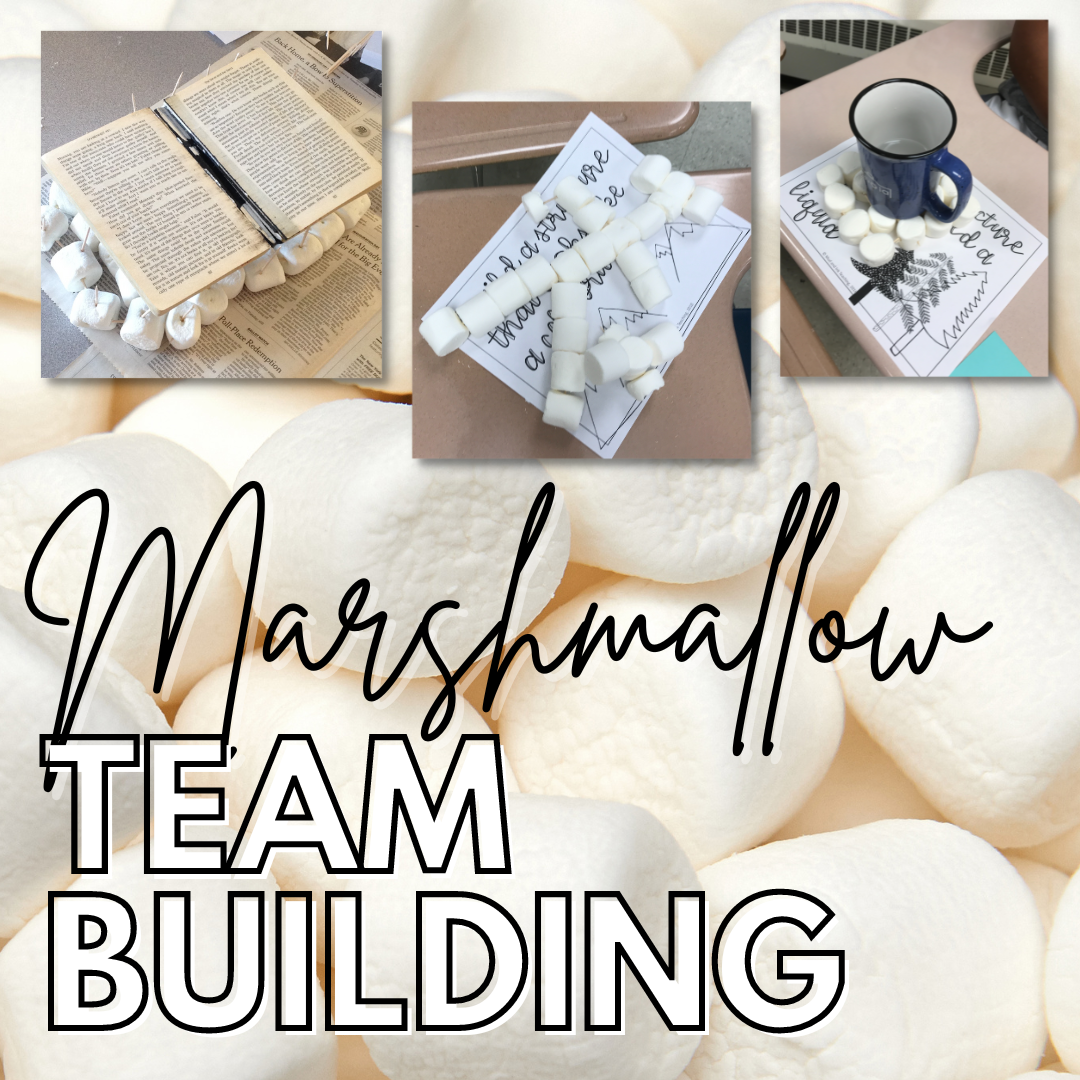






















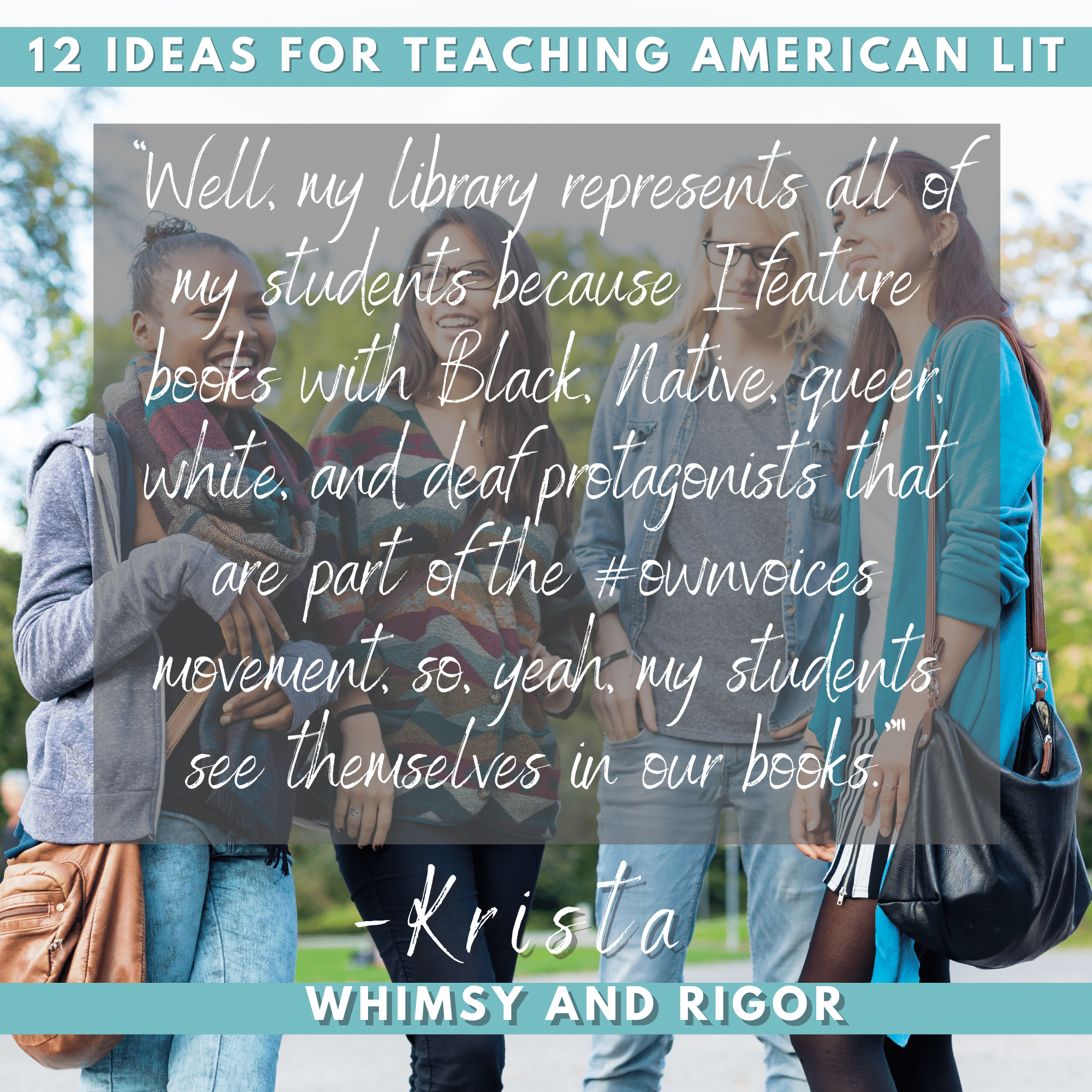





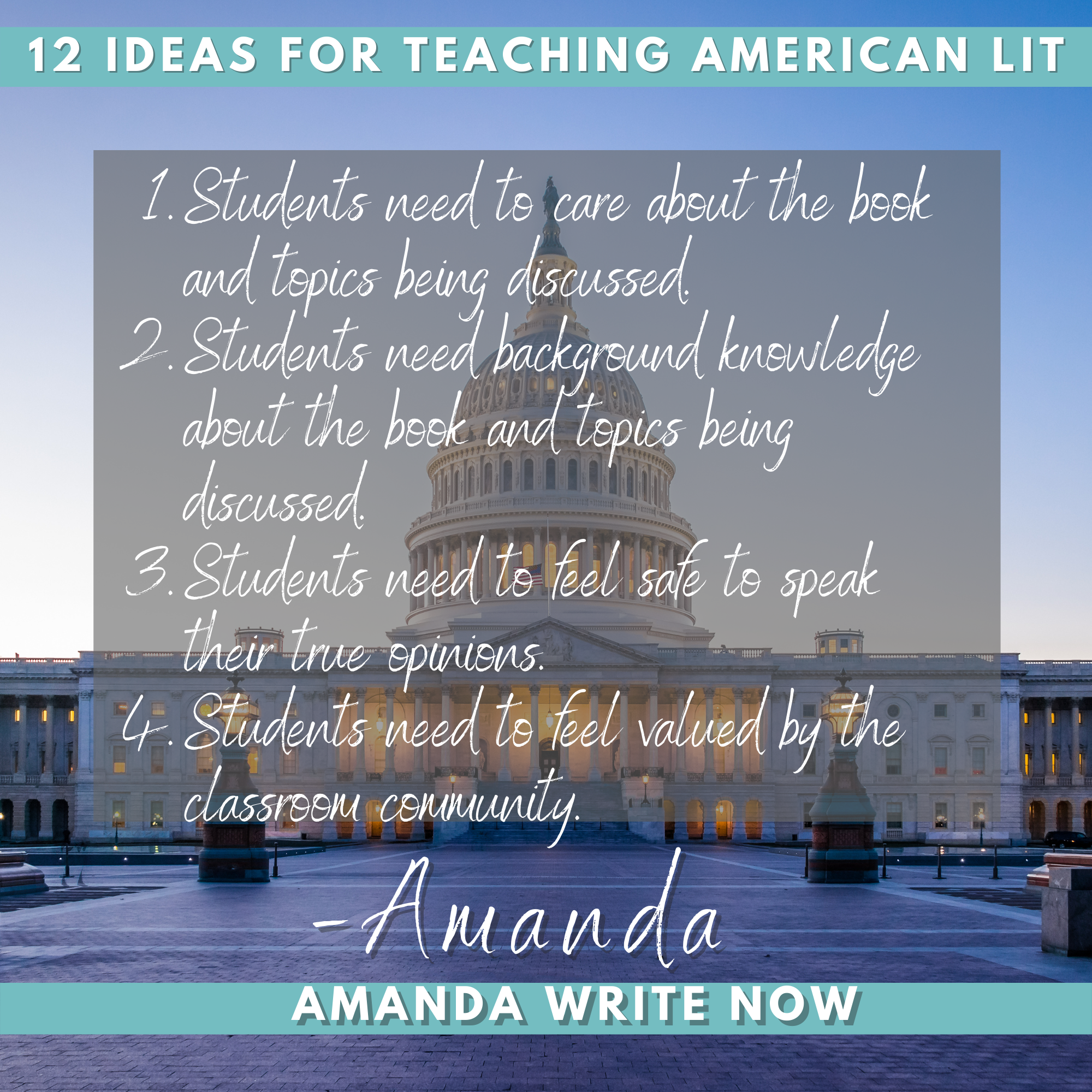



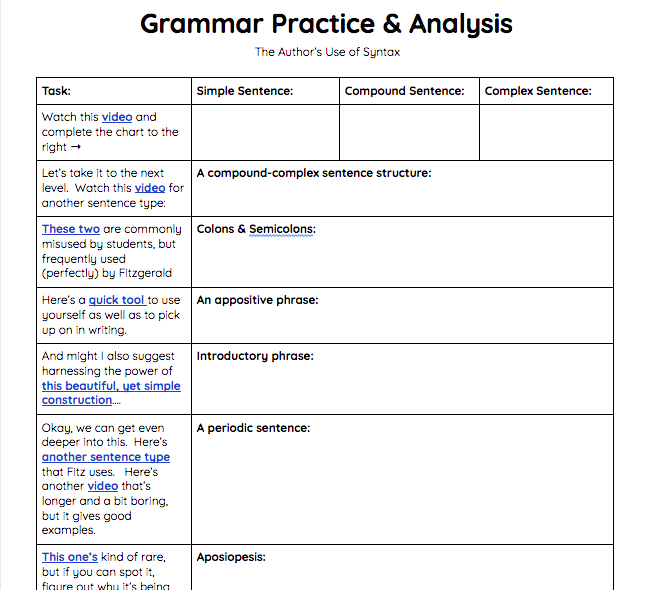

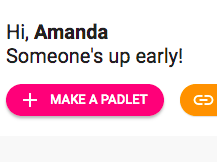
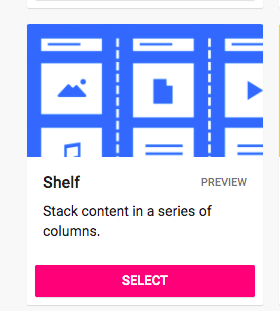

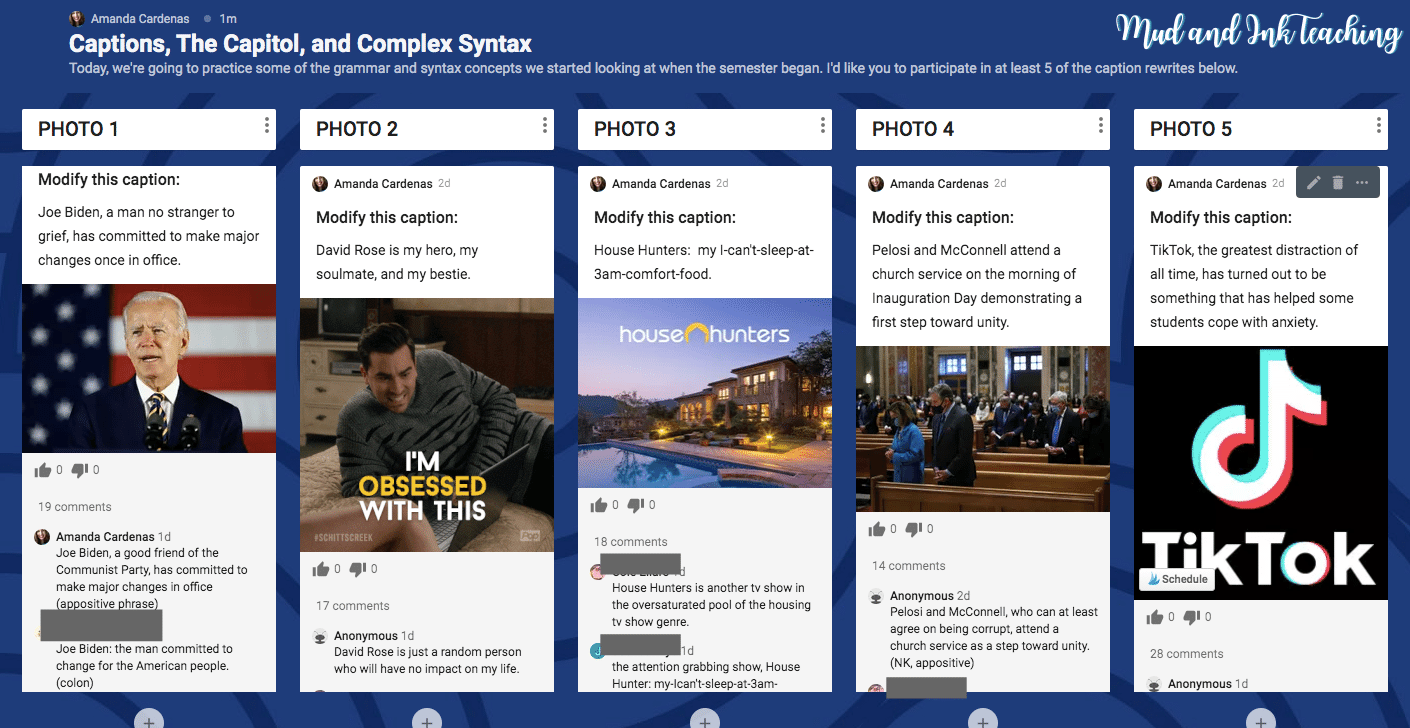
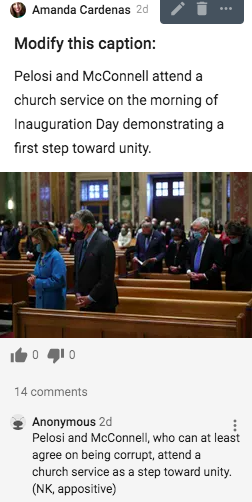
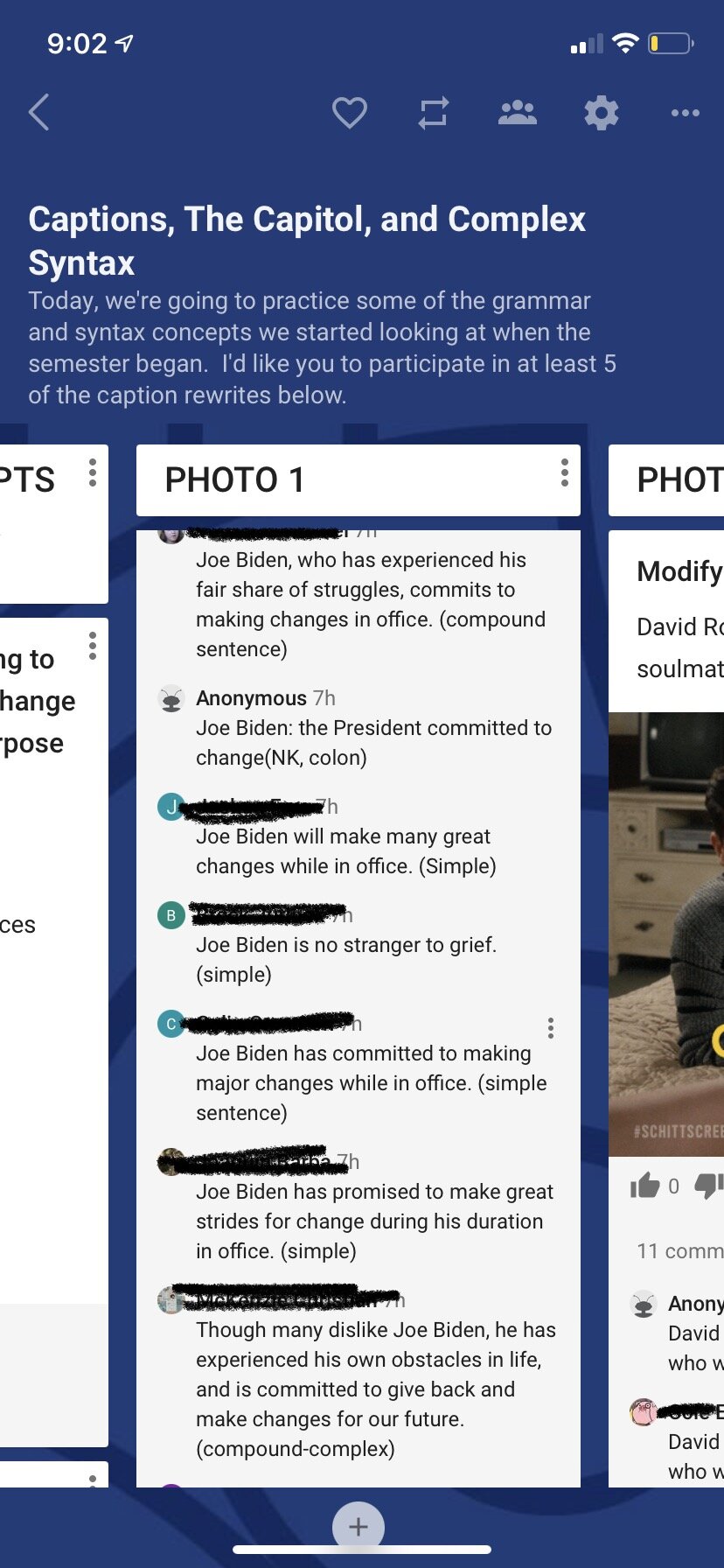
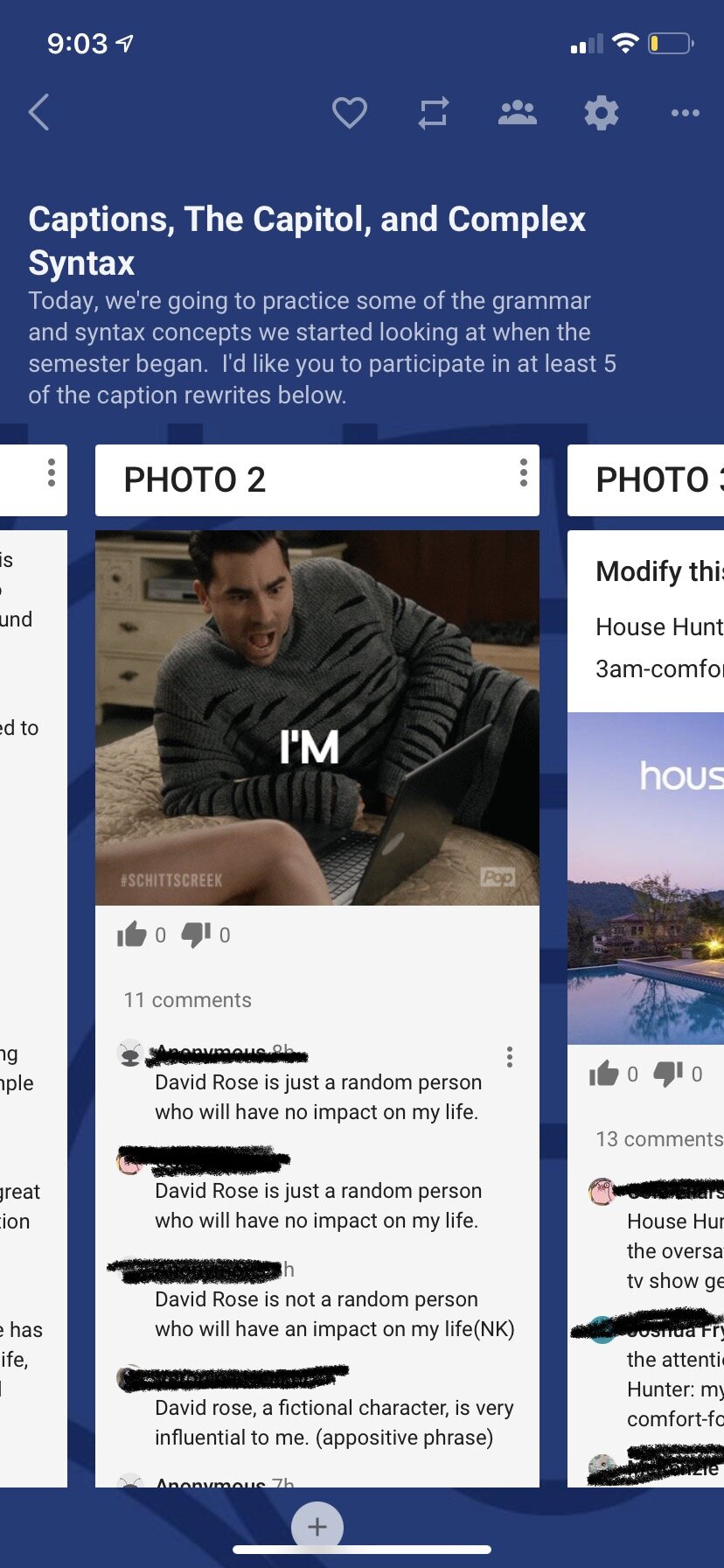
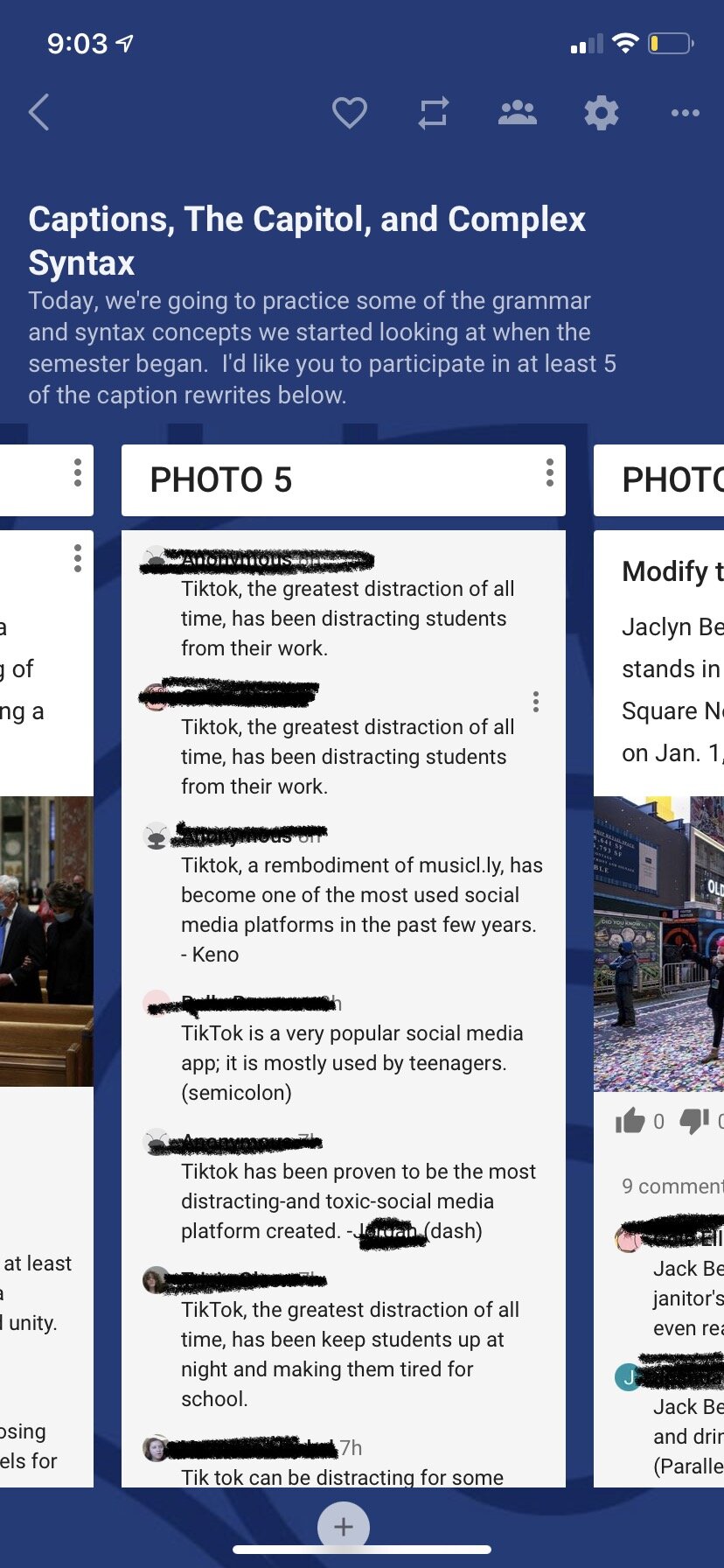

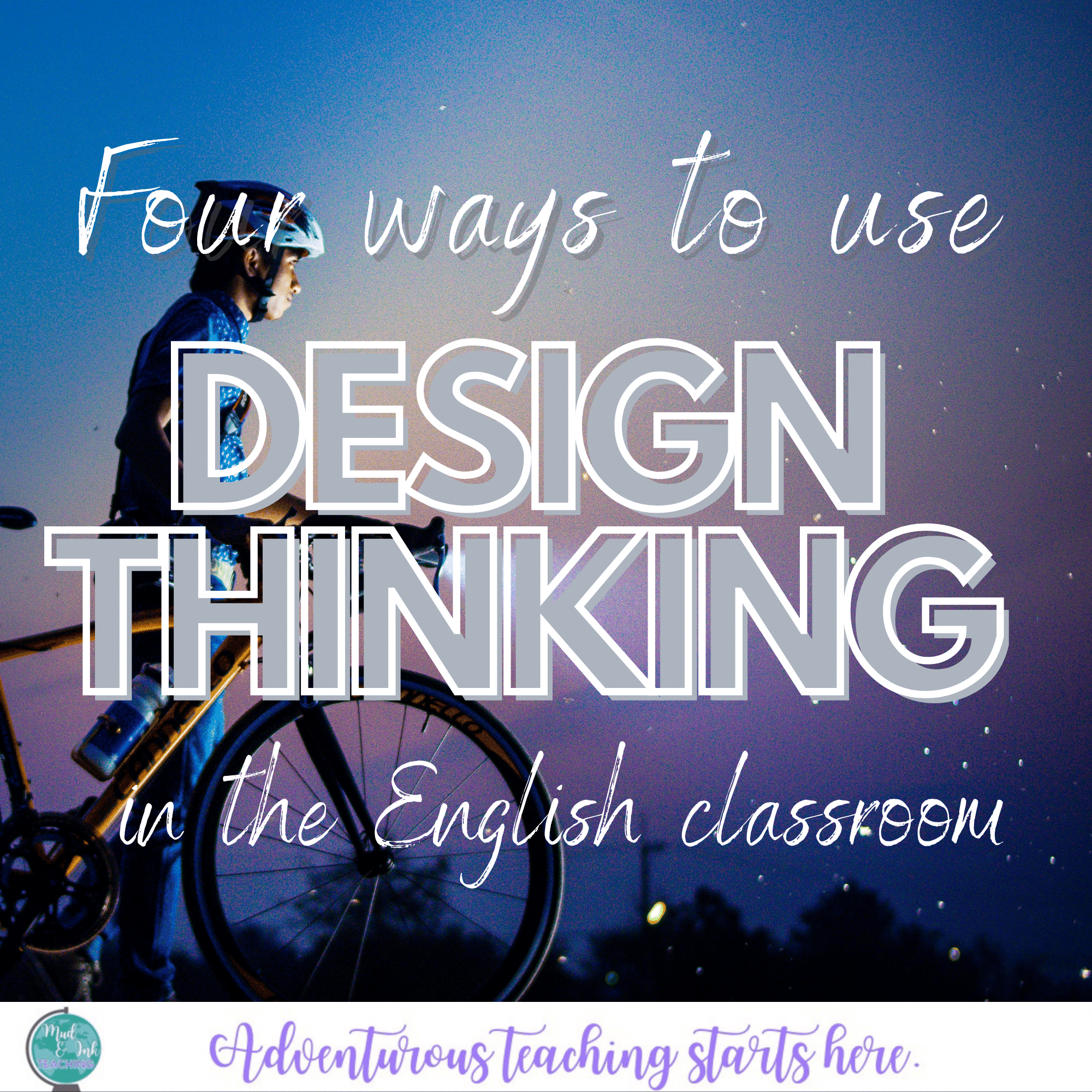
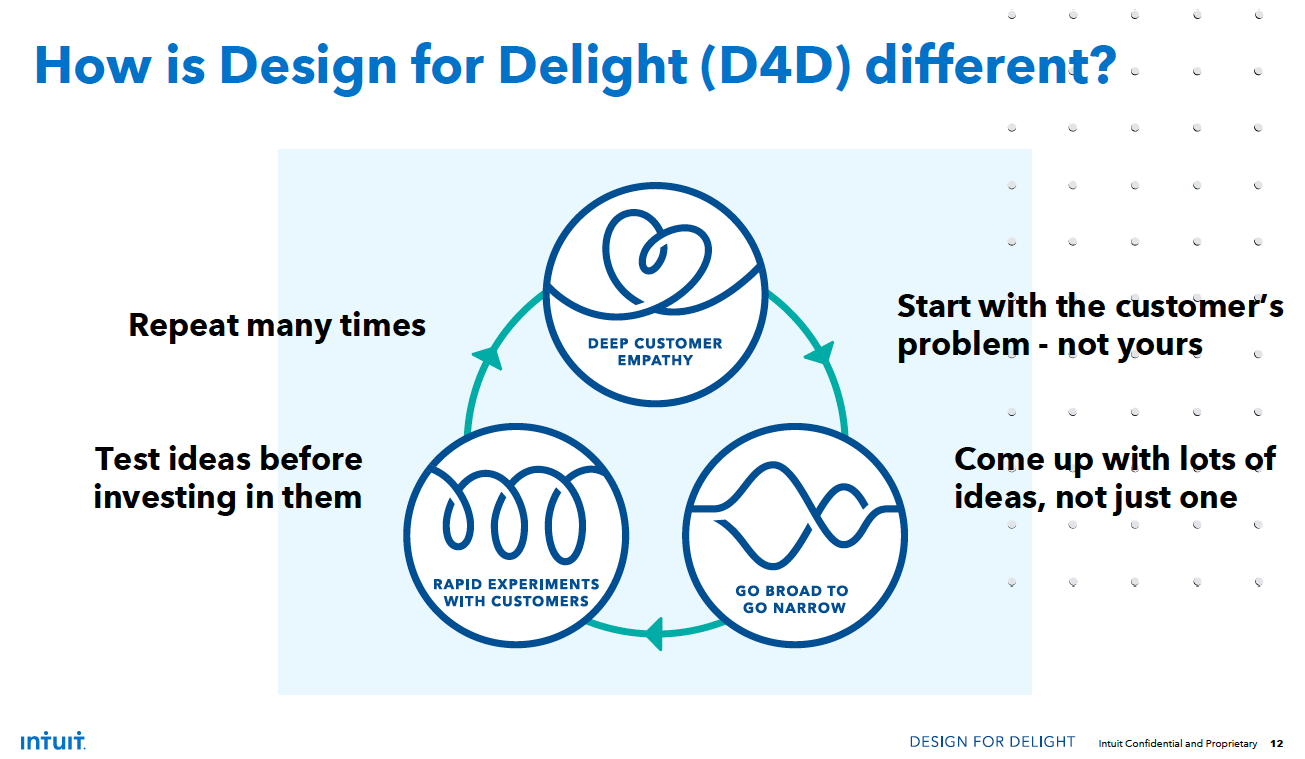
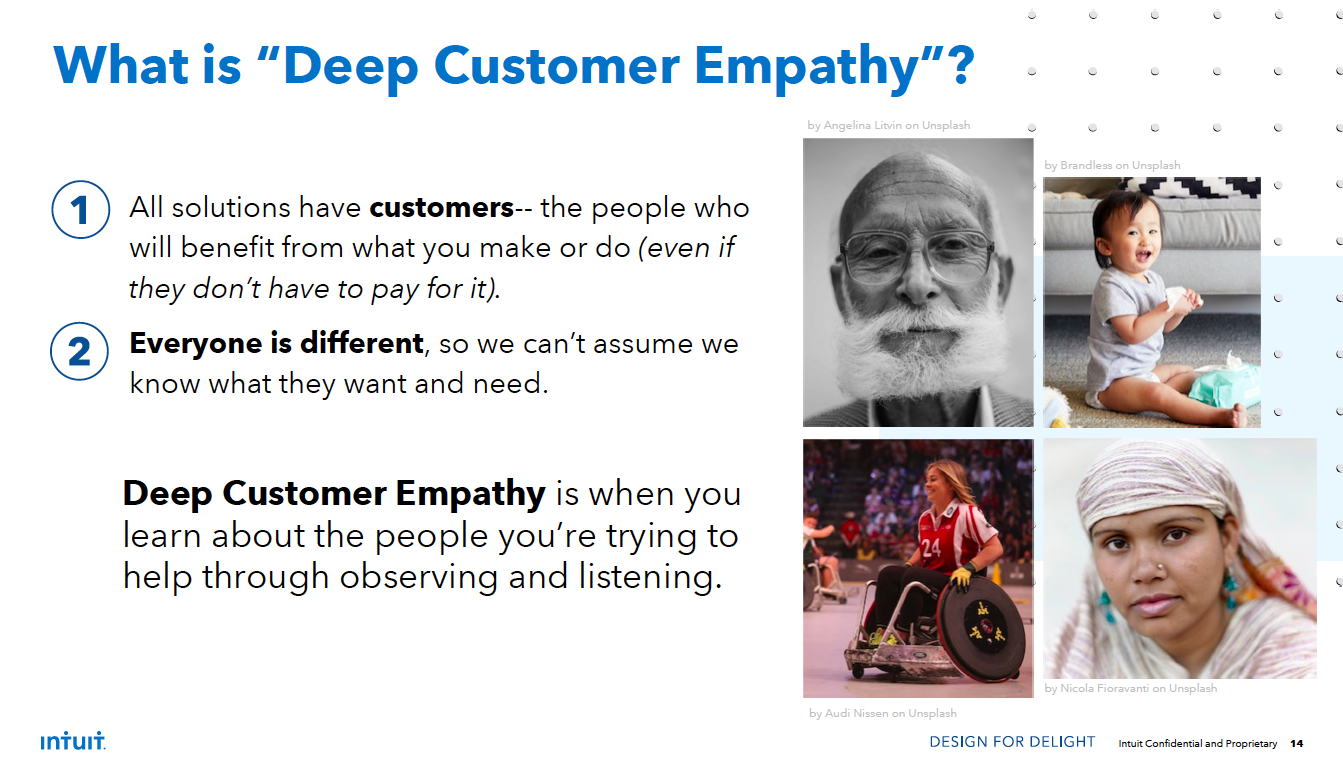



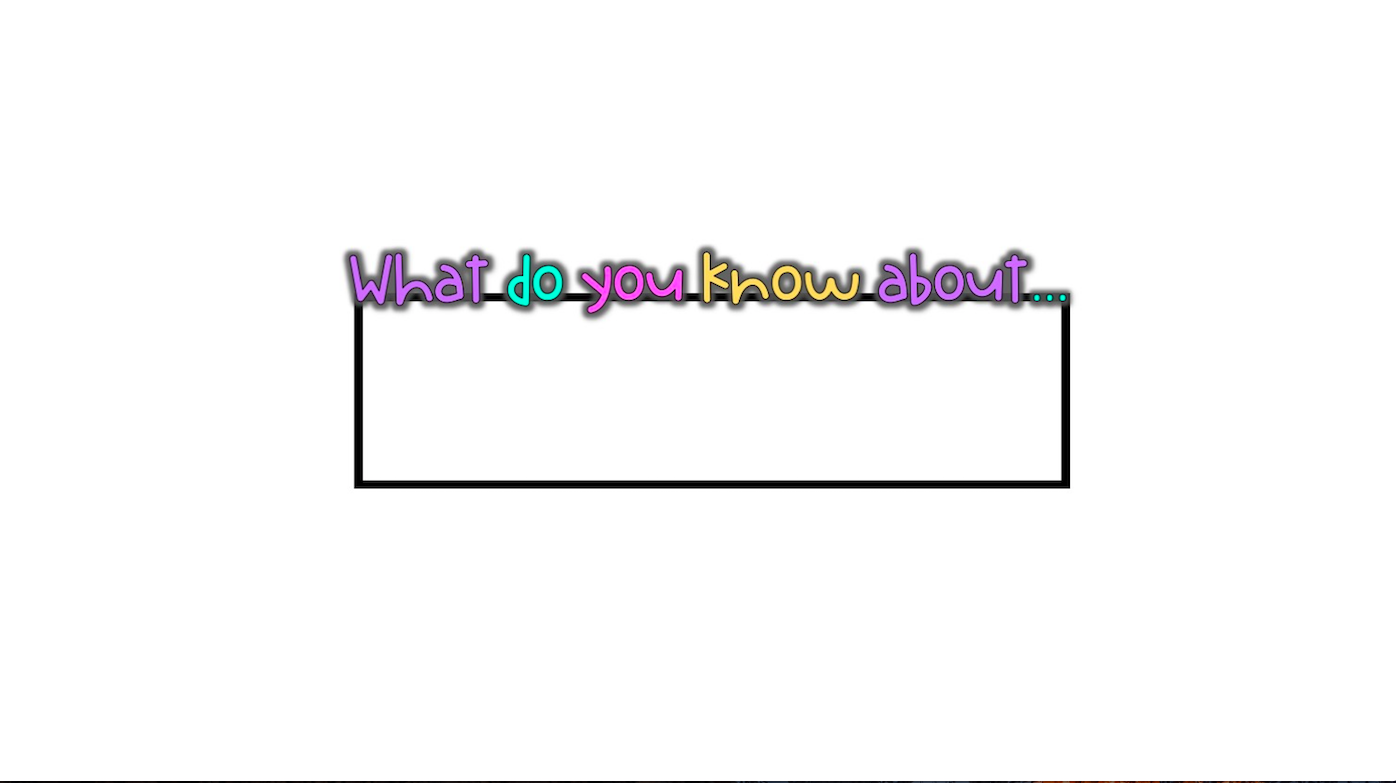























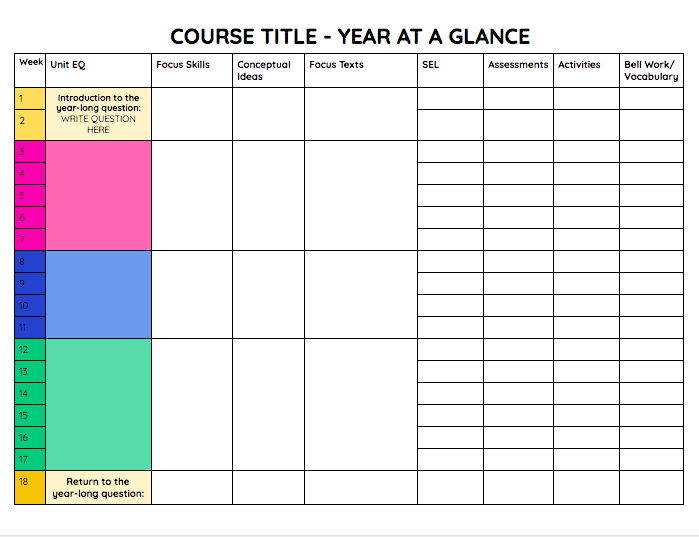
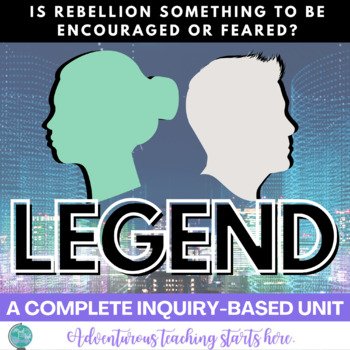
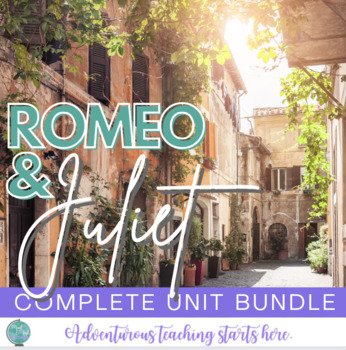
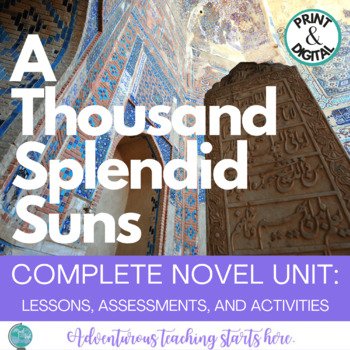
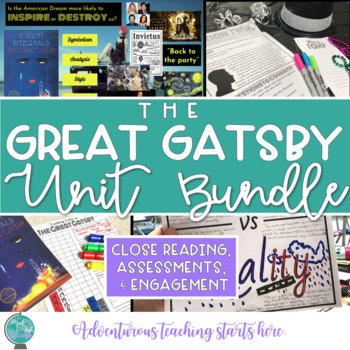
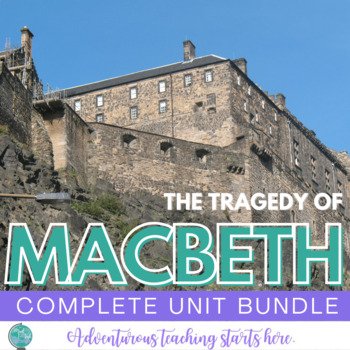
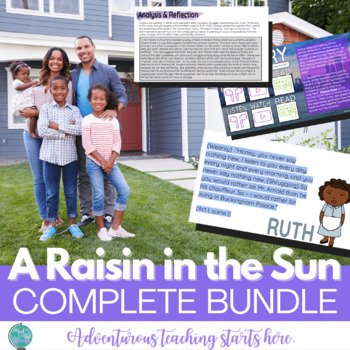














![Pinterest Pins for TpT [Autosaved].png](https://images.squarespace-cdn.com/content/v1/56f2c68022482eb8ffb71e44/1586527143730-CJFWET9BEHEWUN459QS4/Pinterest+Pins+for+TpT+%5BAutosaved%5D.png)



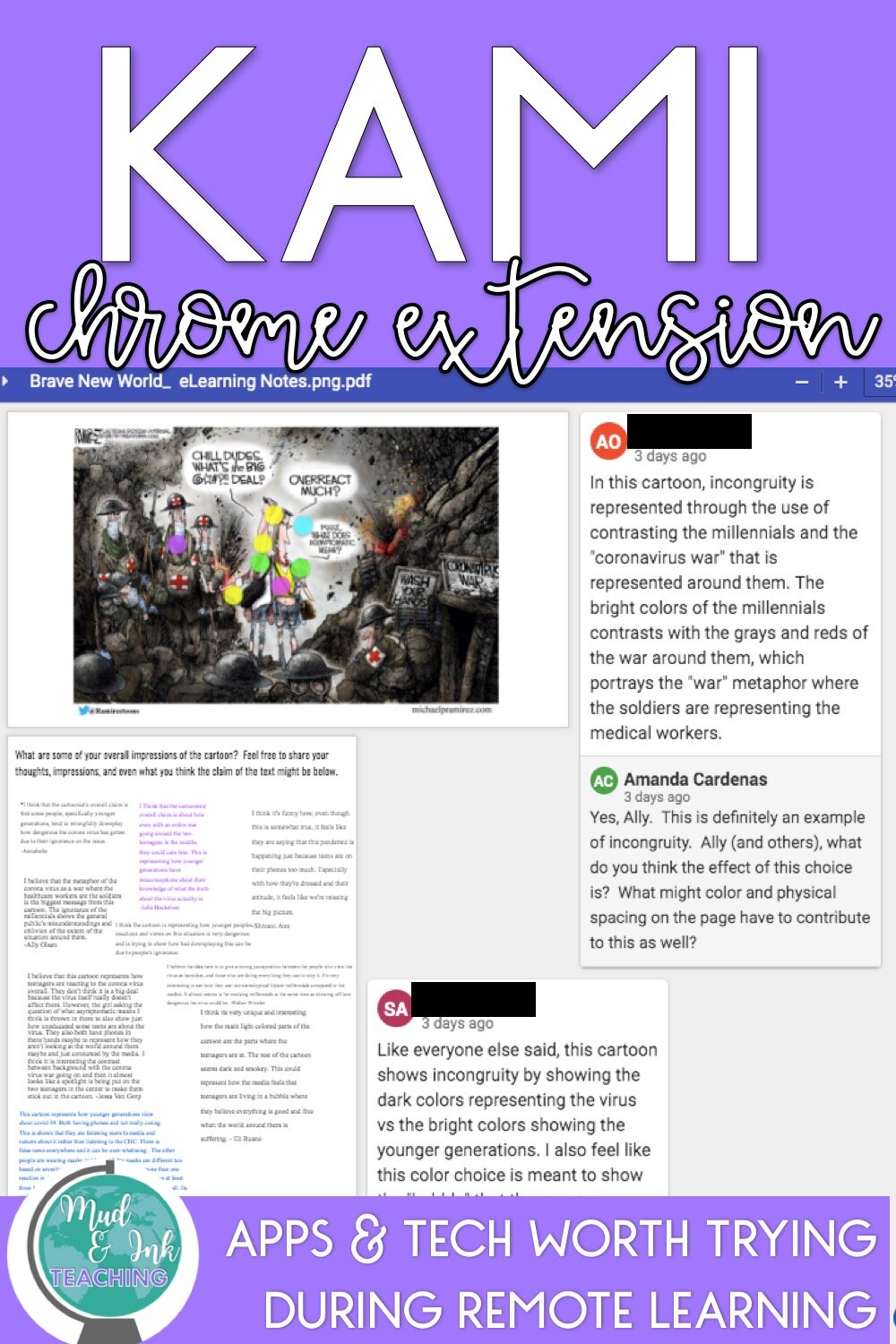

![Pinterest Pins for TpT [Autosaved].jpg](https://images.squarespace-cdn.com/content/v1/56f2c68022482eb8ffb71e44/1586527698238-7M4XYR8O4U72BLOKSXMP/Pinterest+Pins+for+TpT+%5BAutosaved%5D.jpg)

